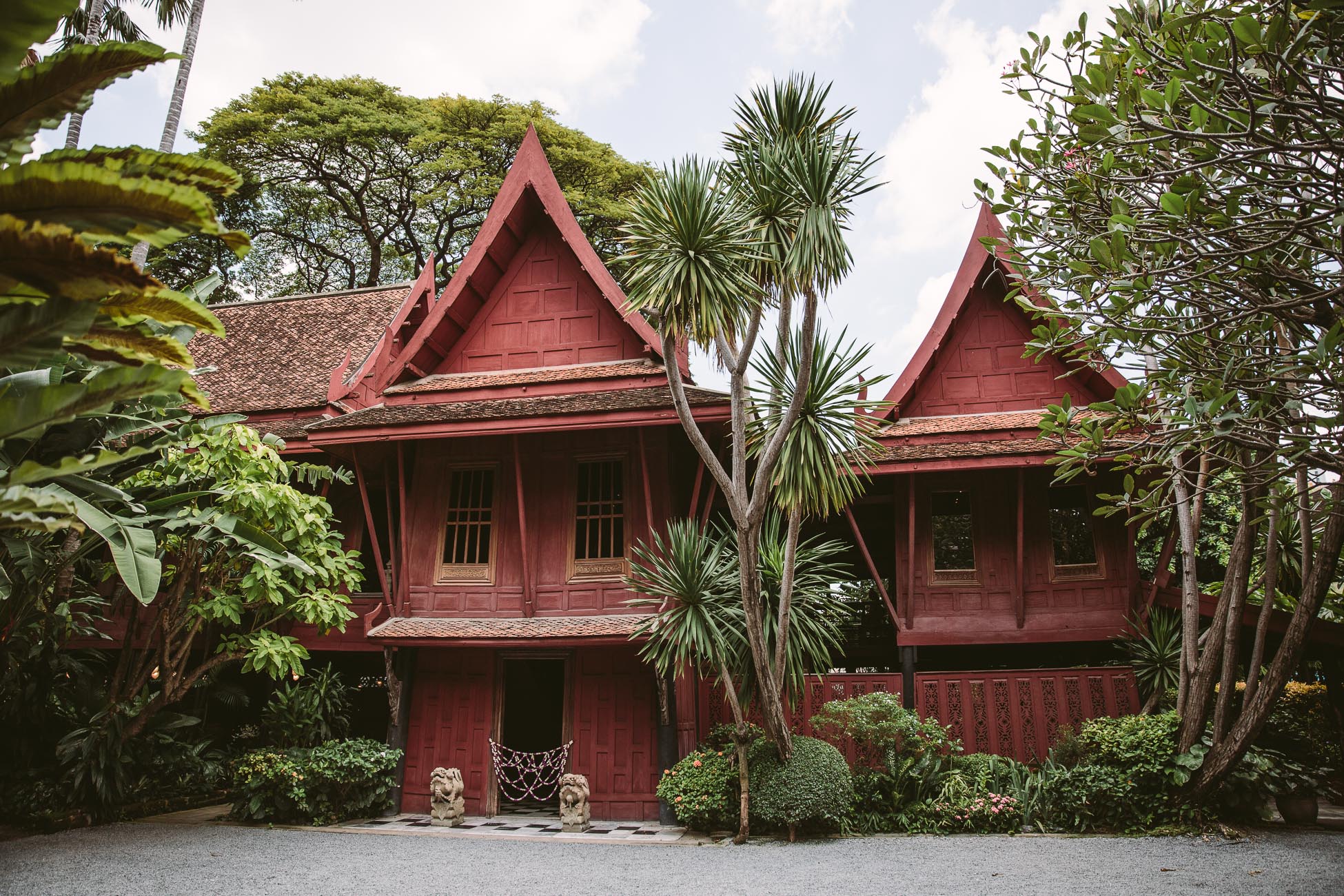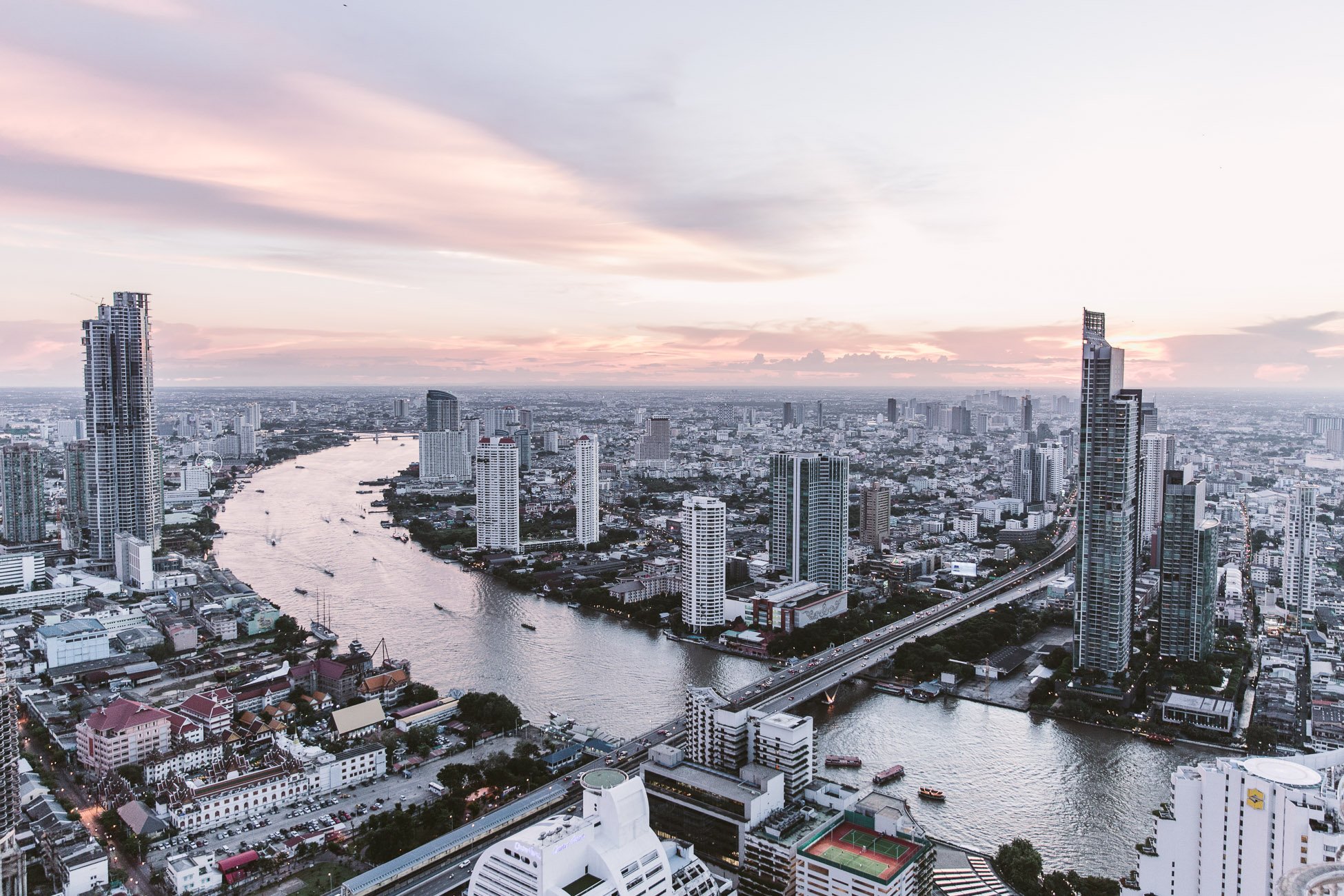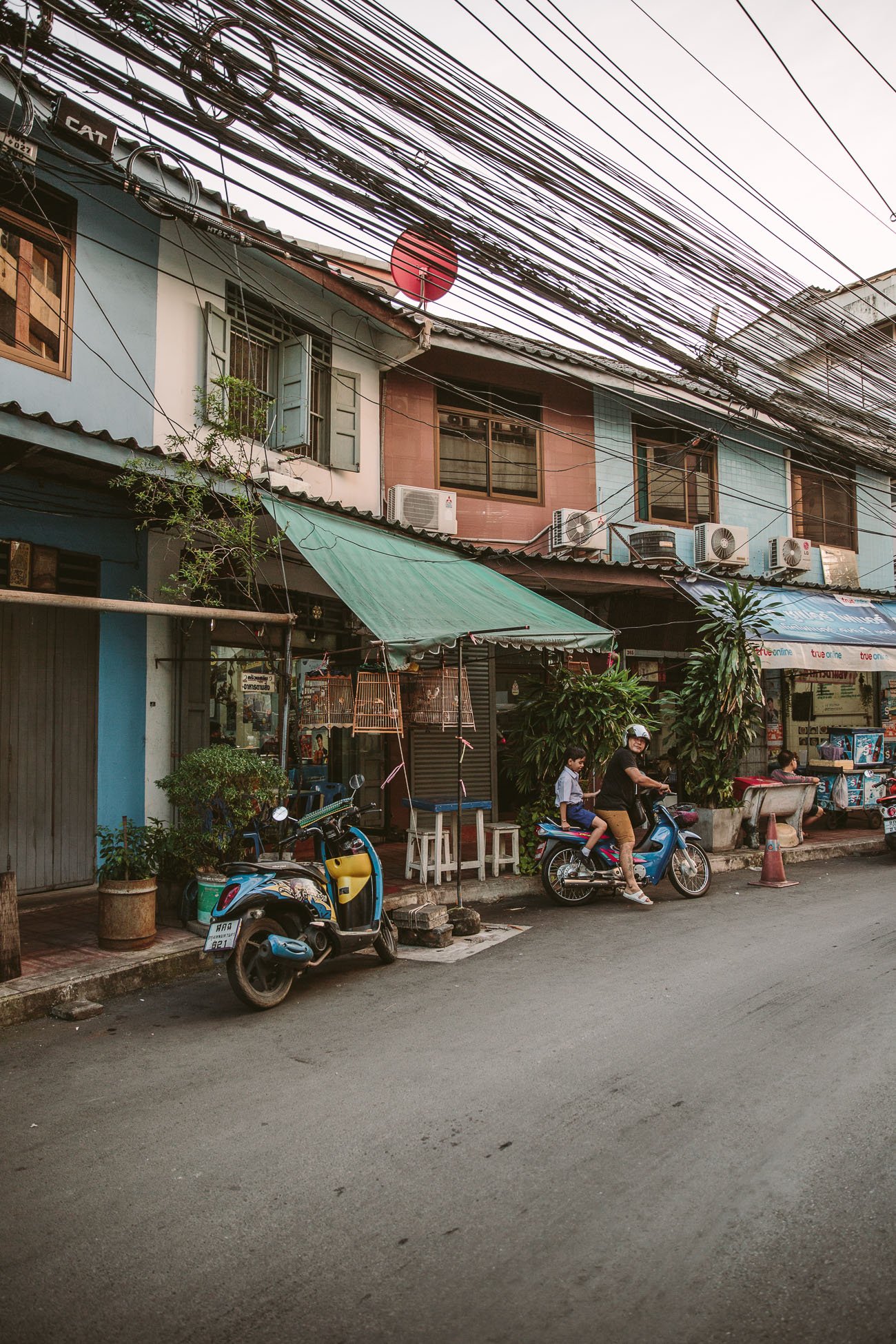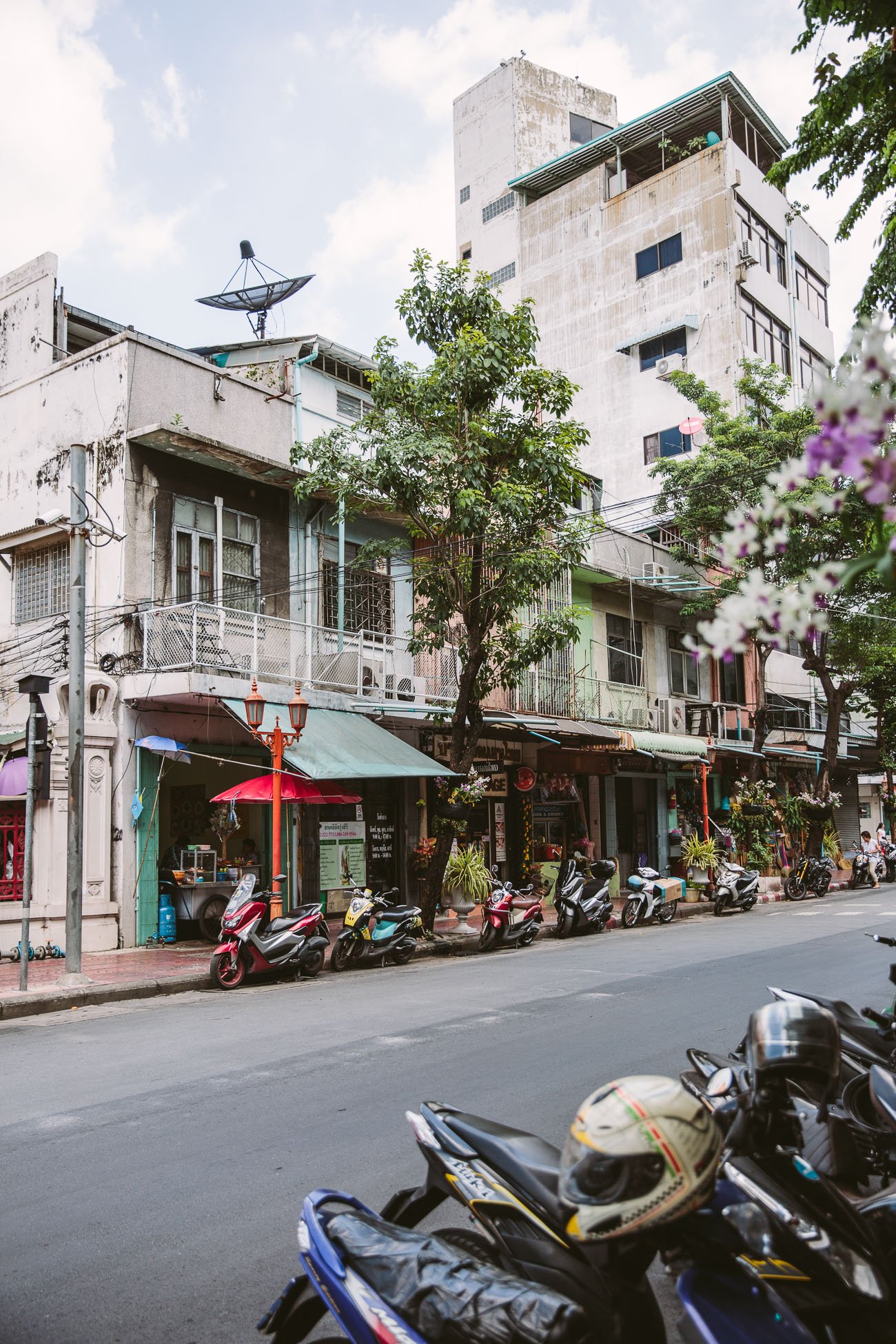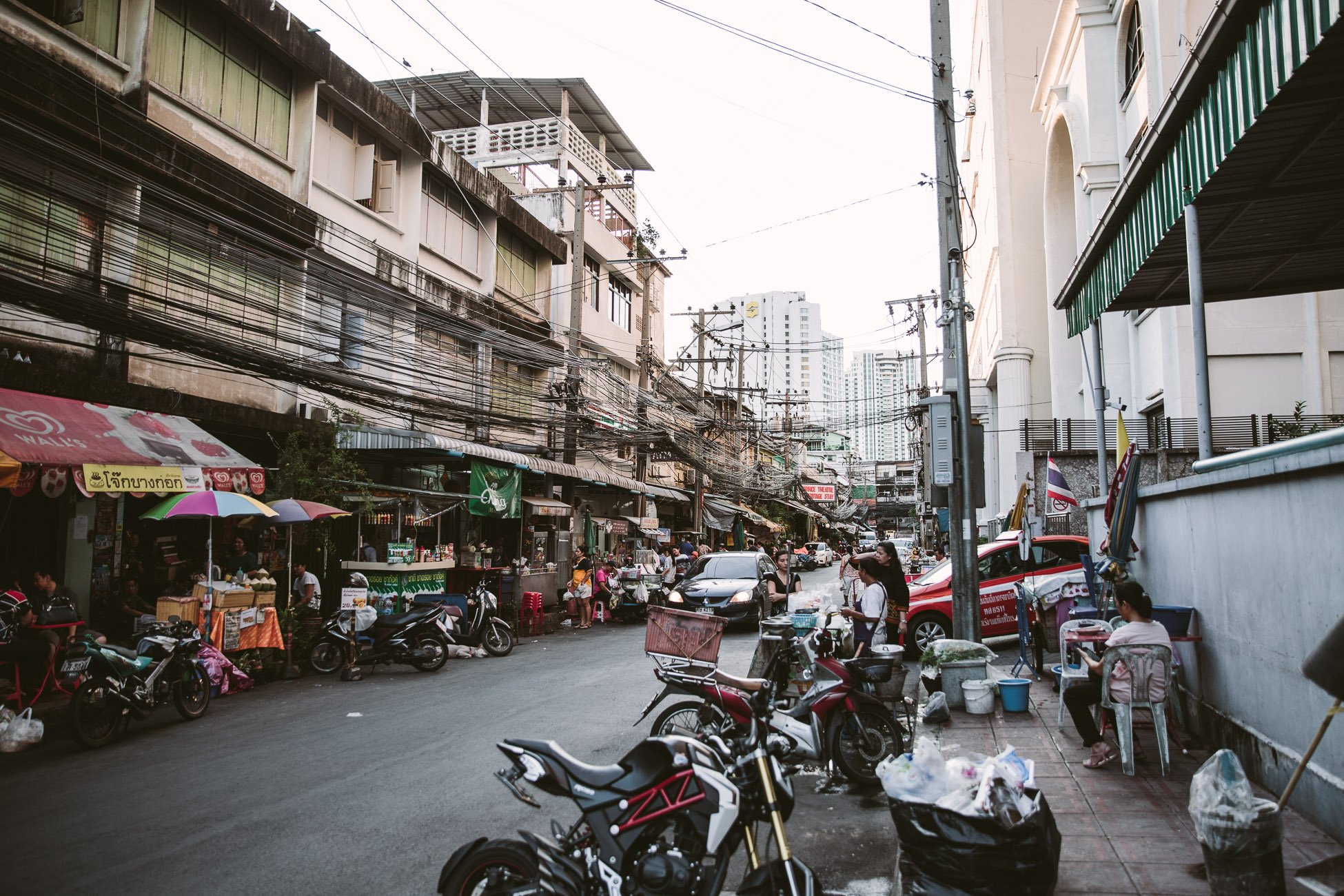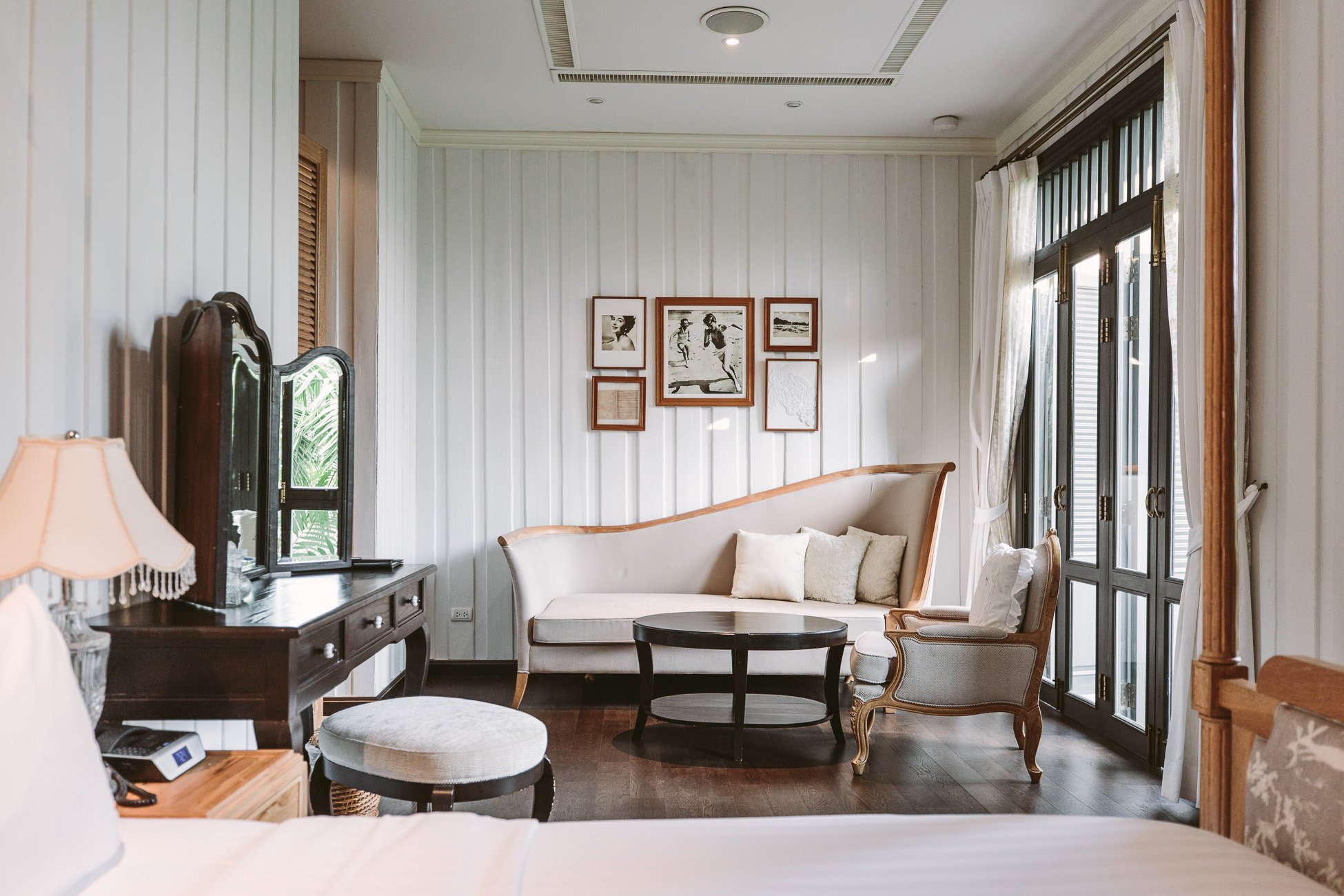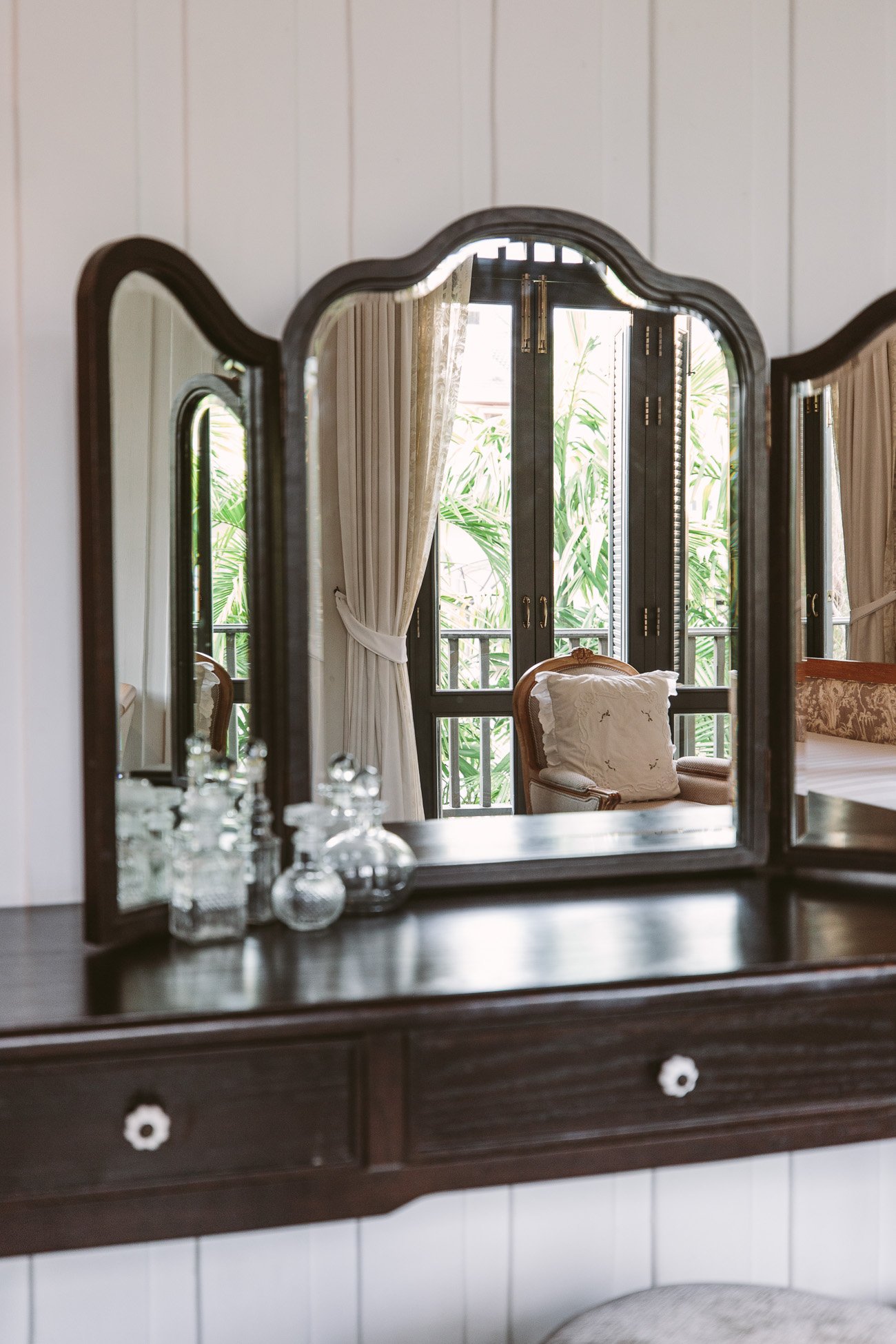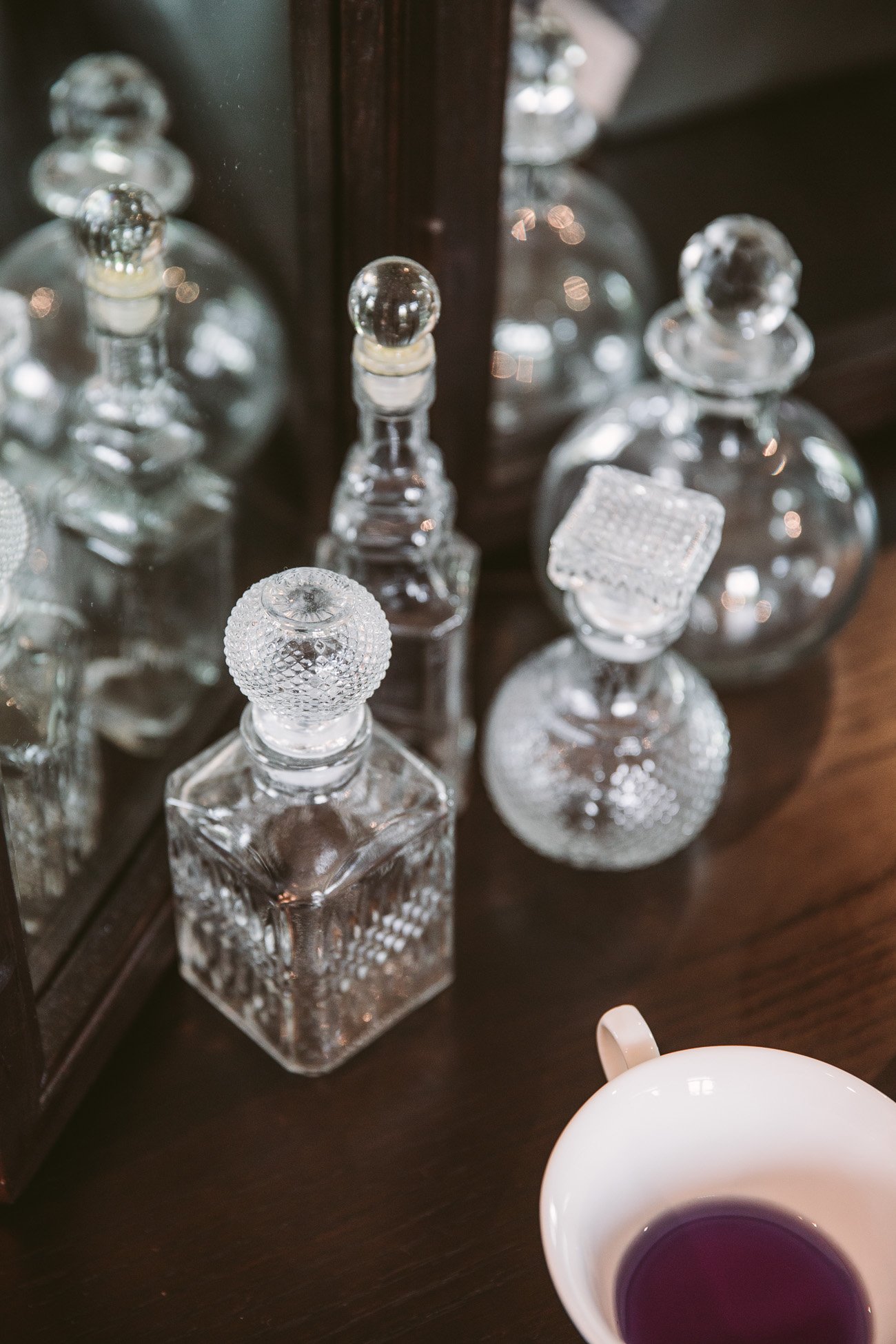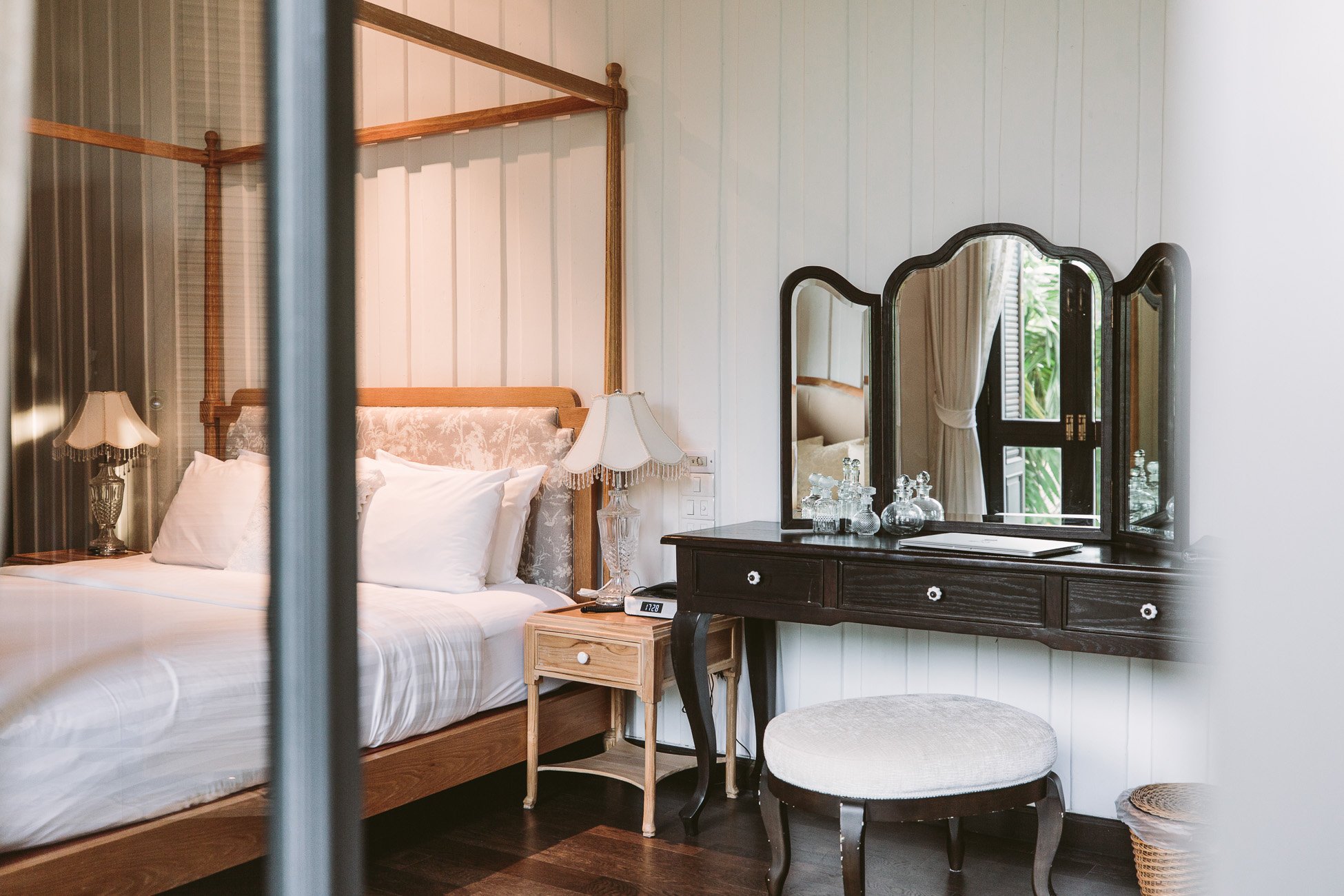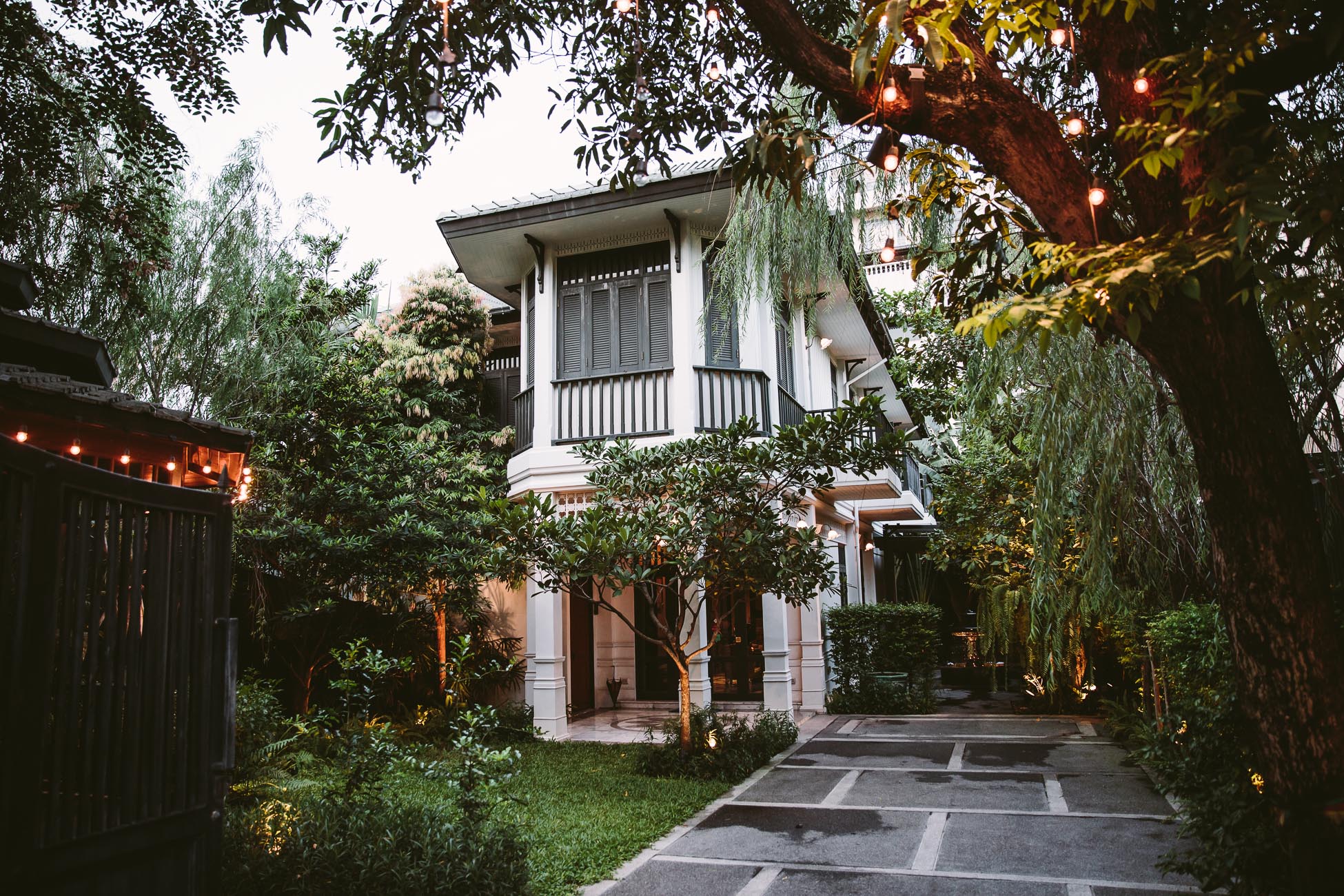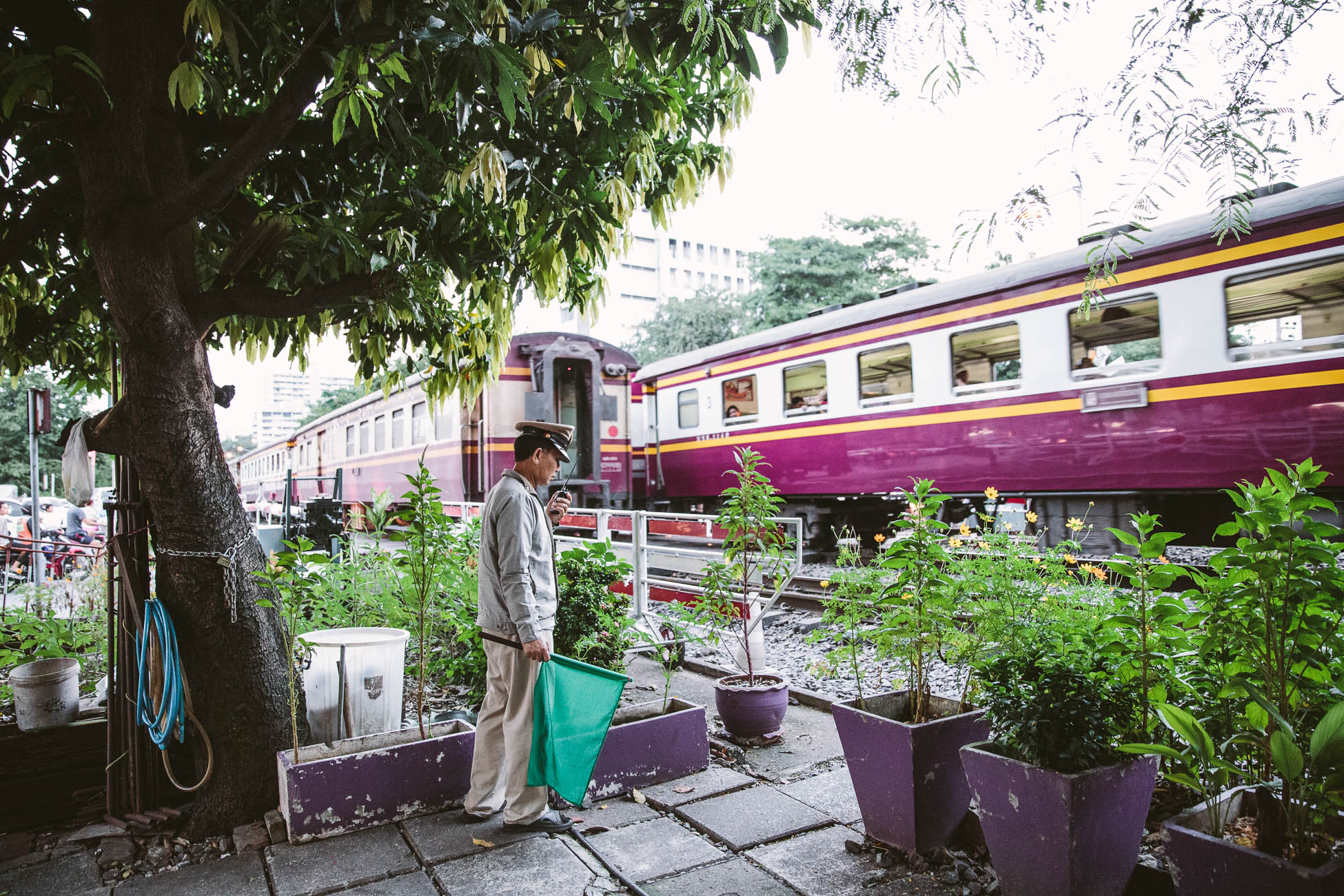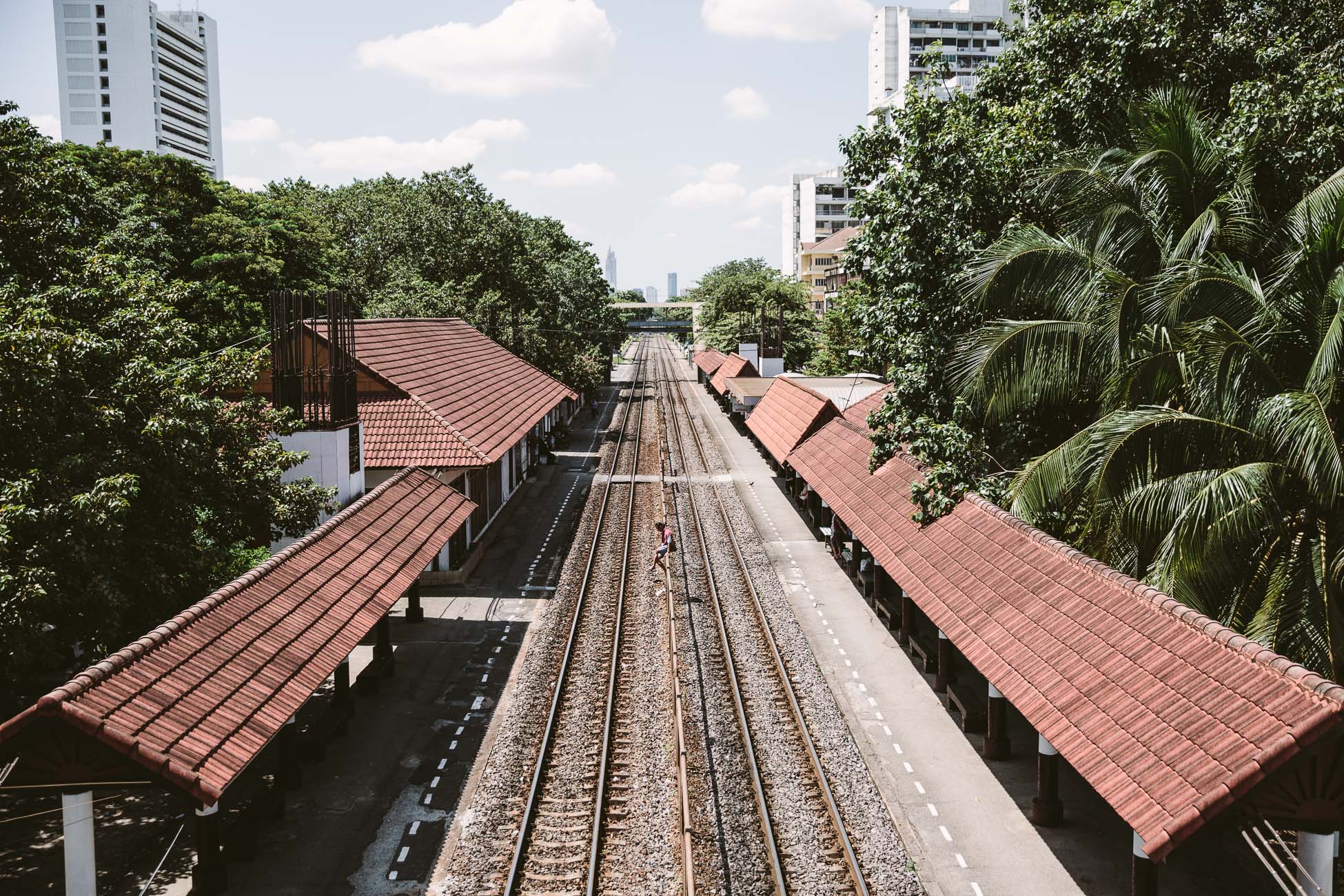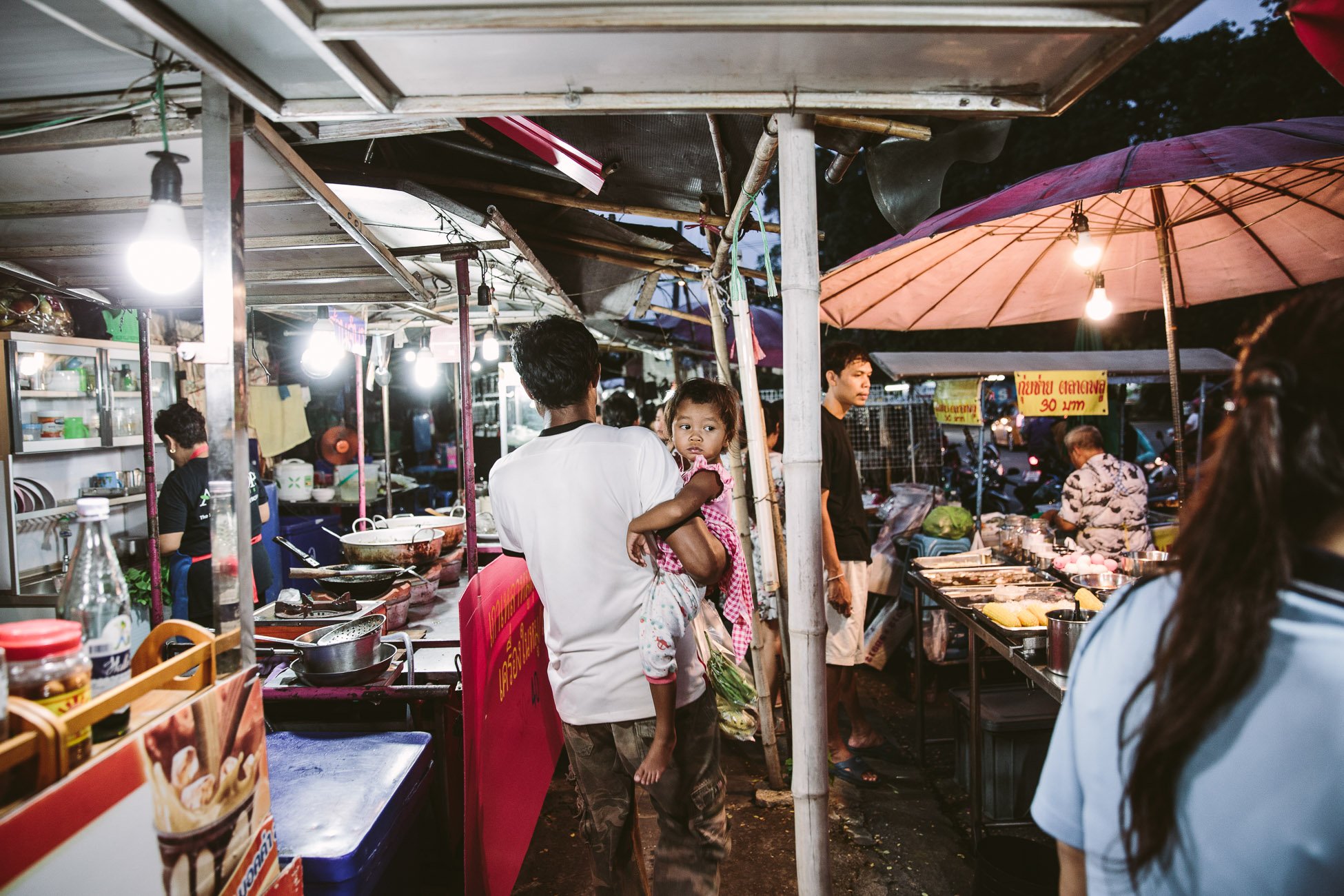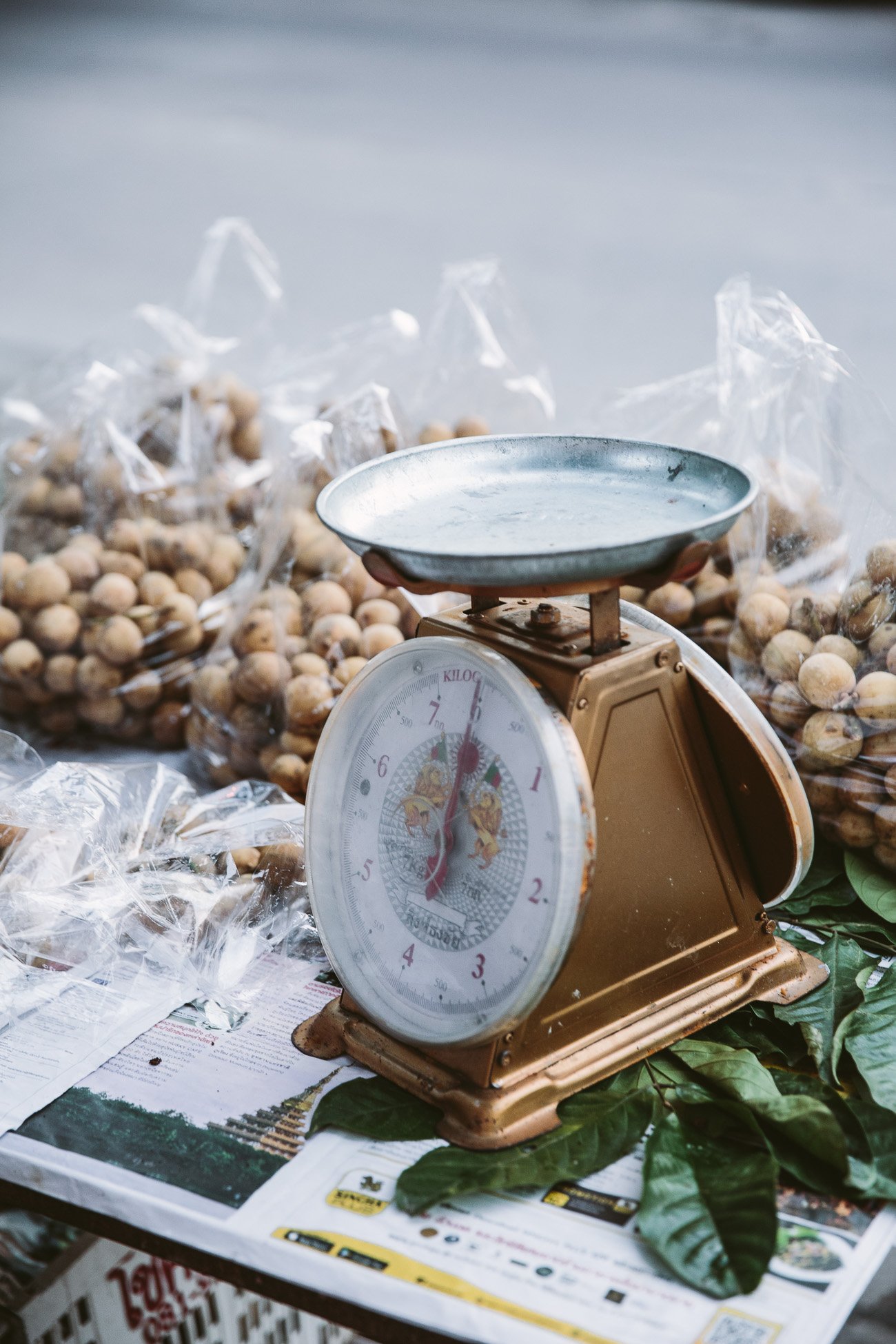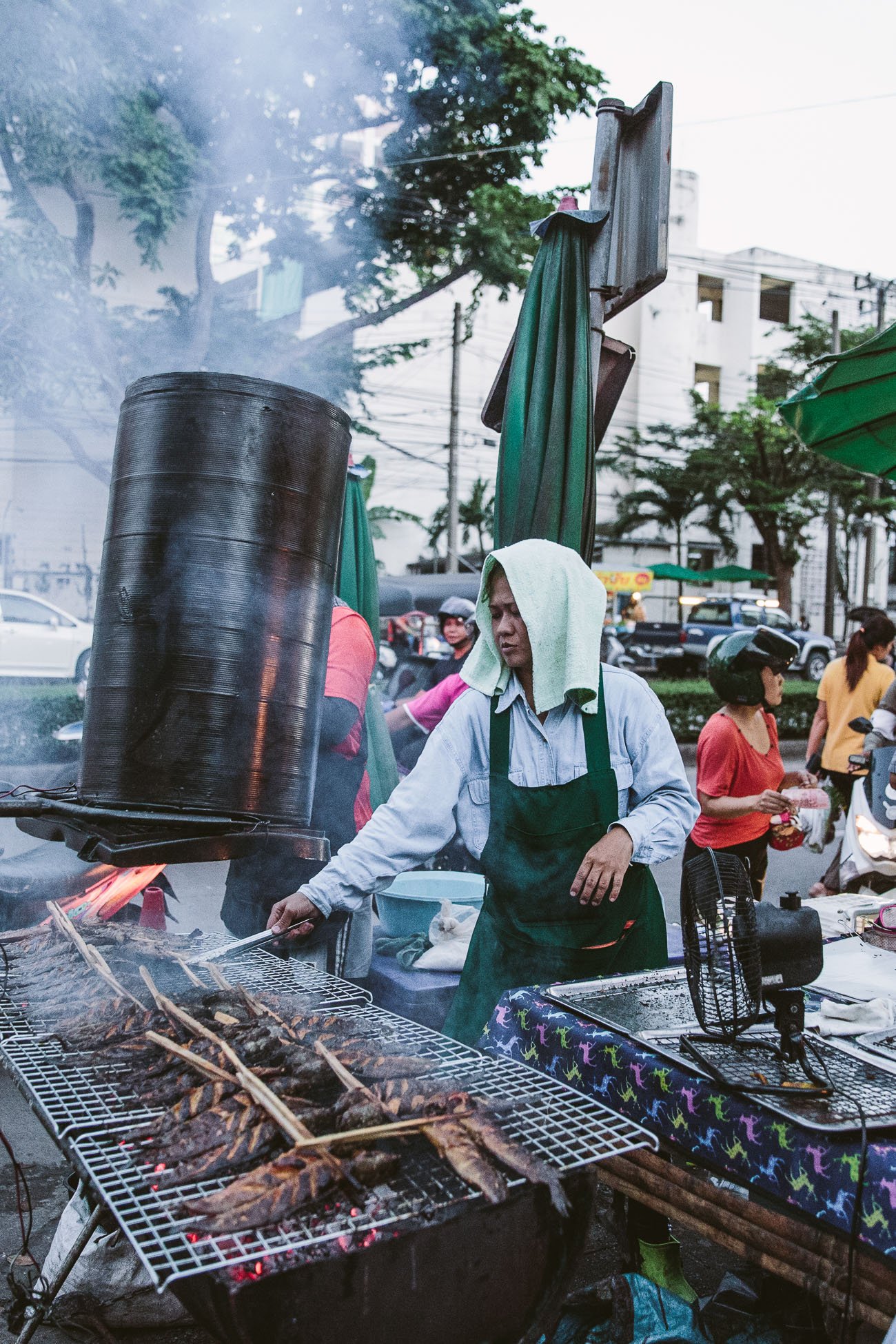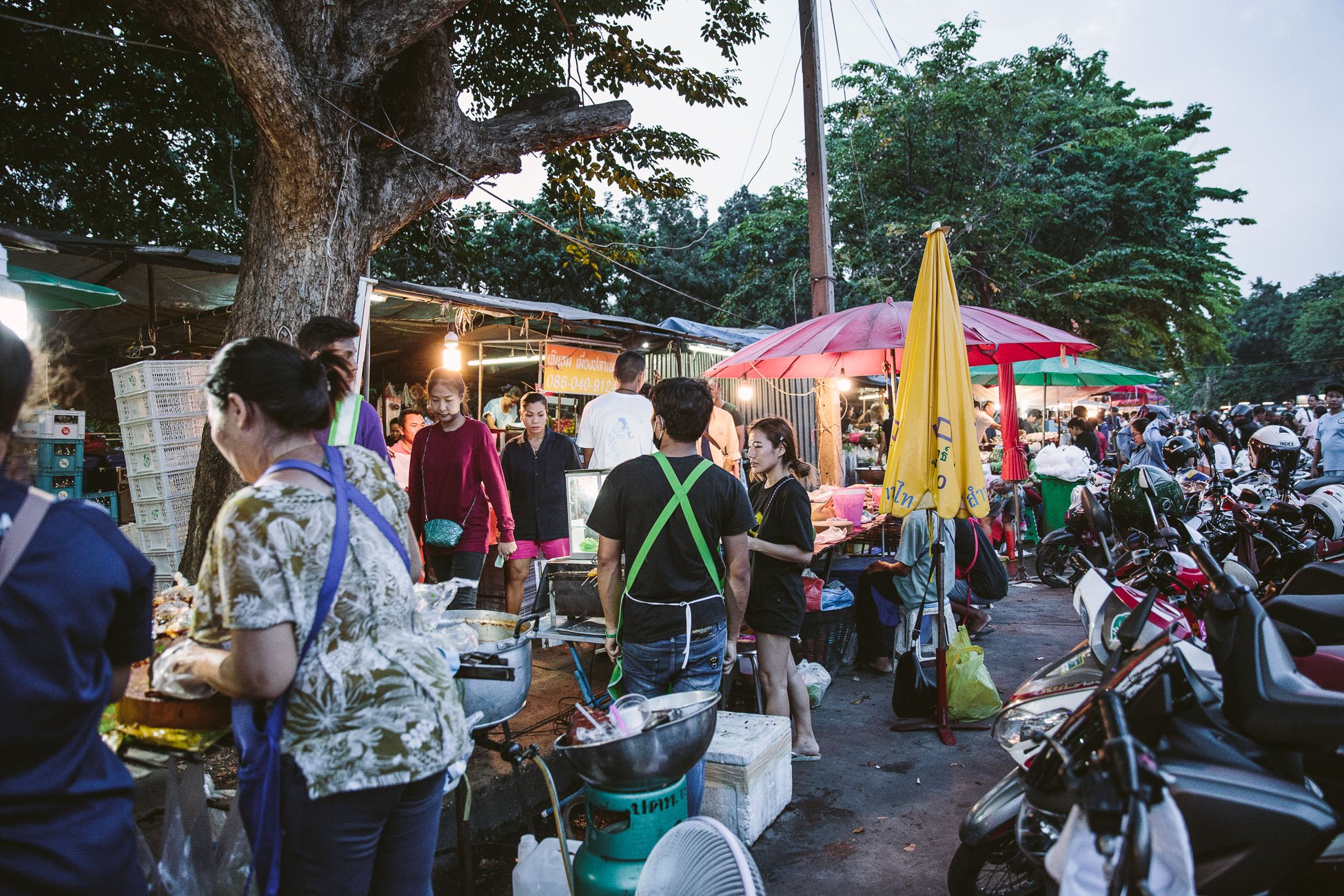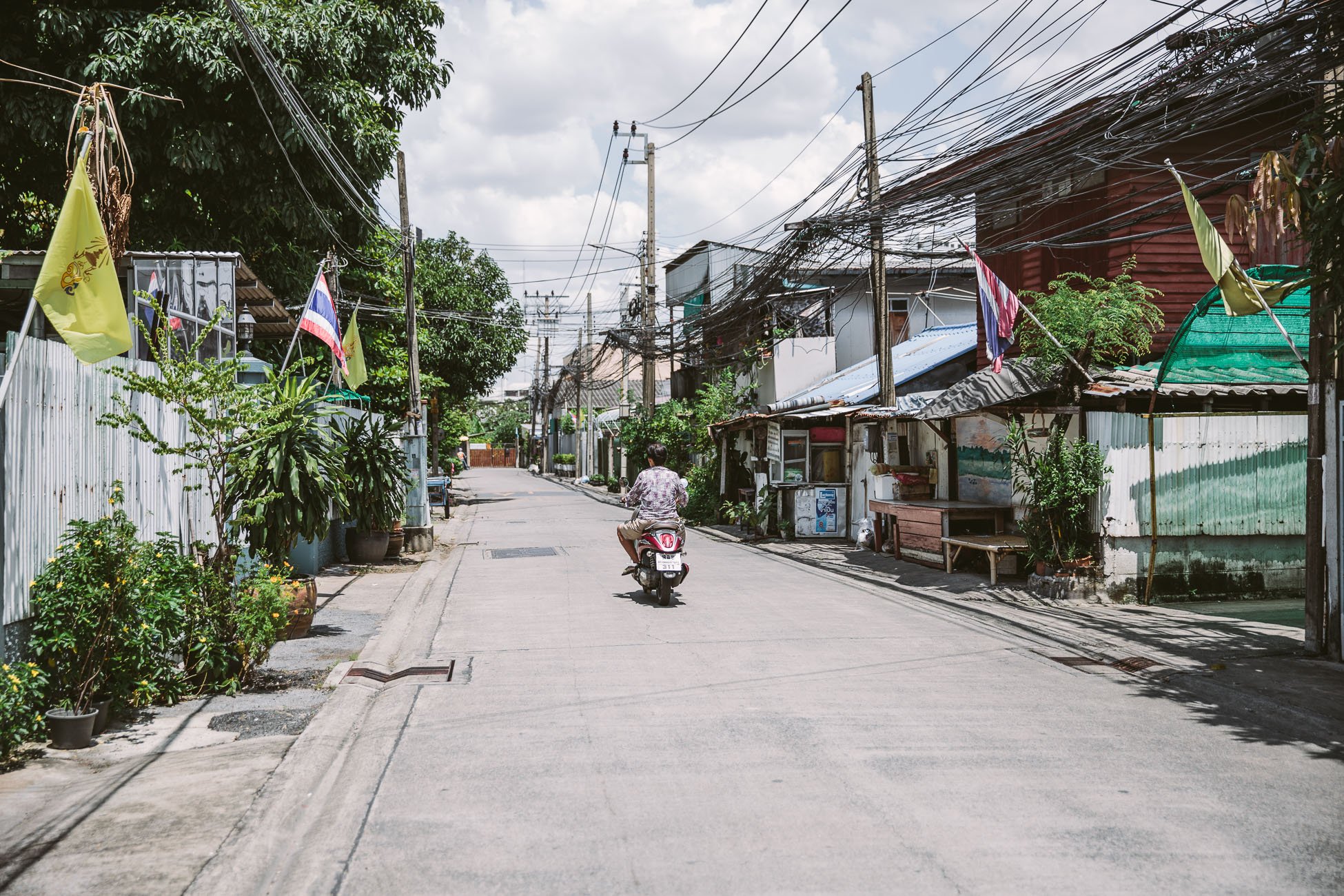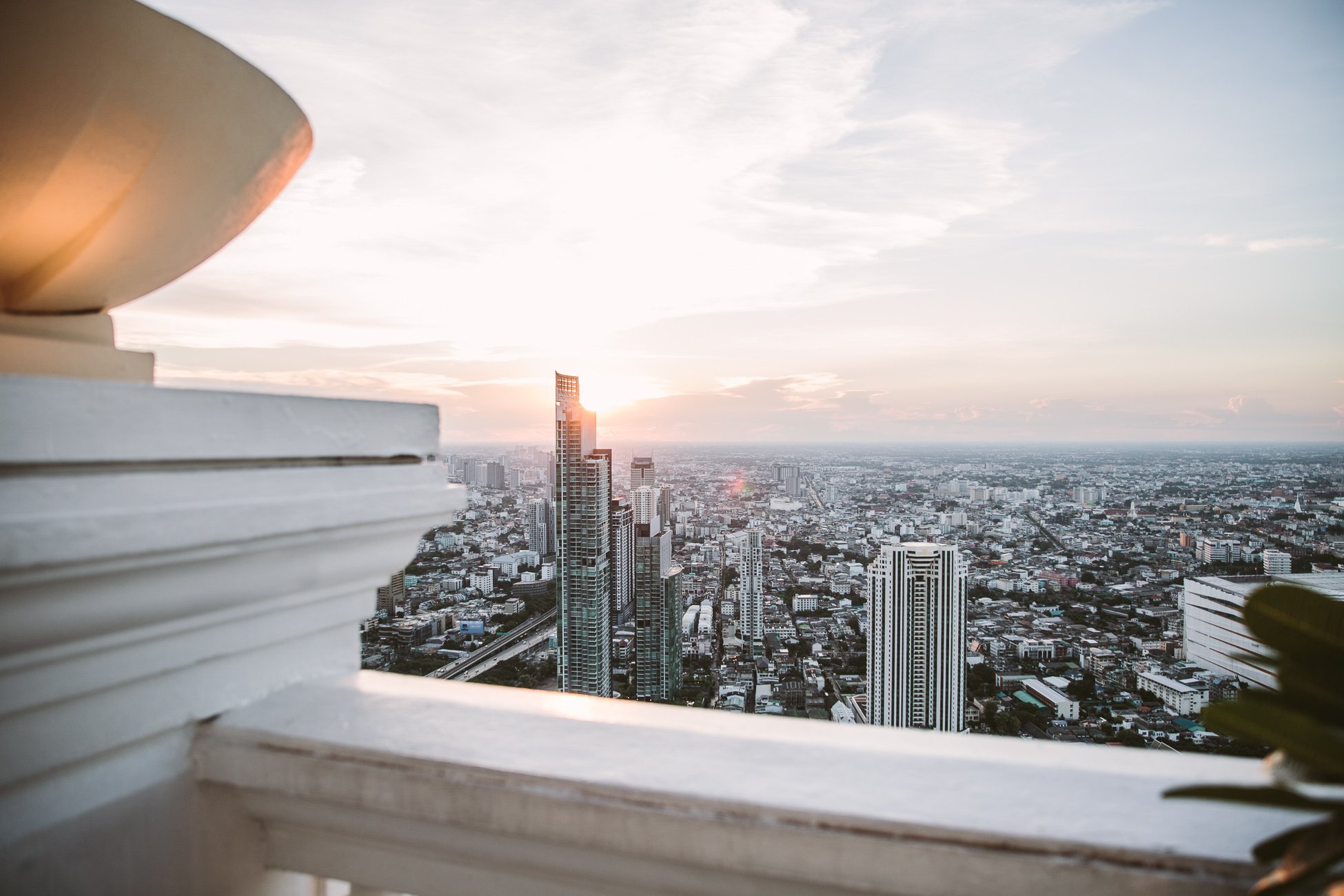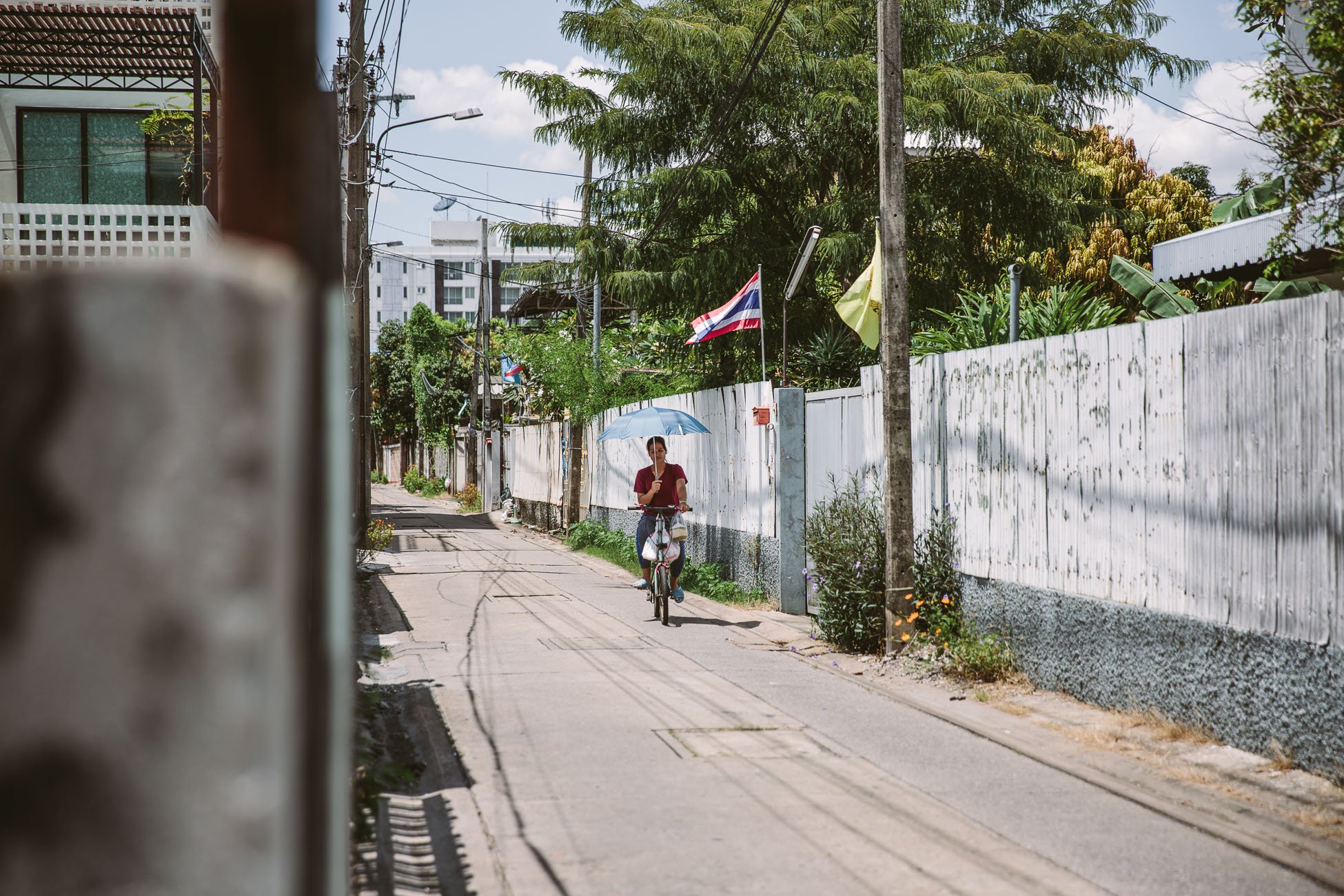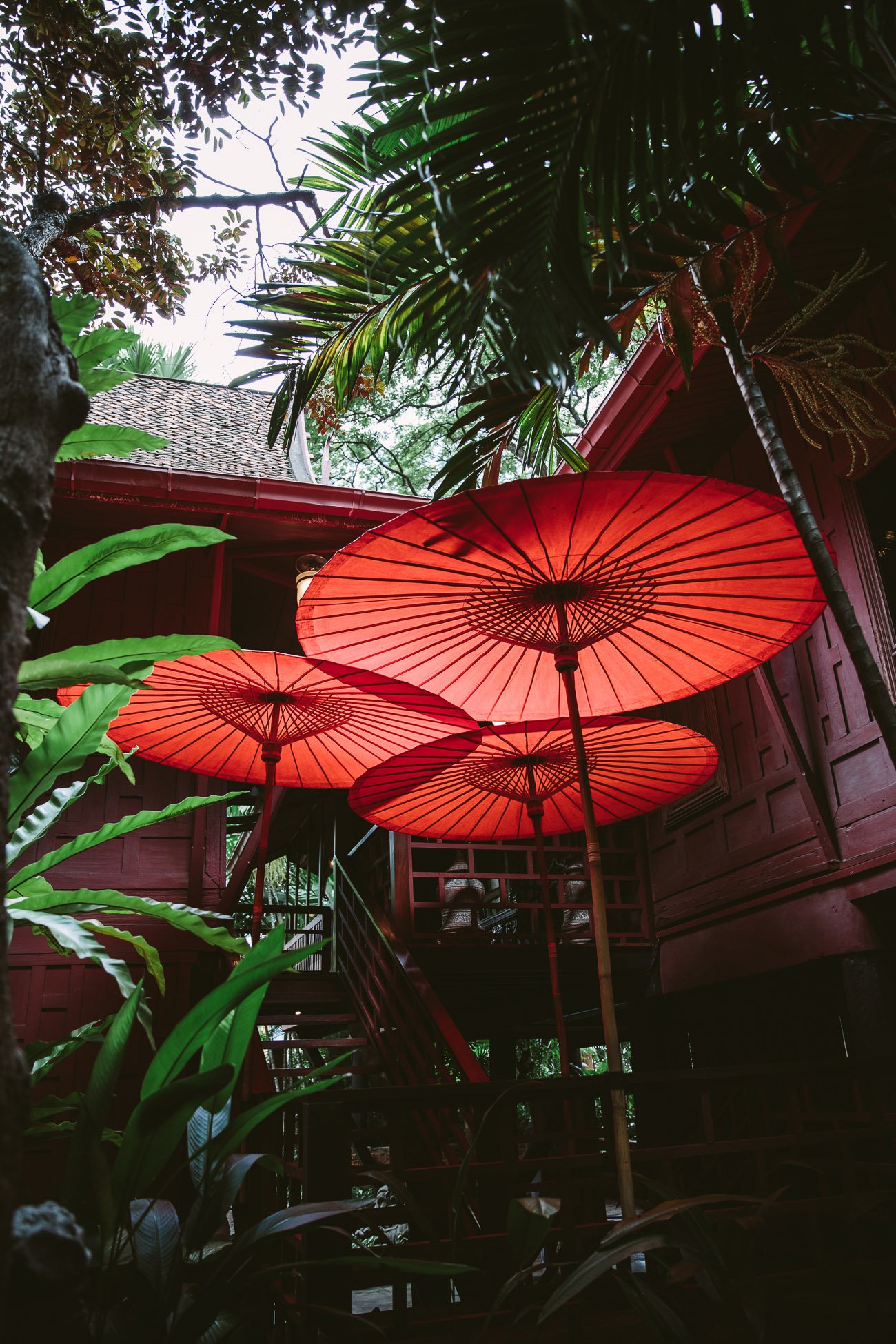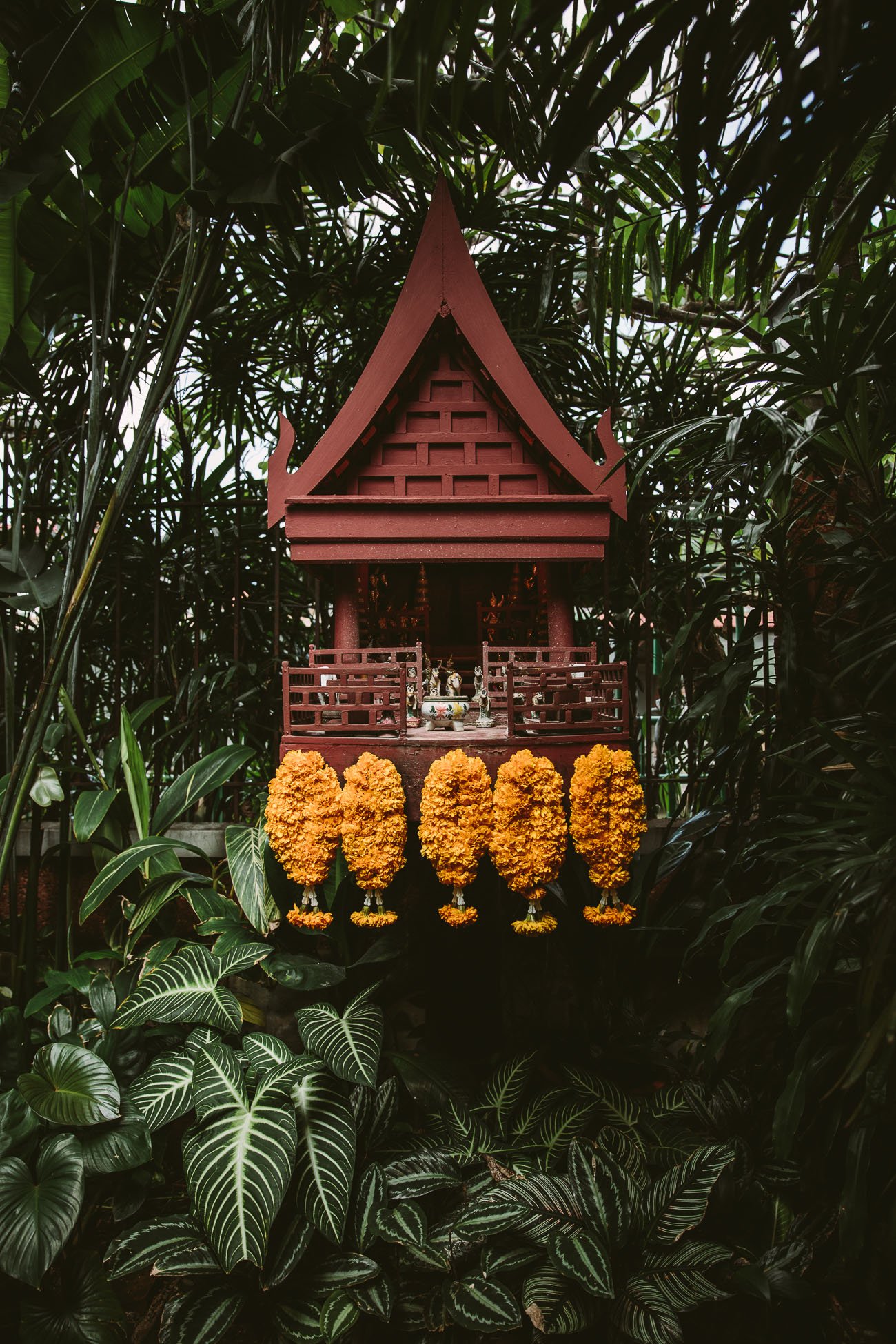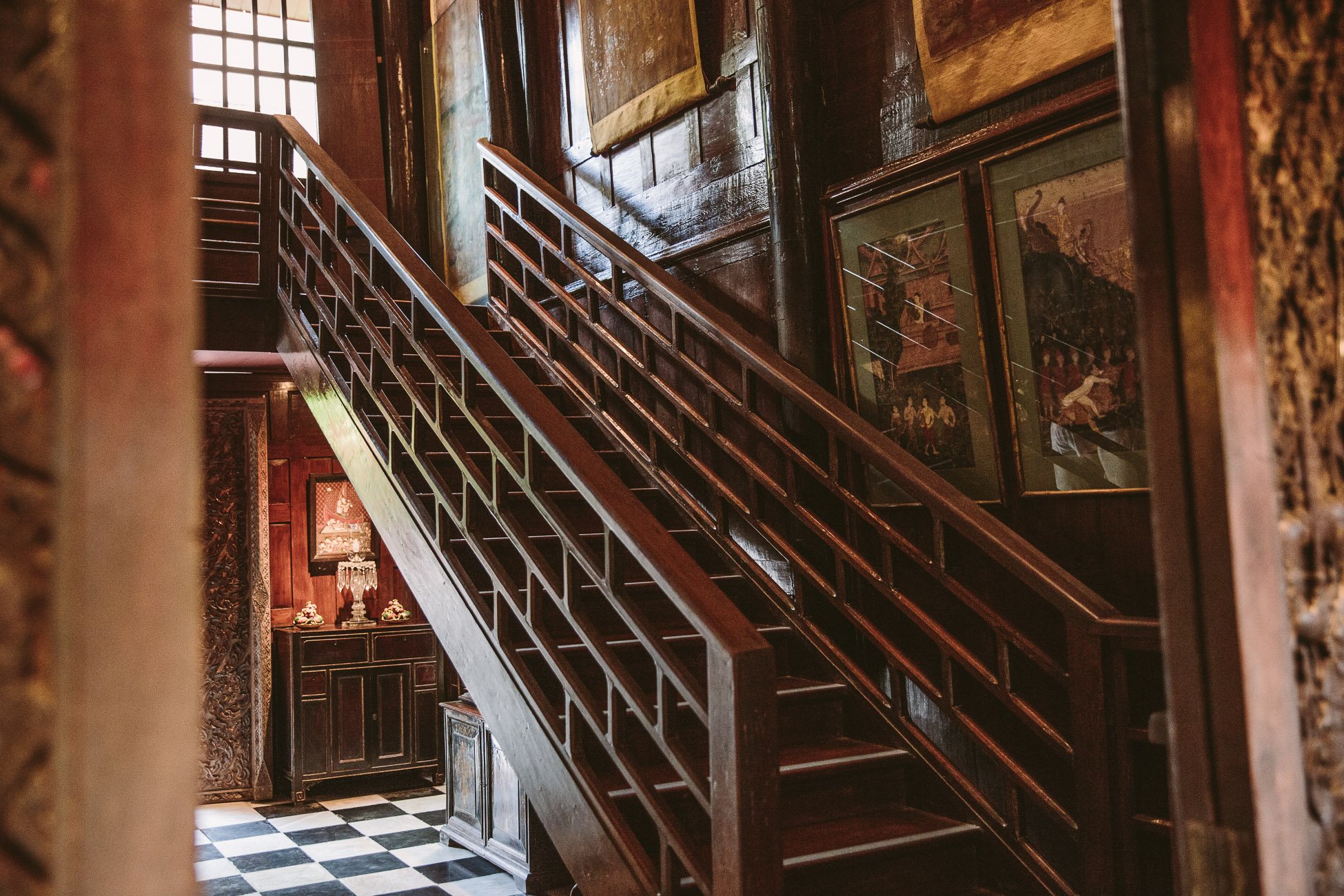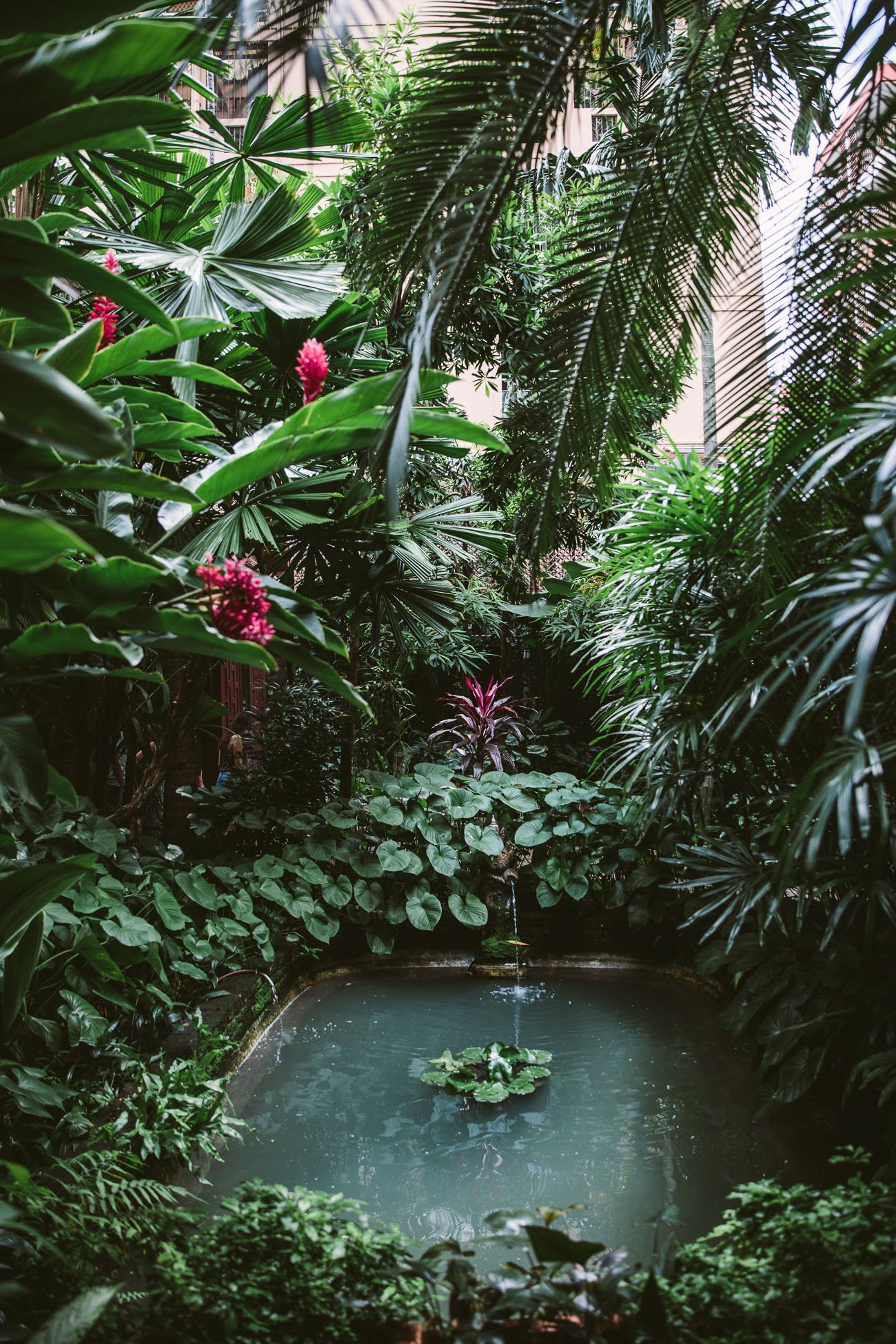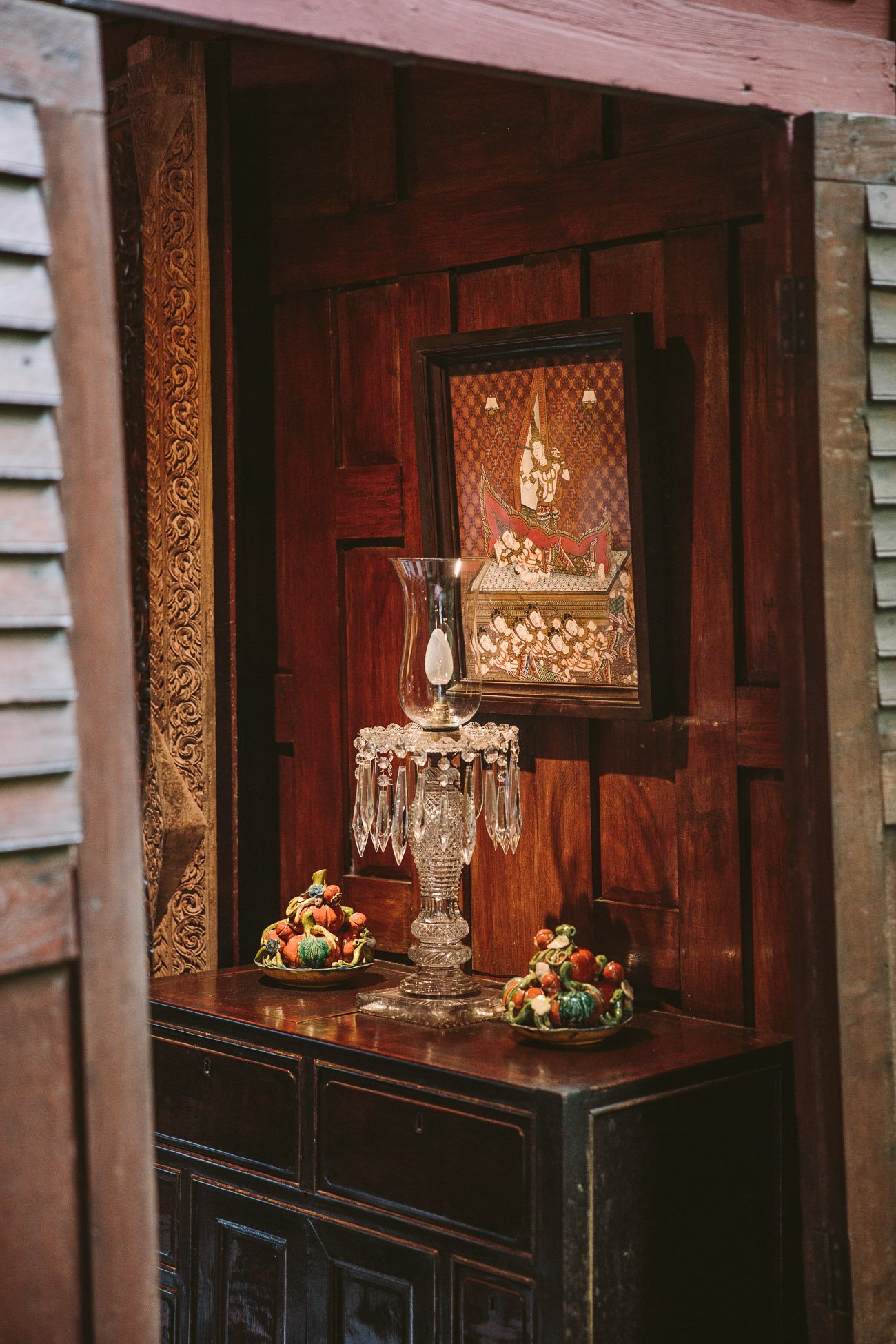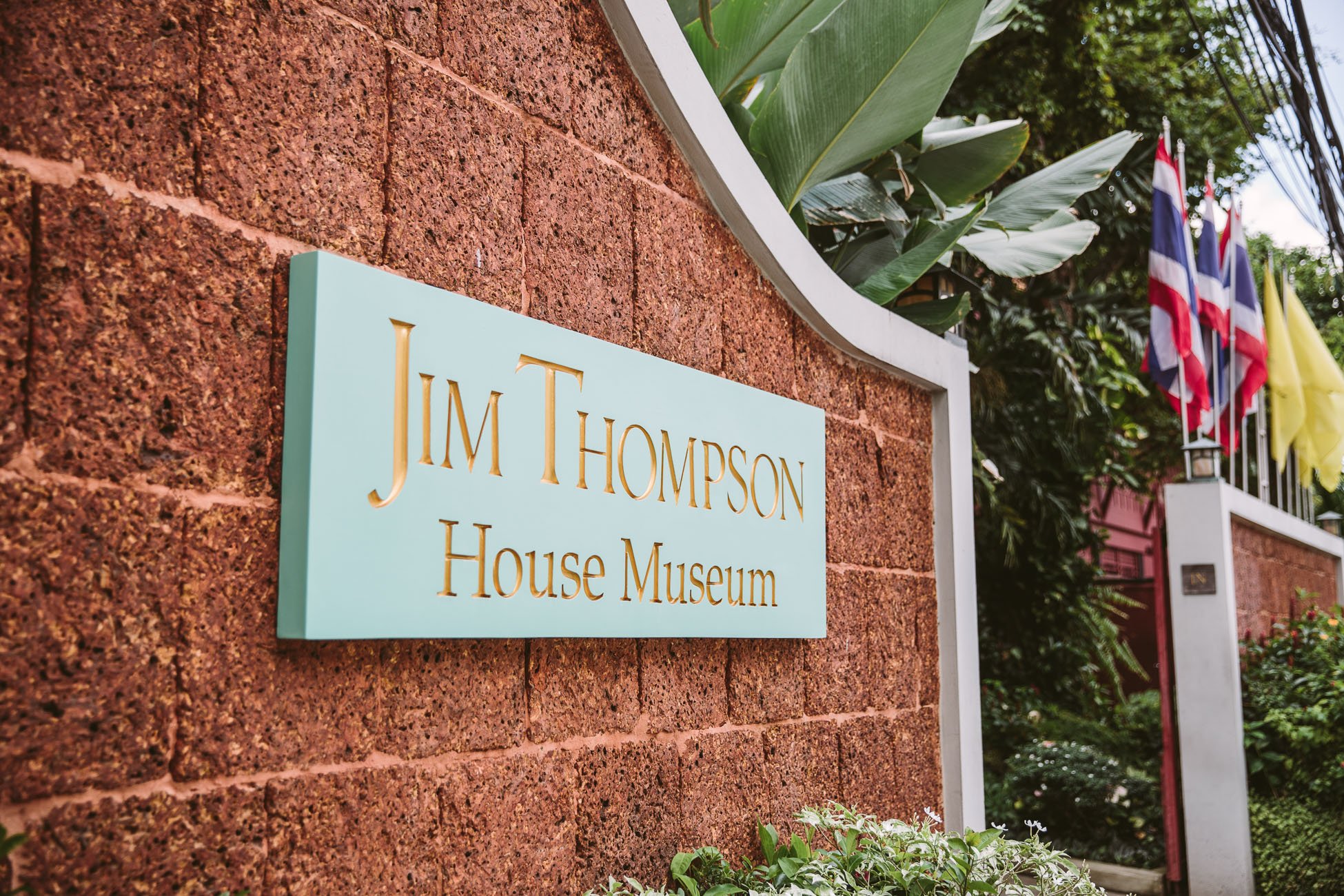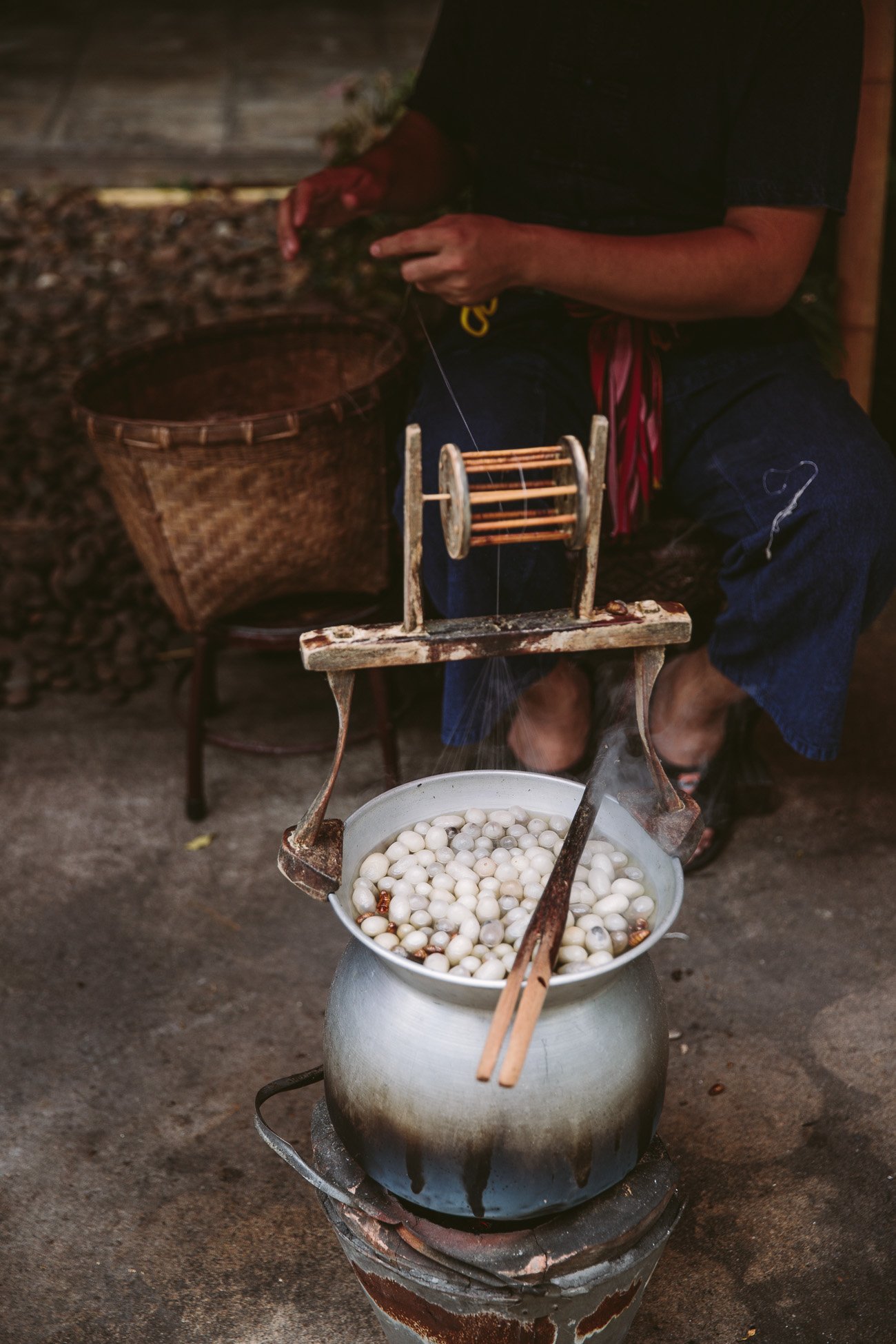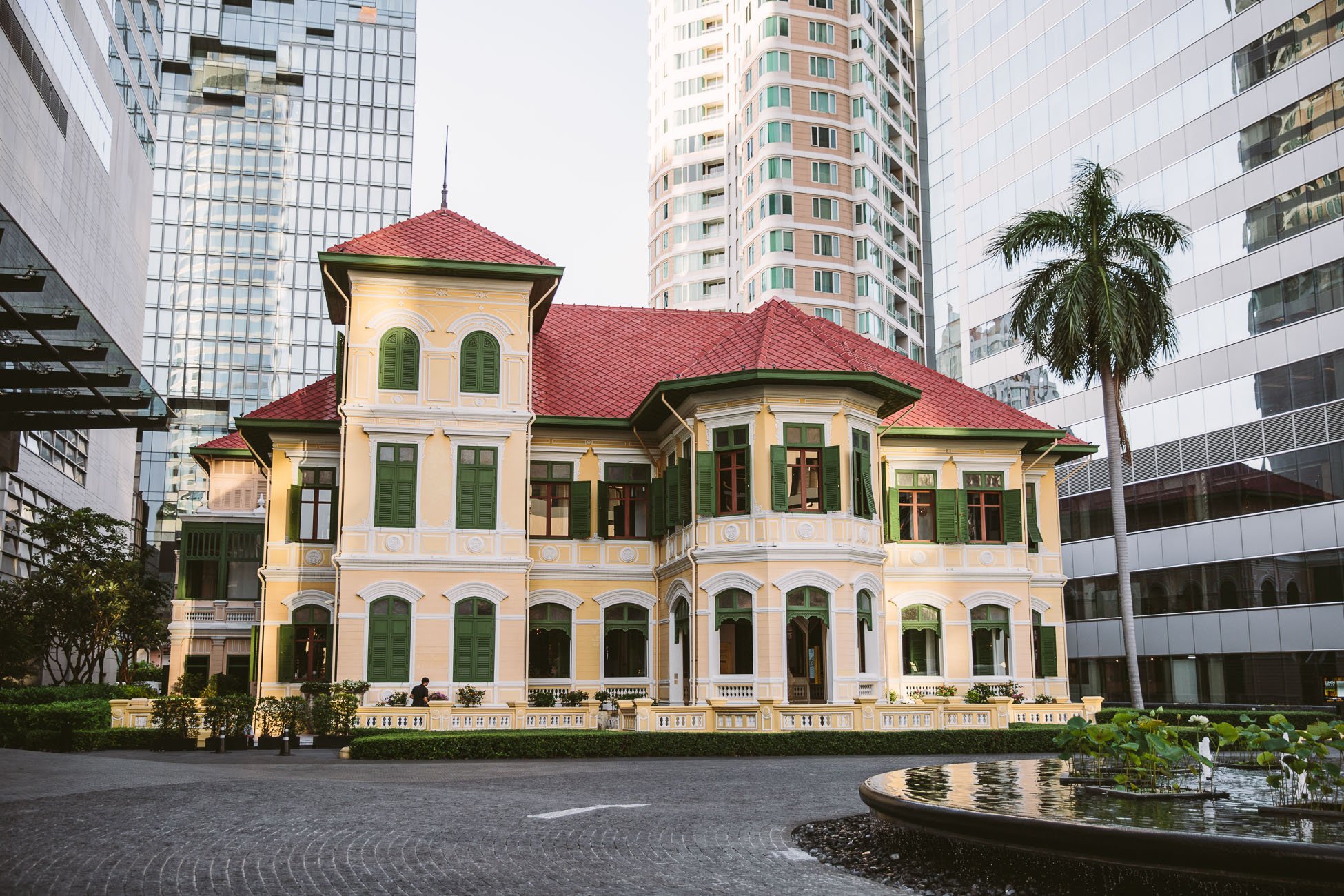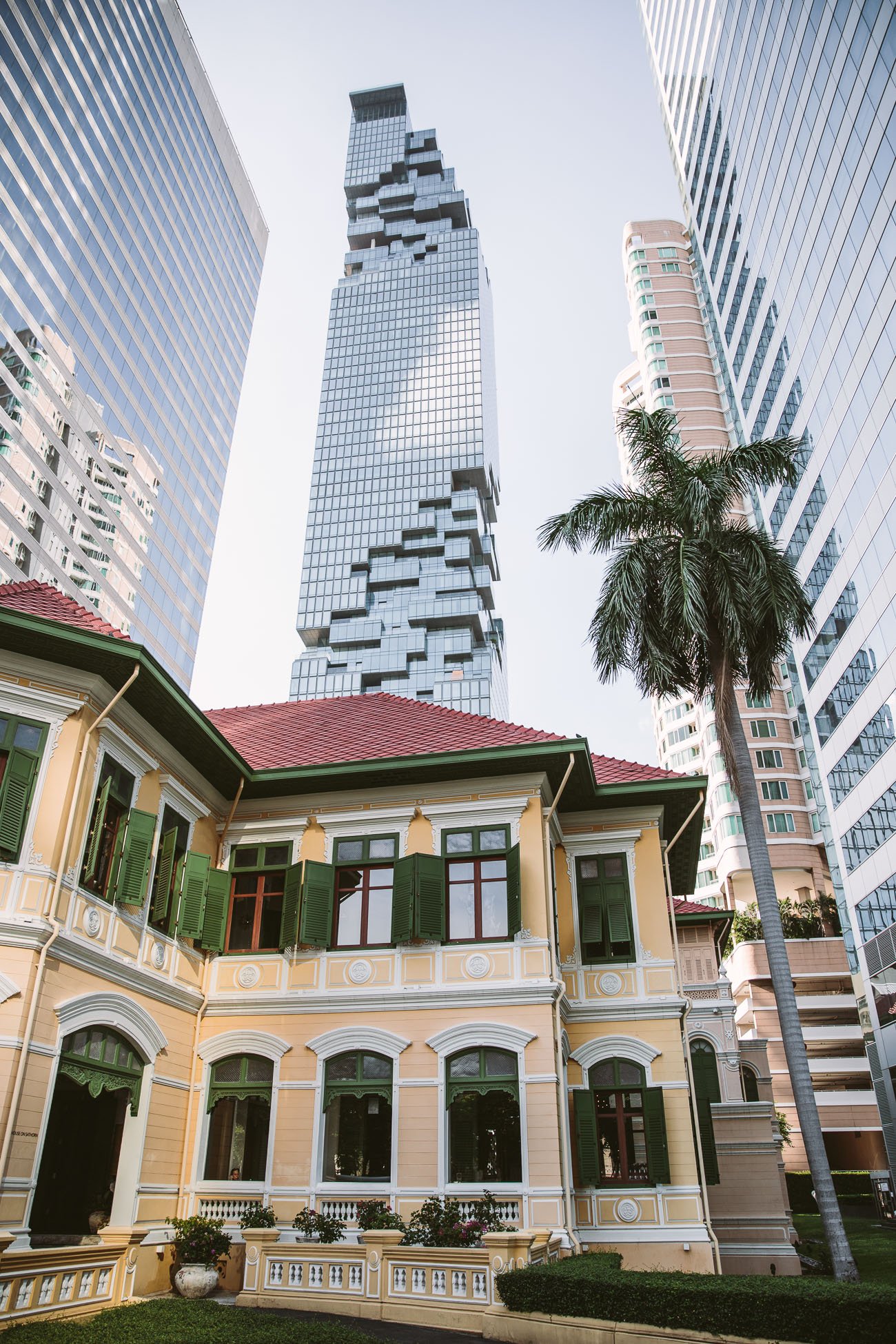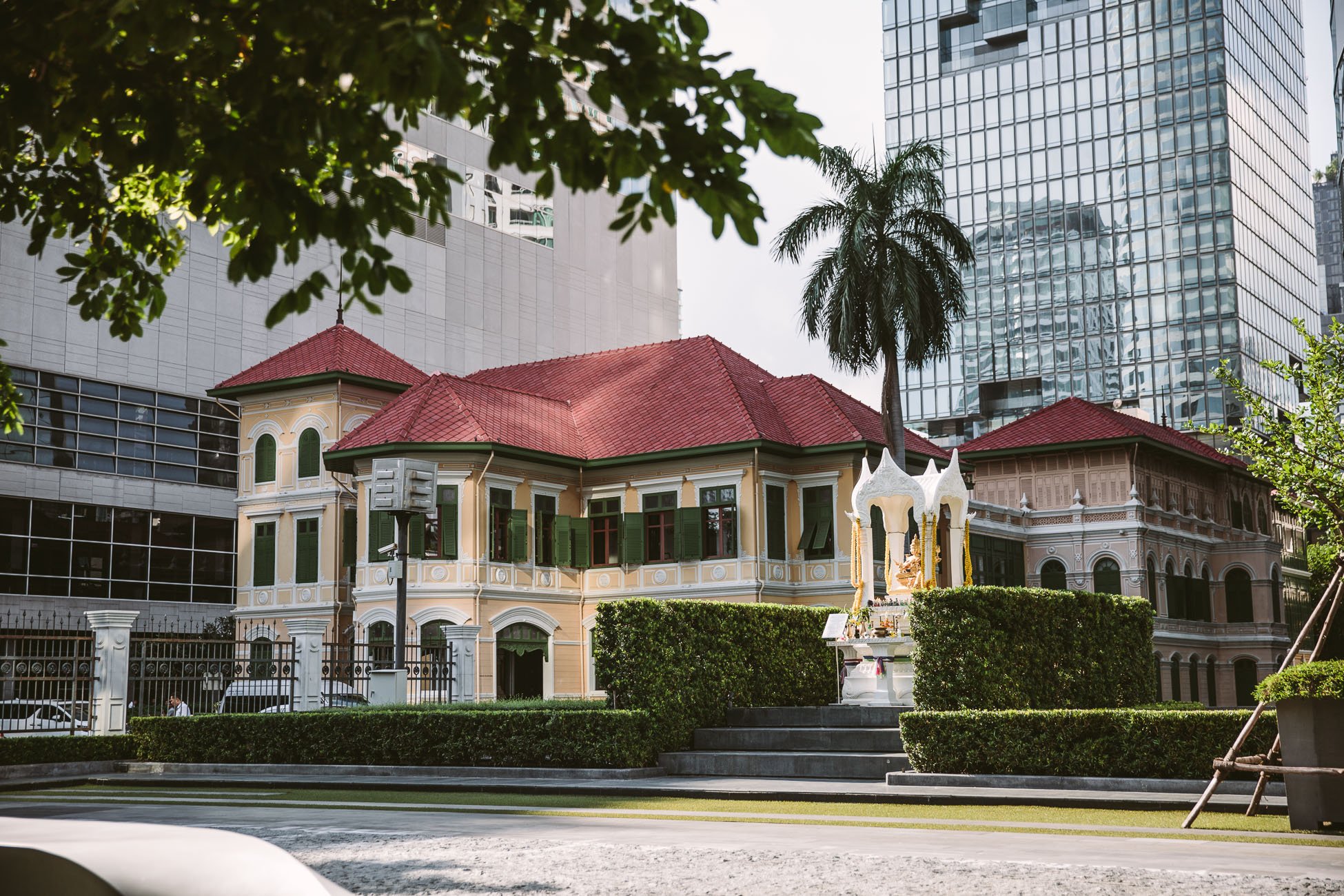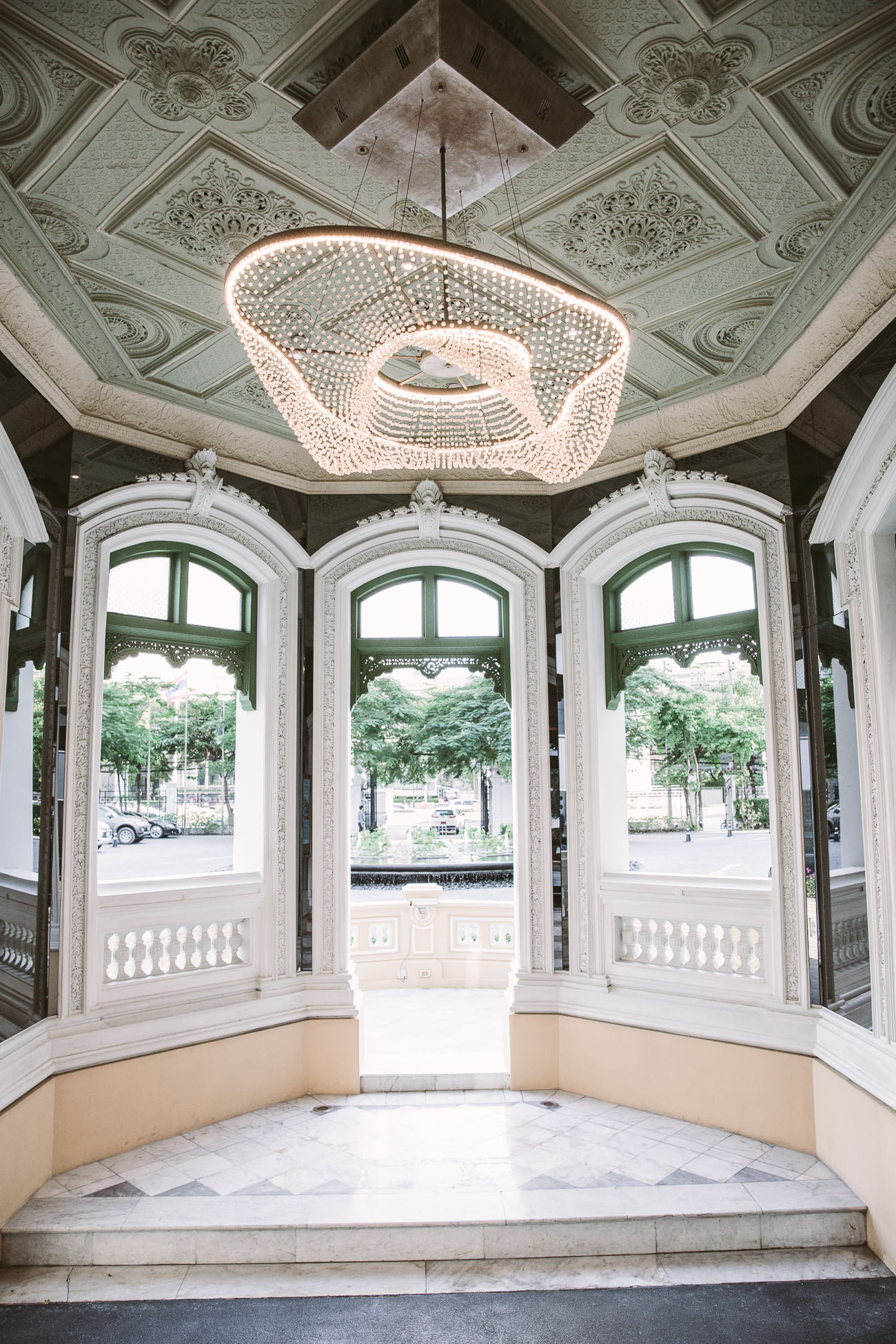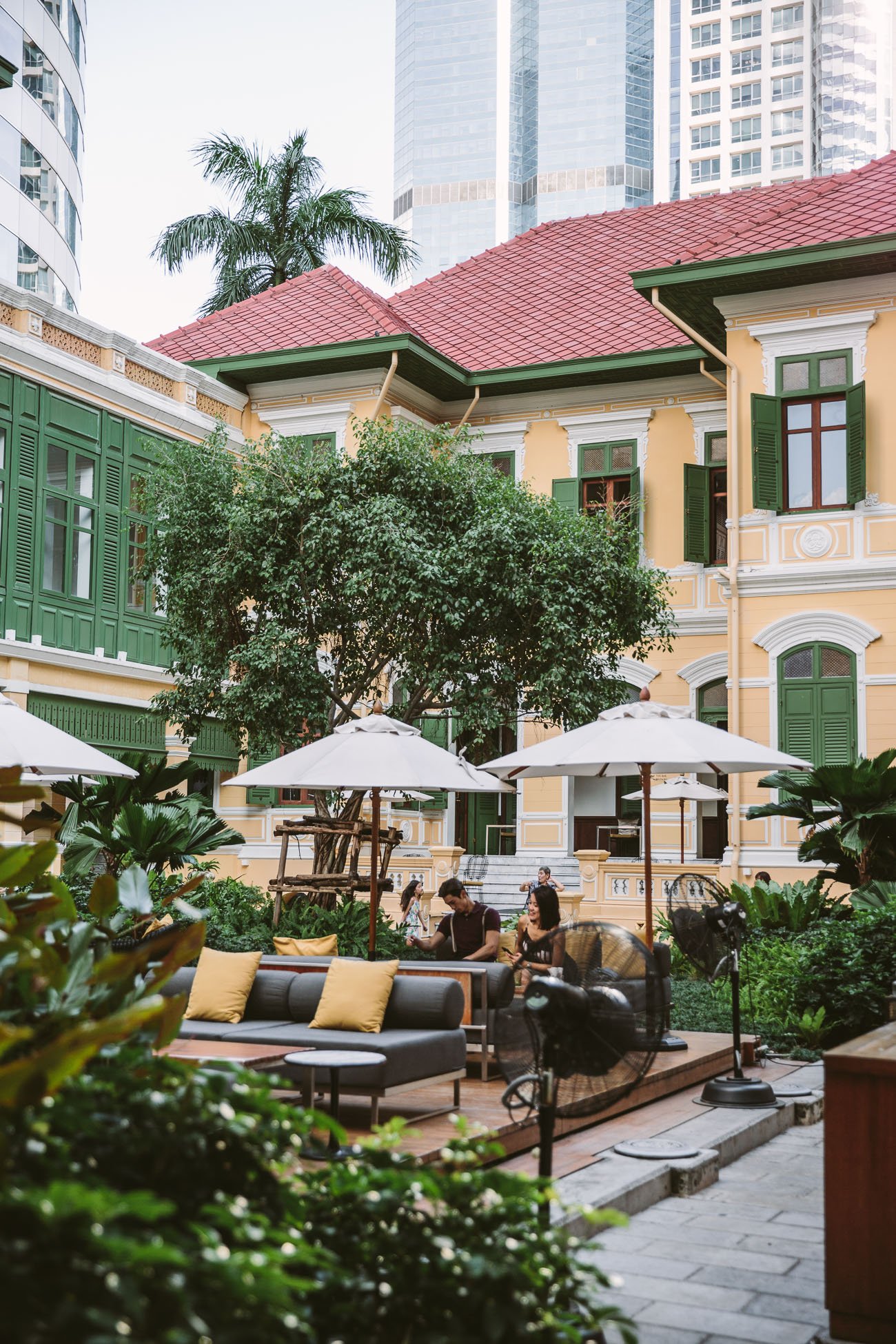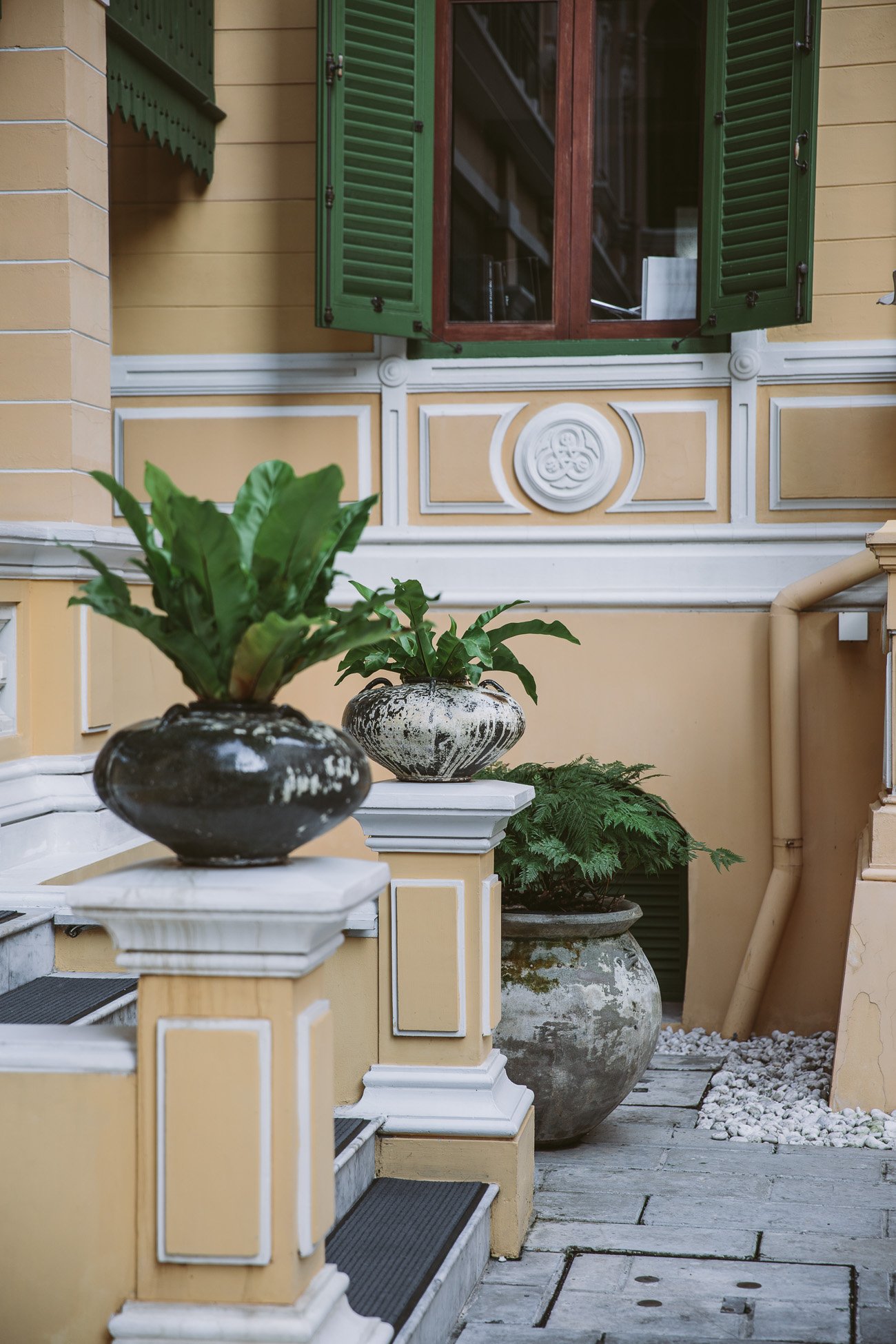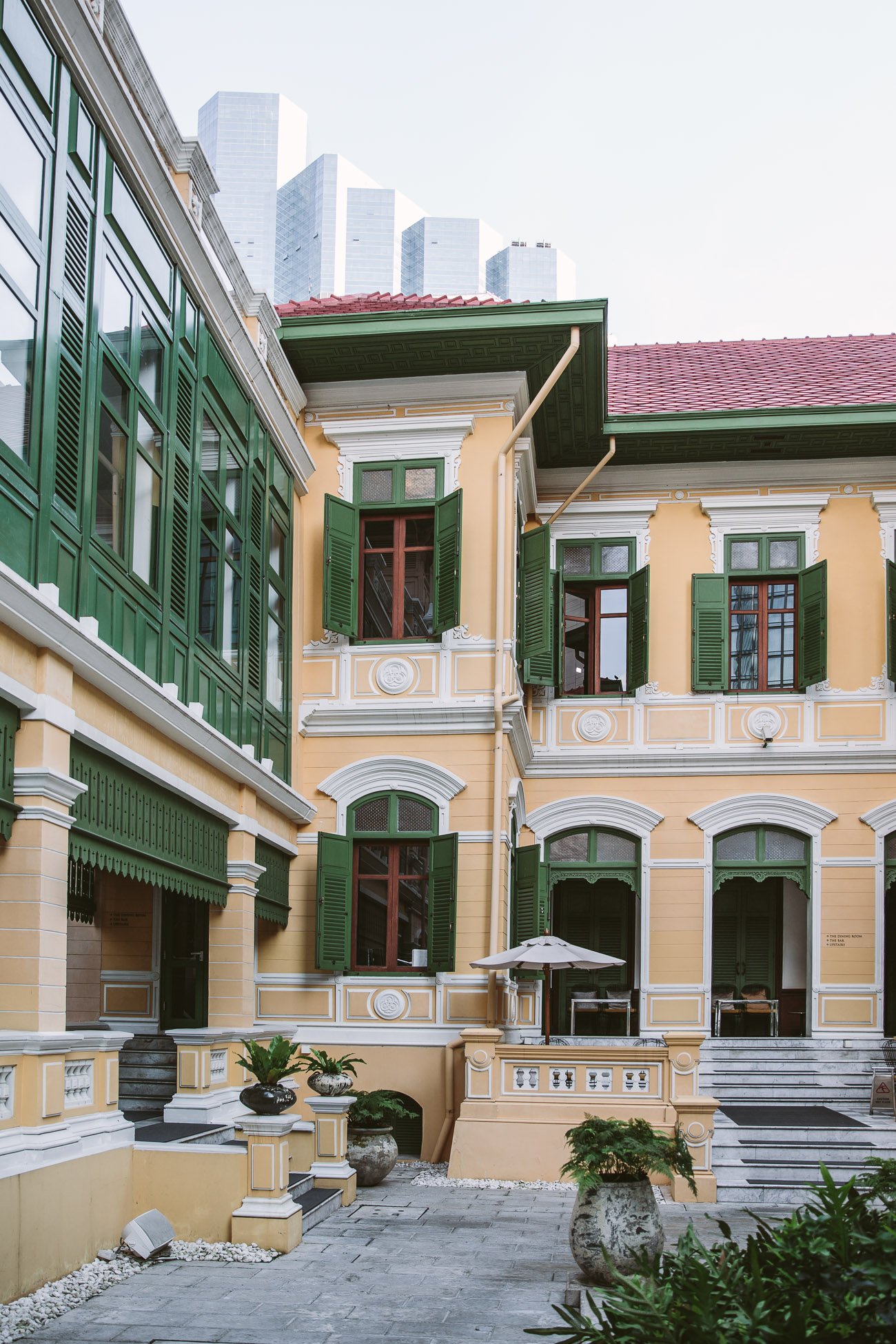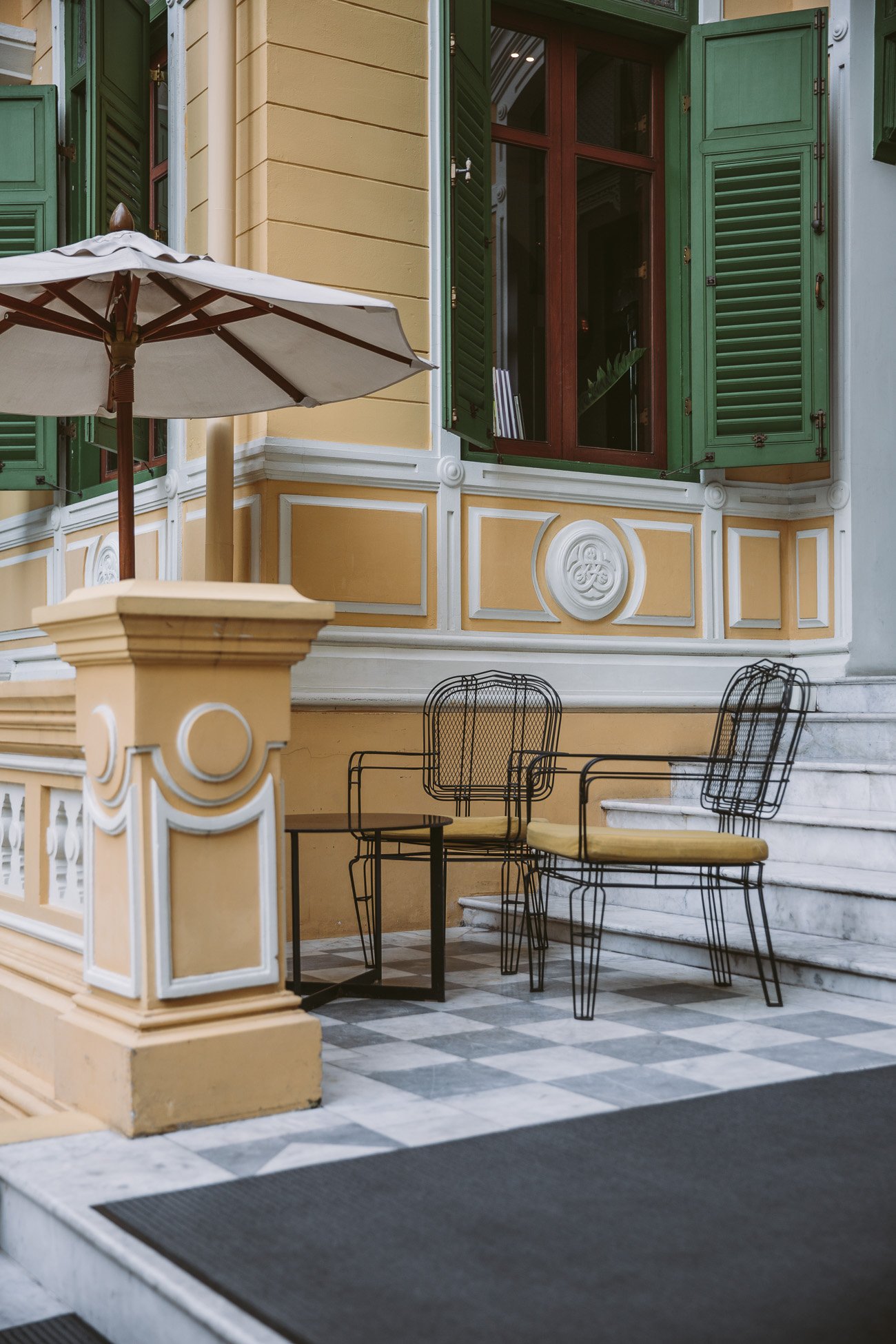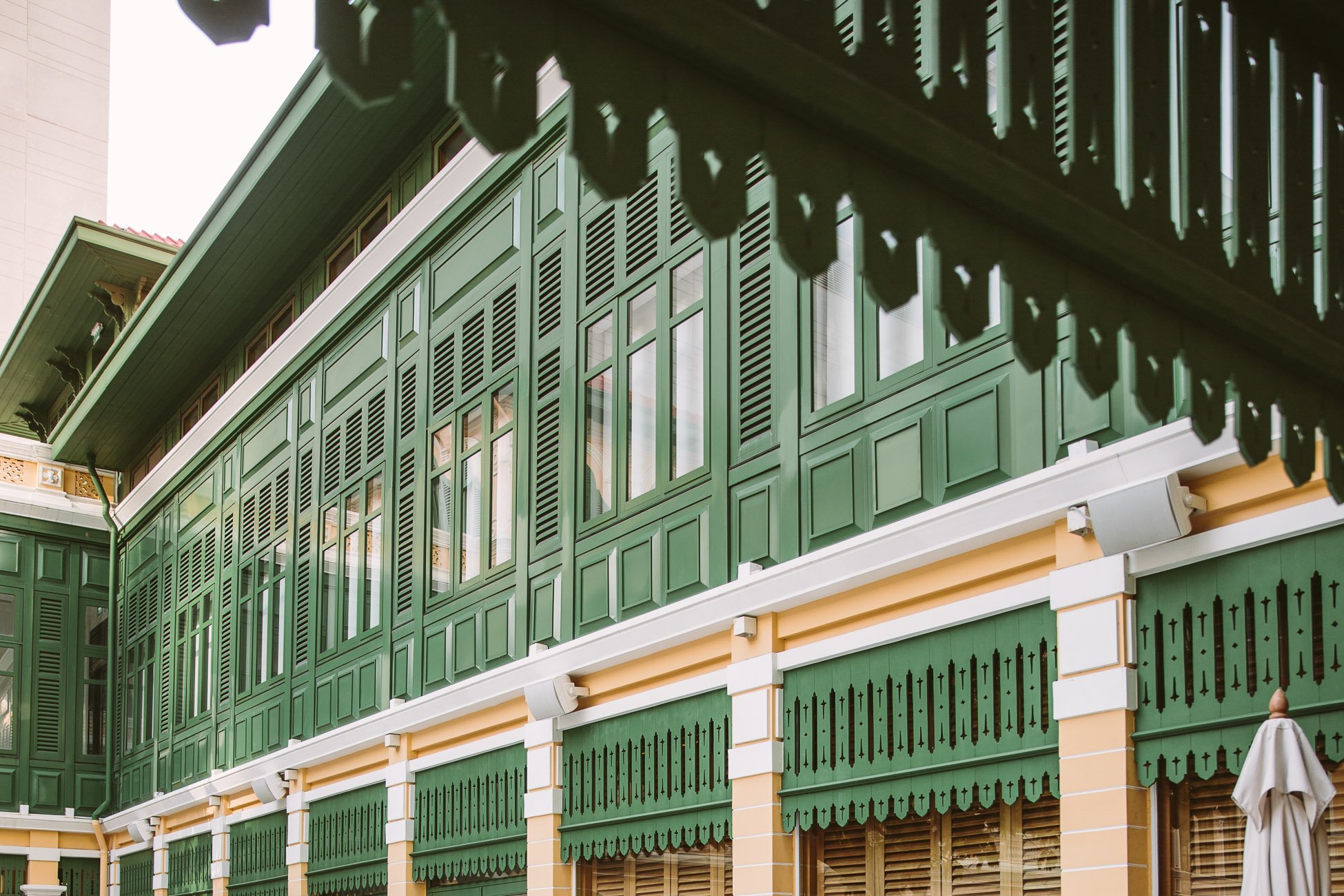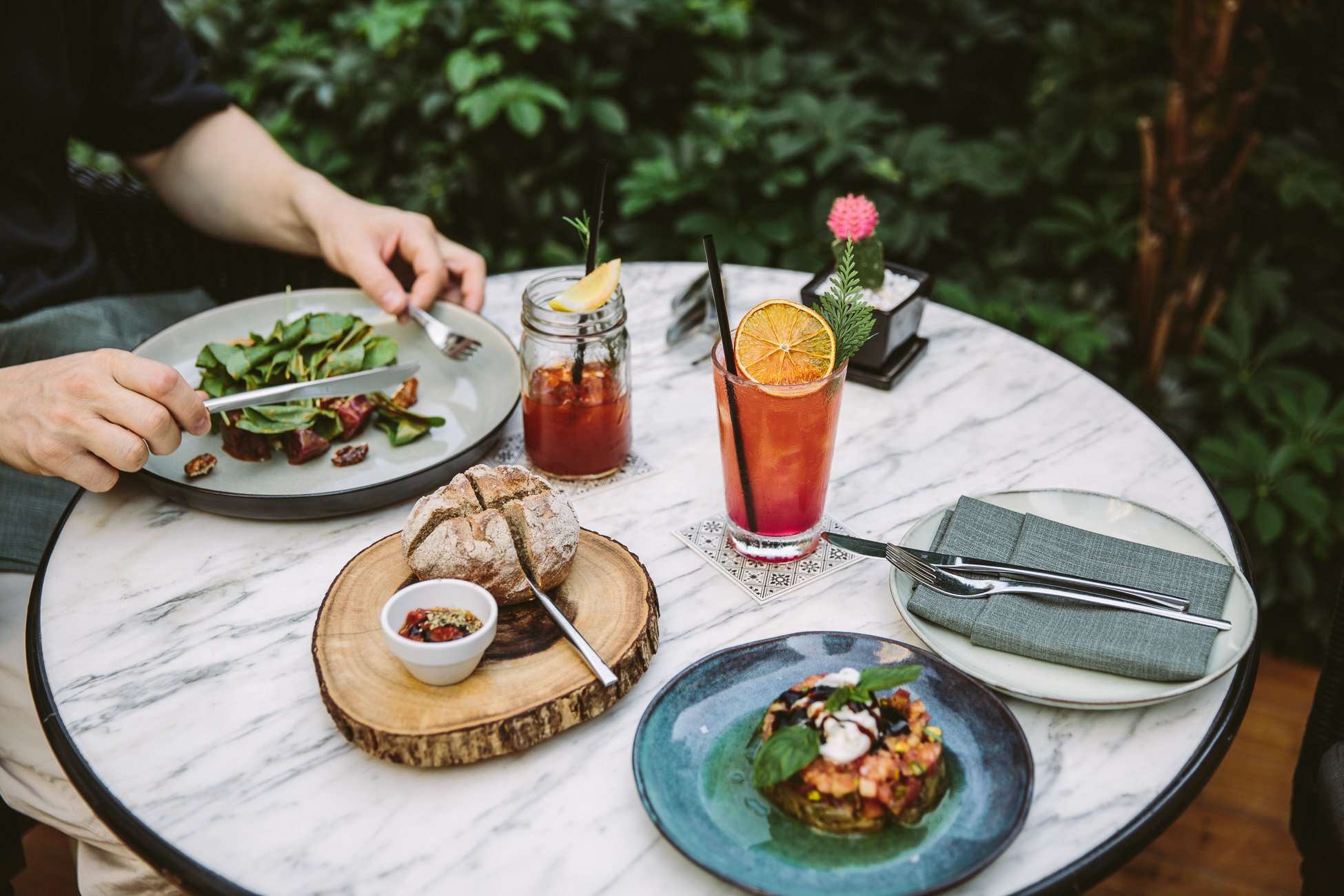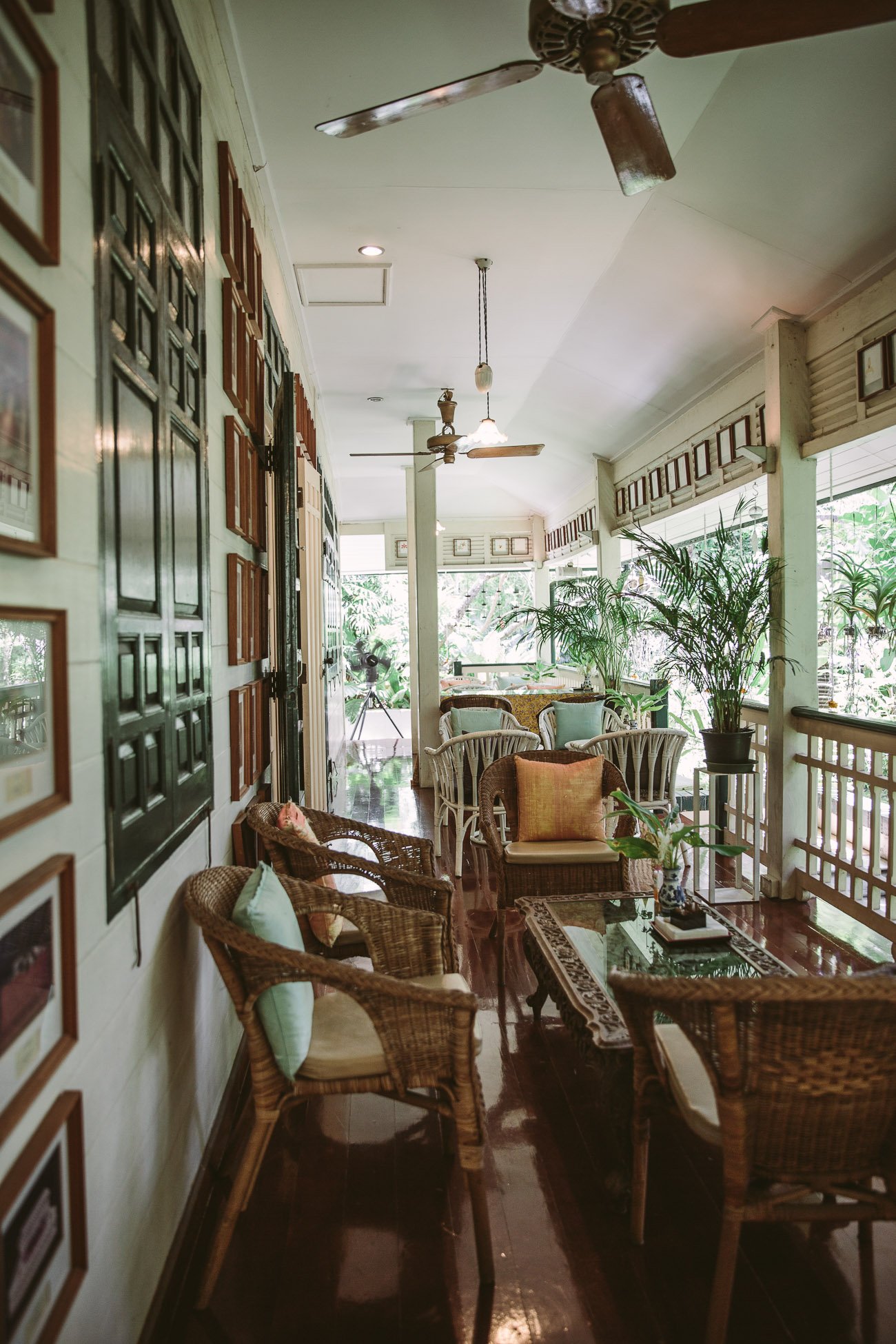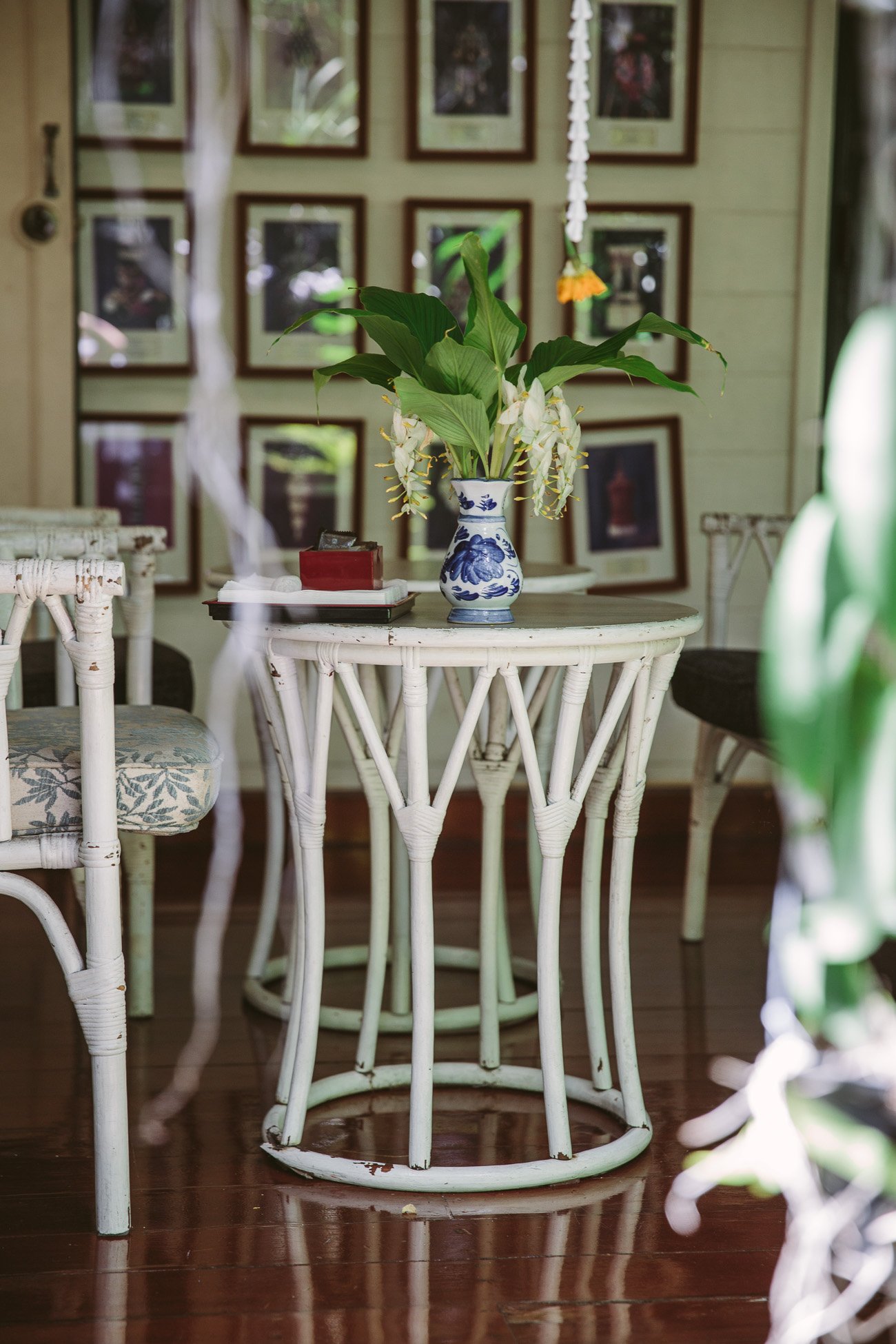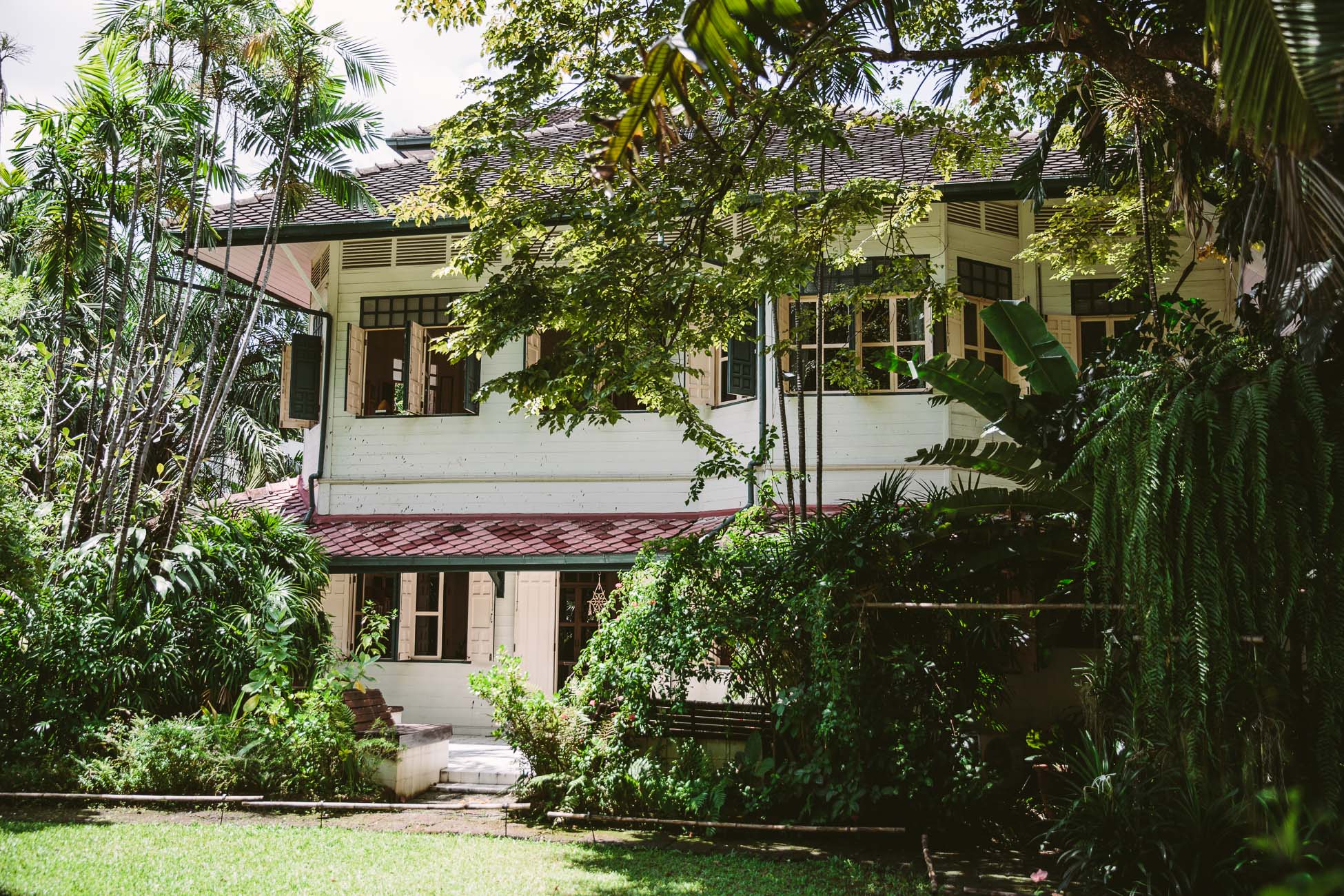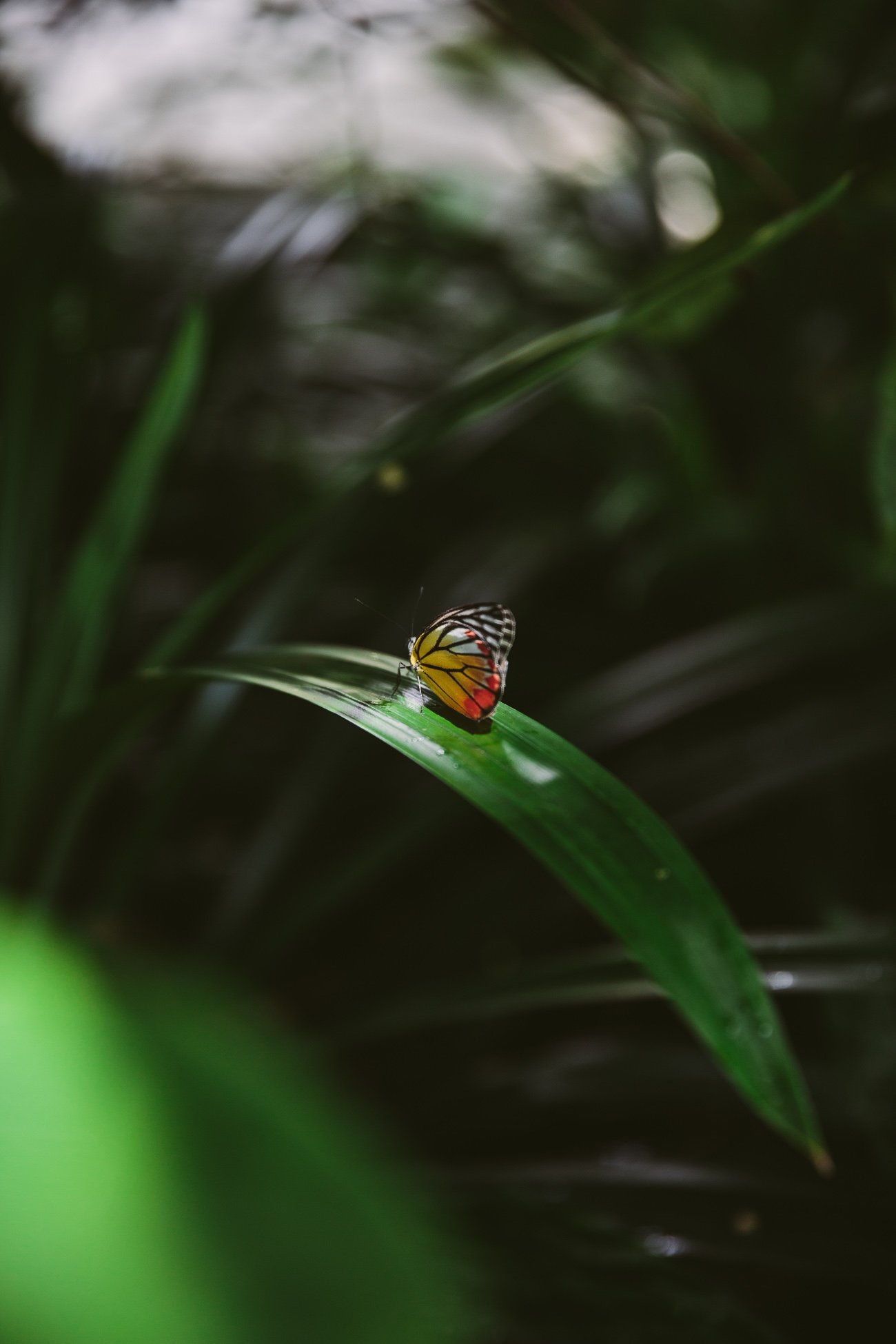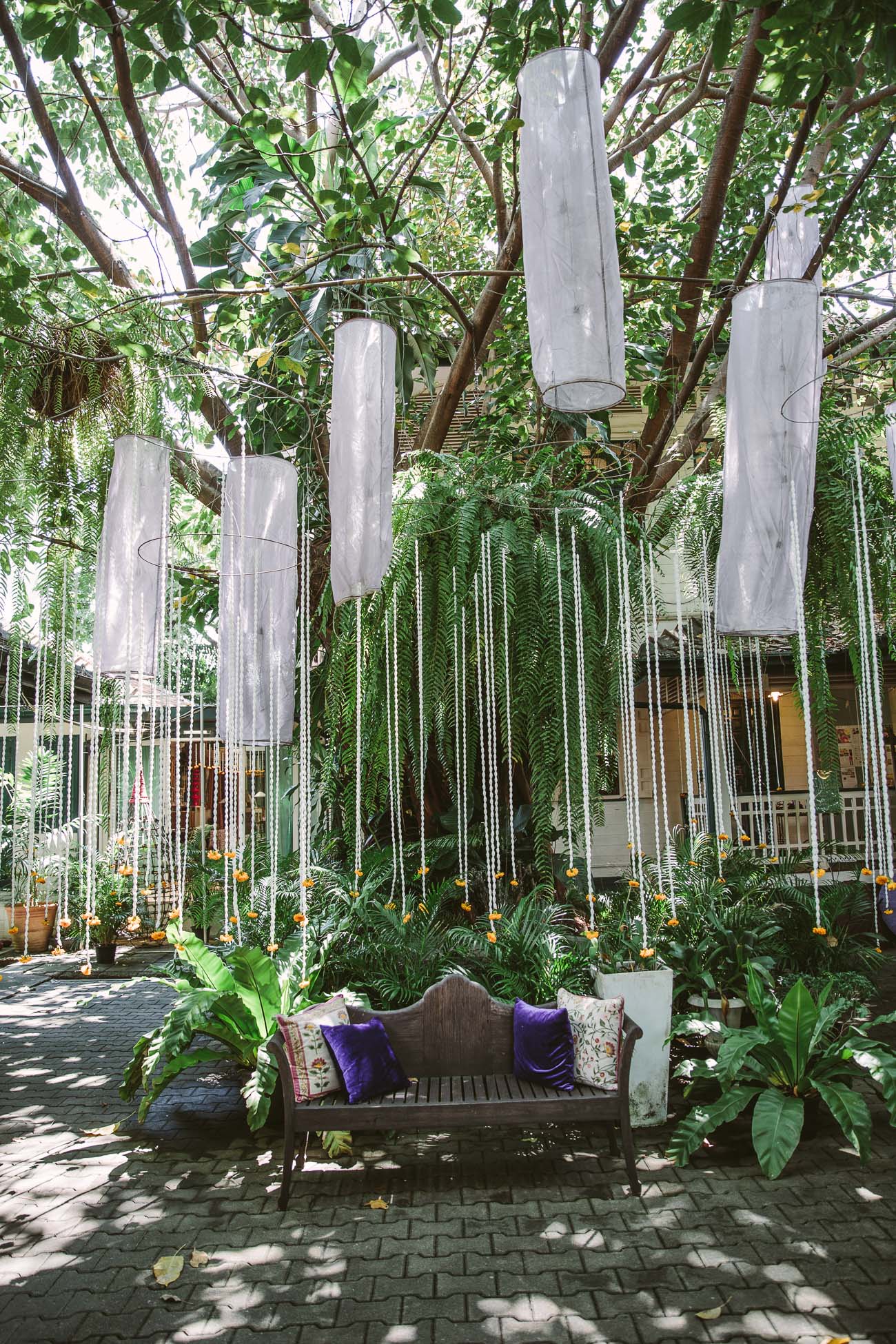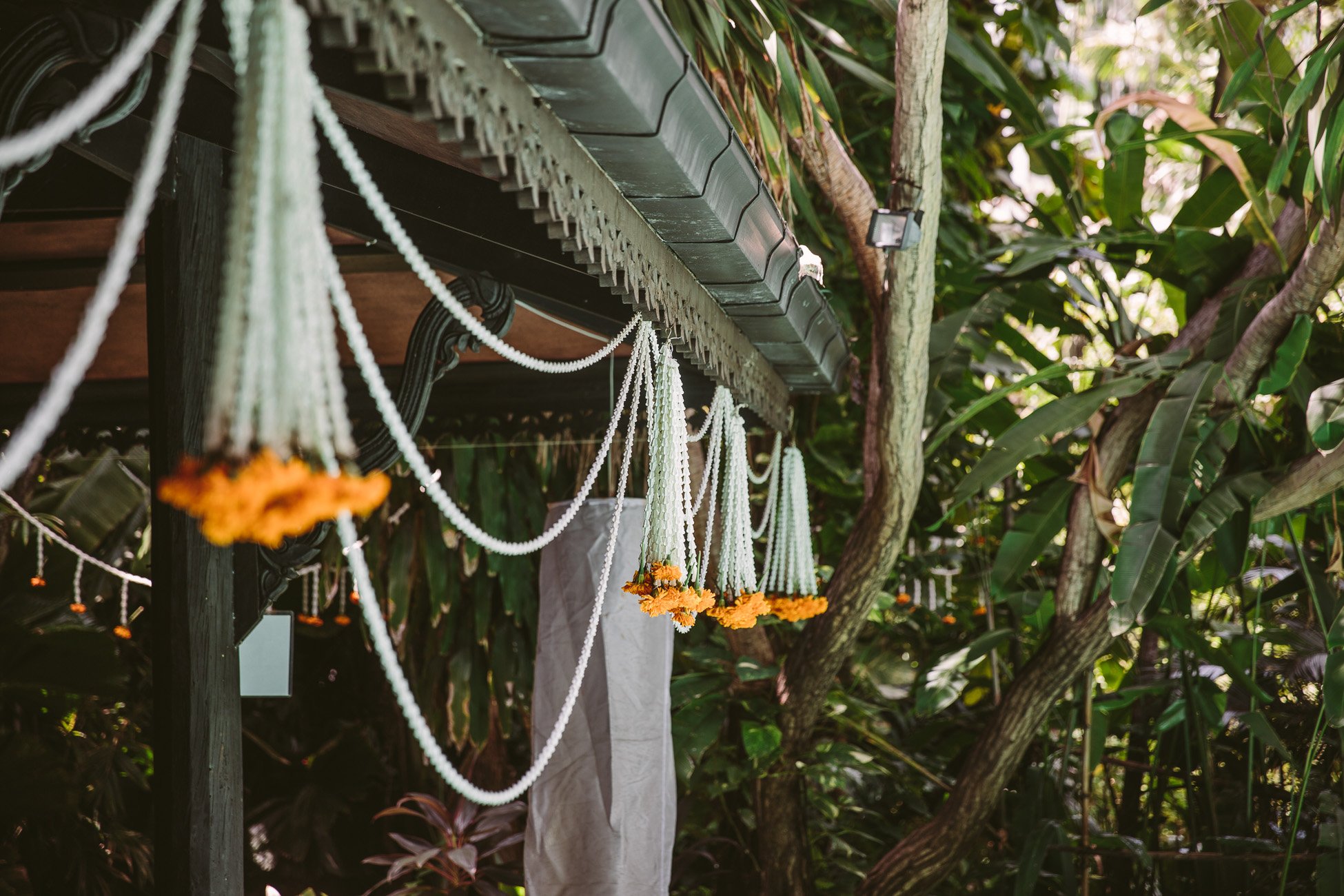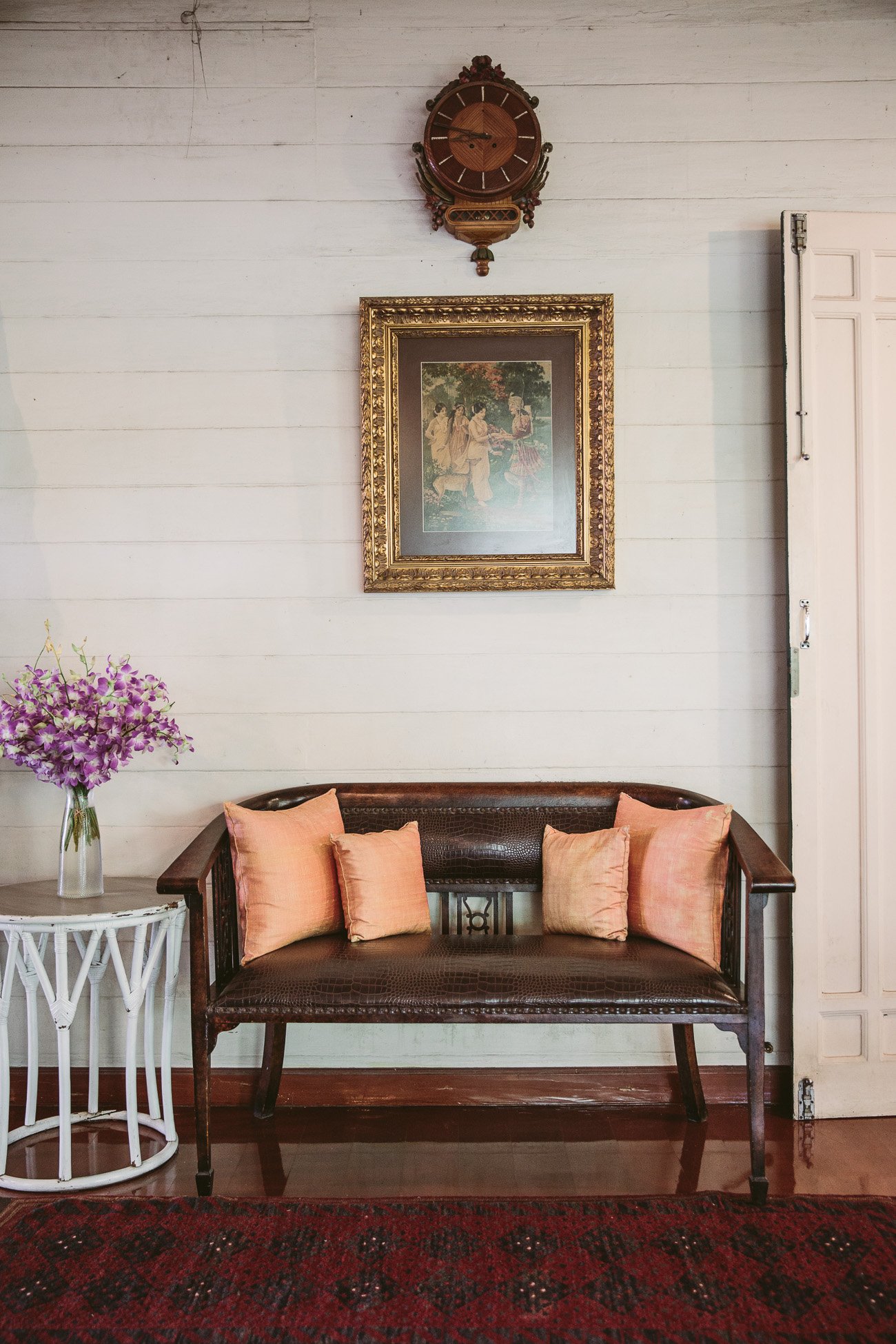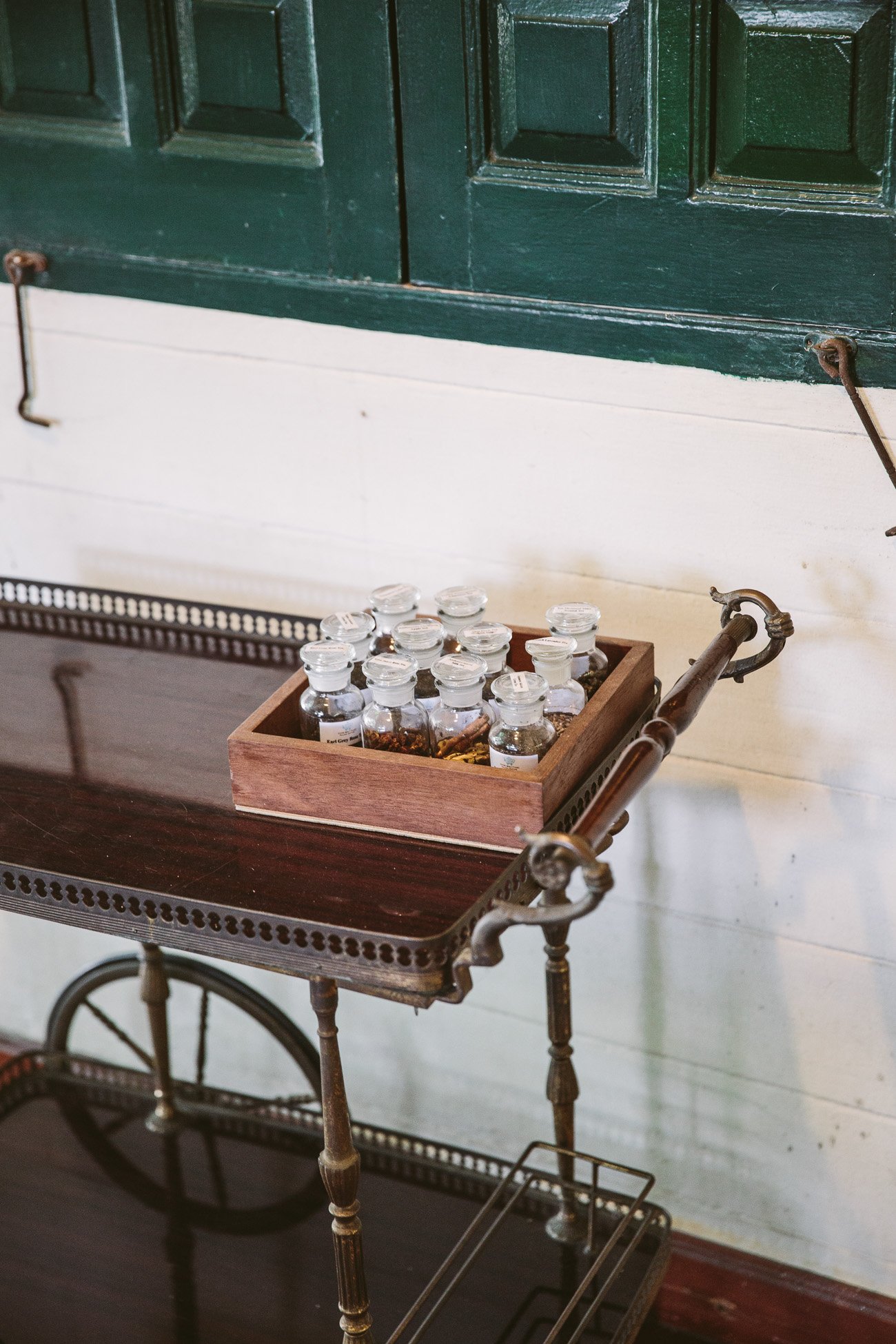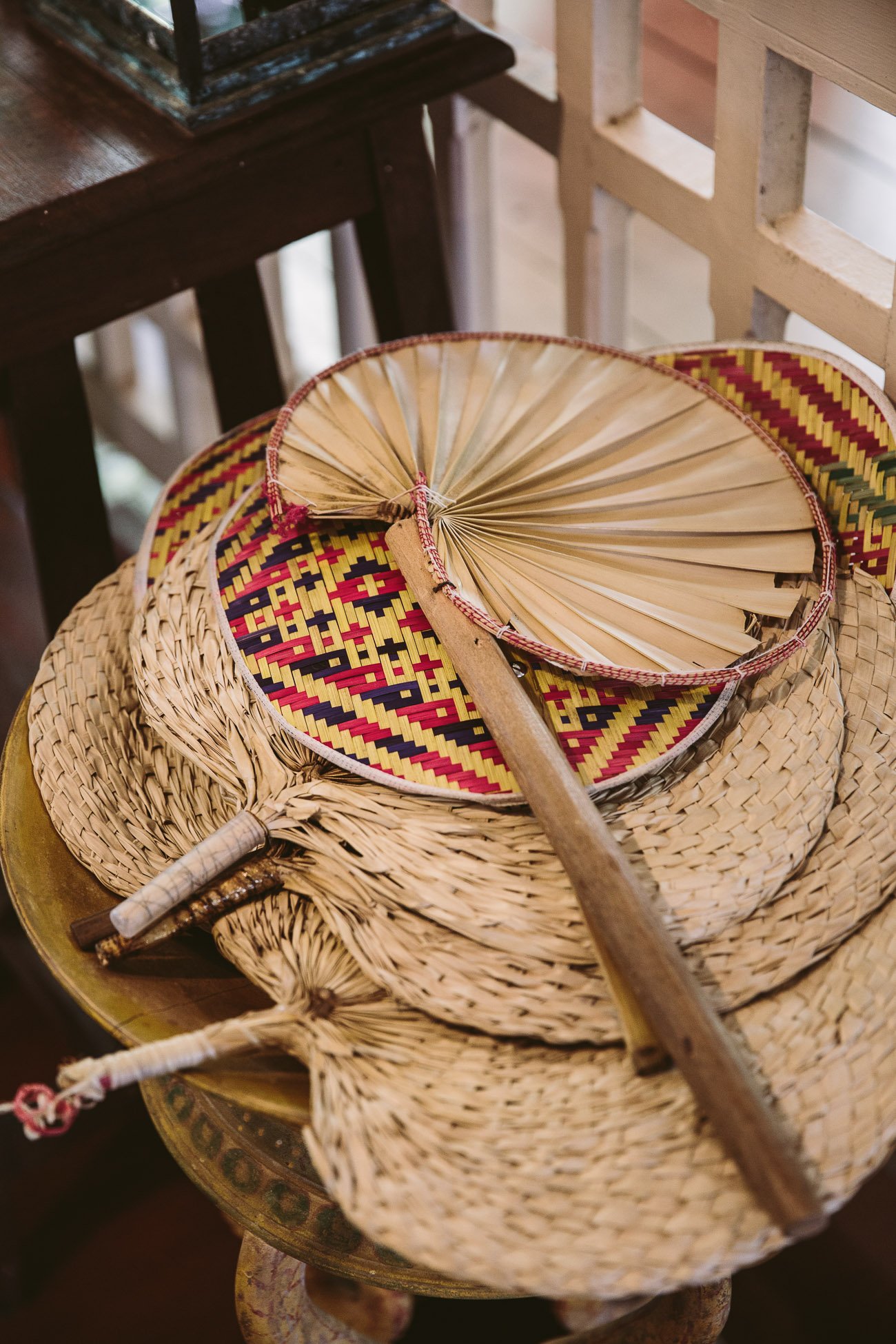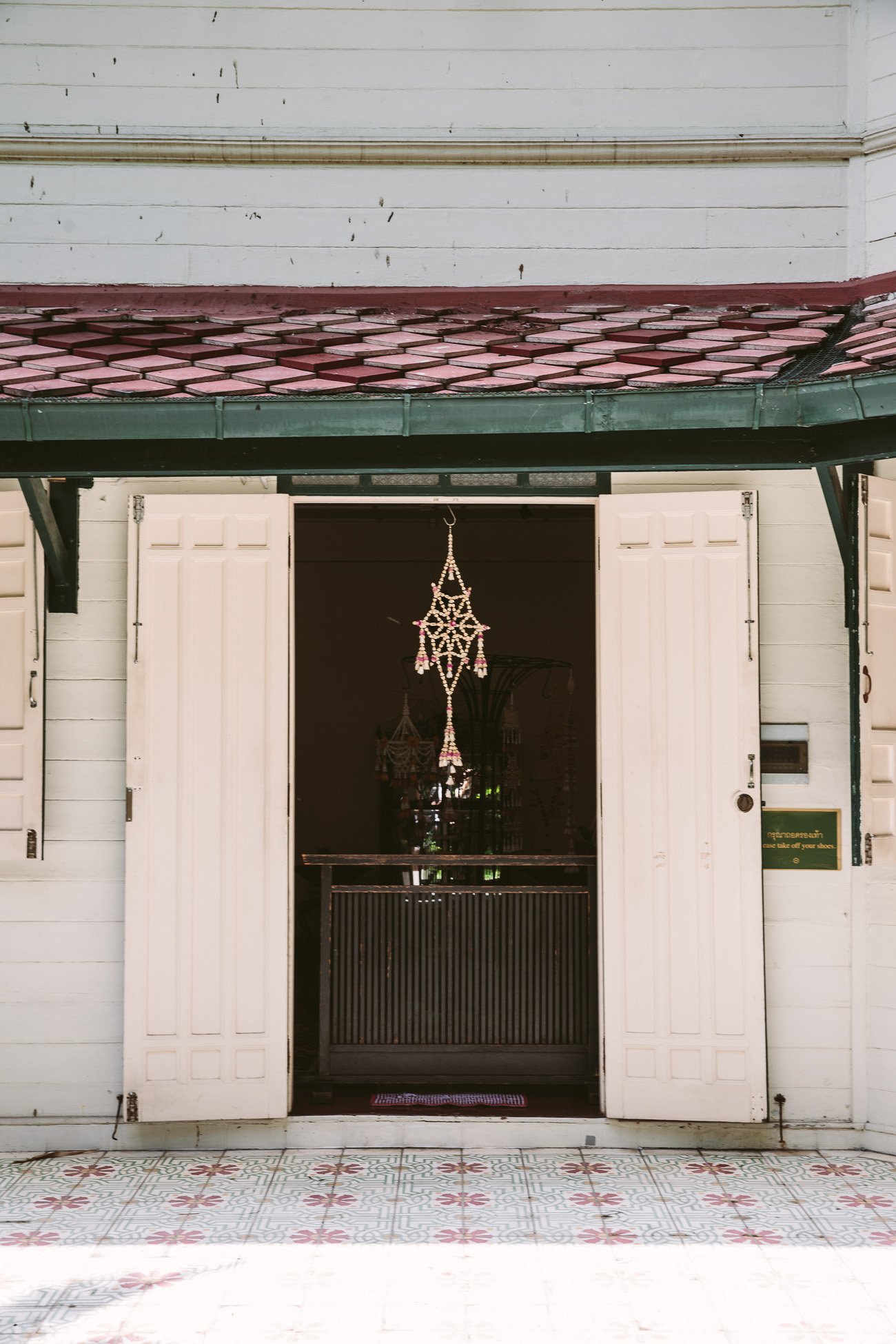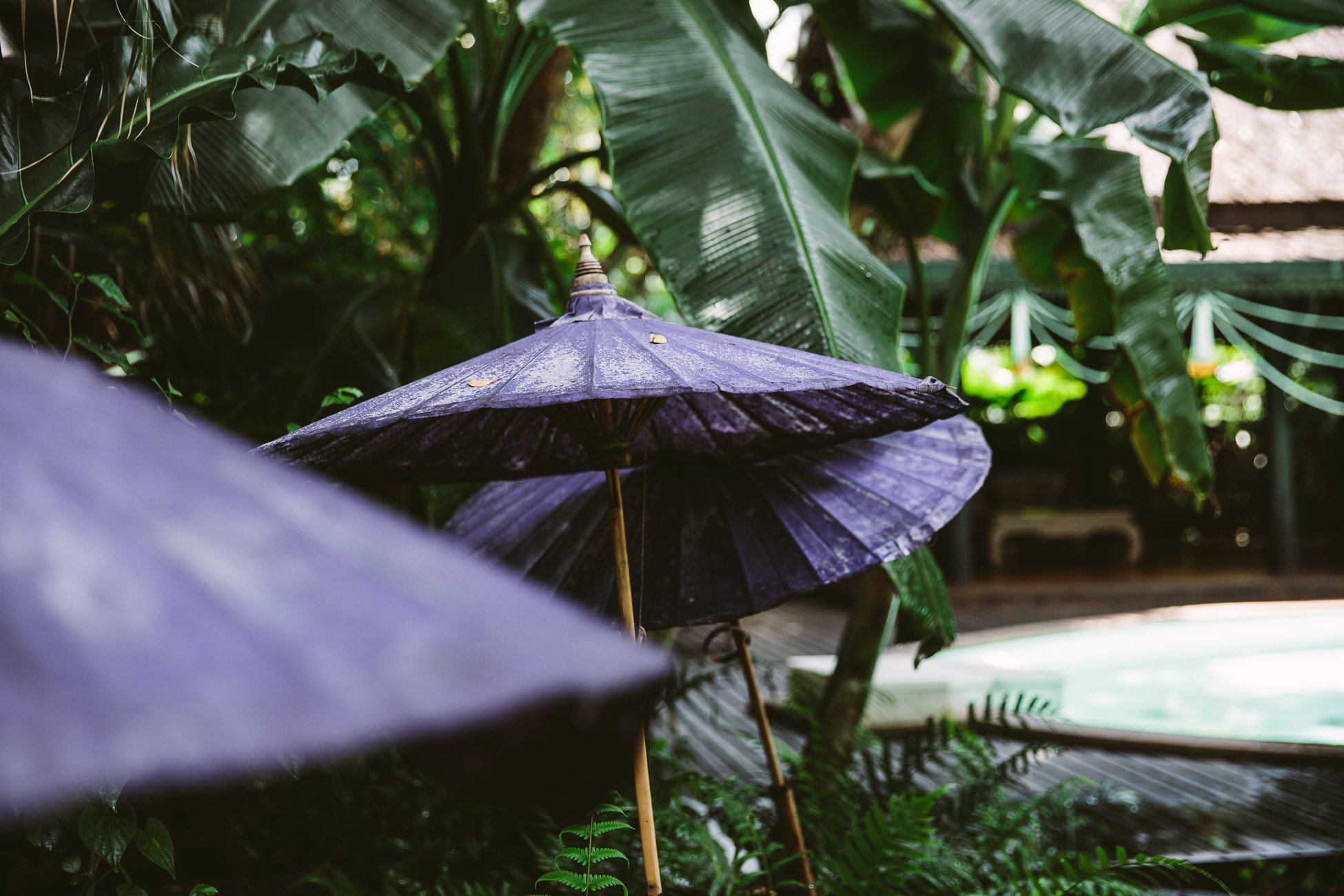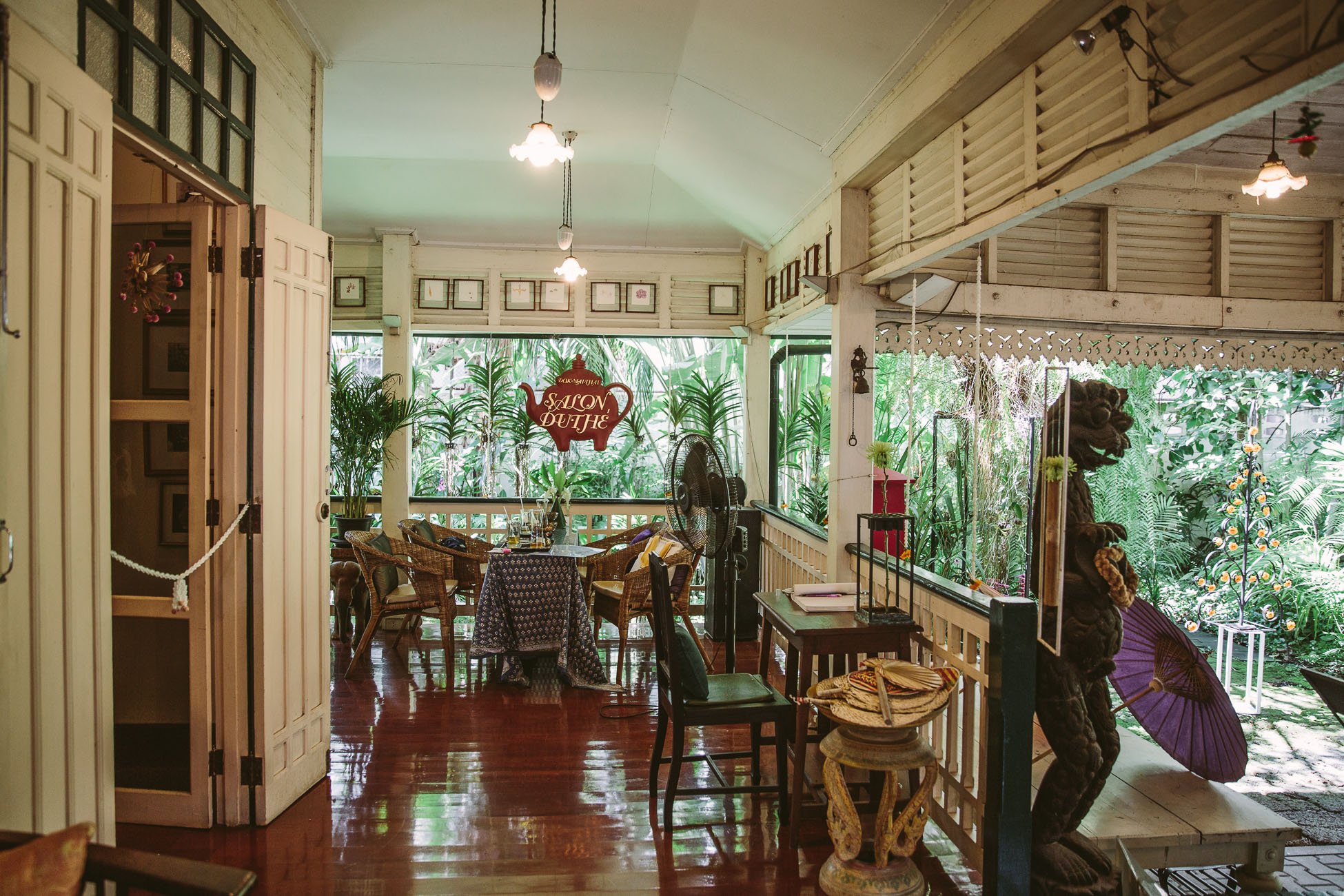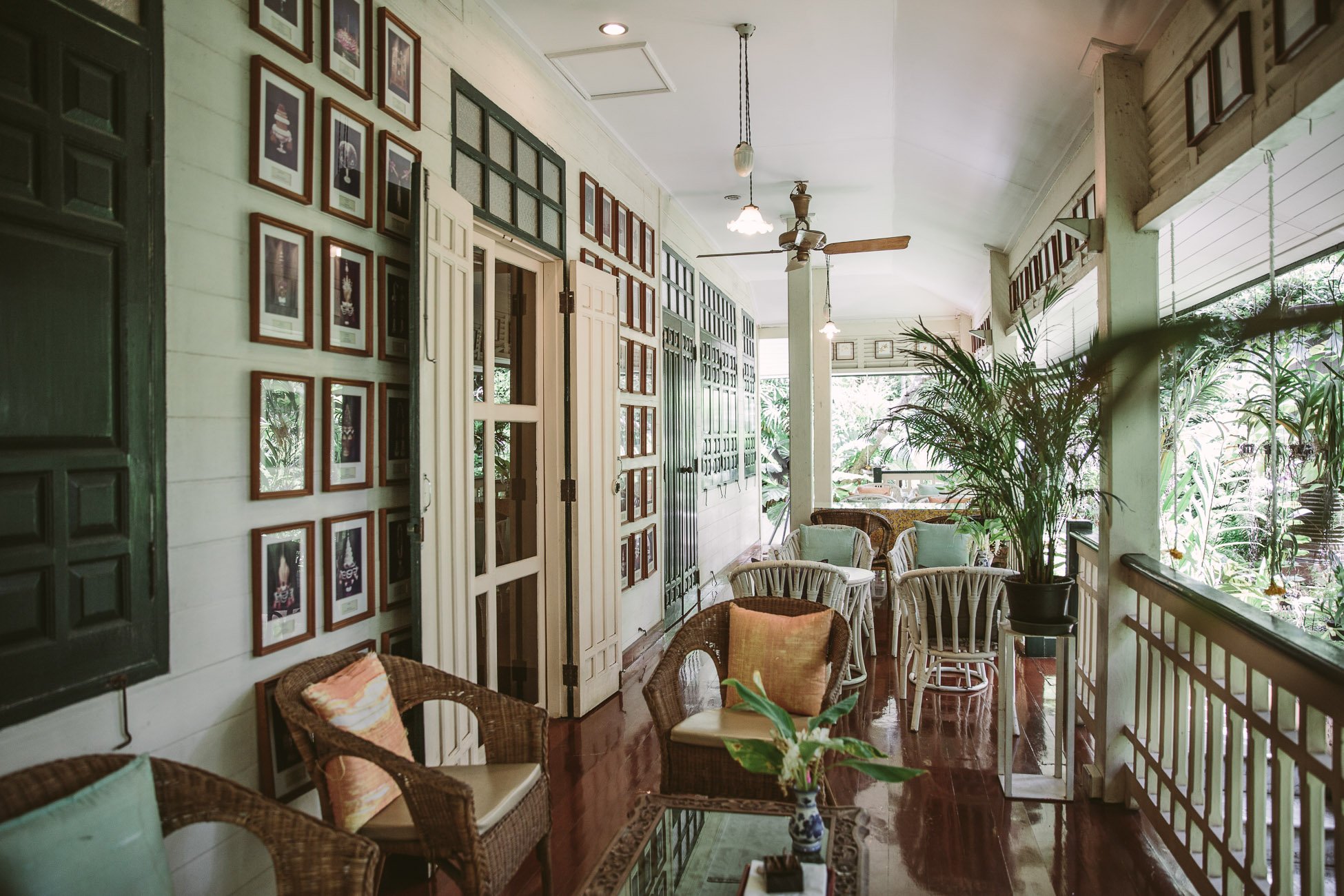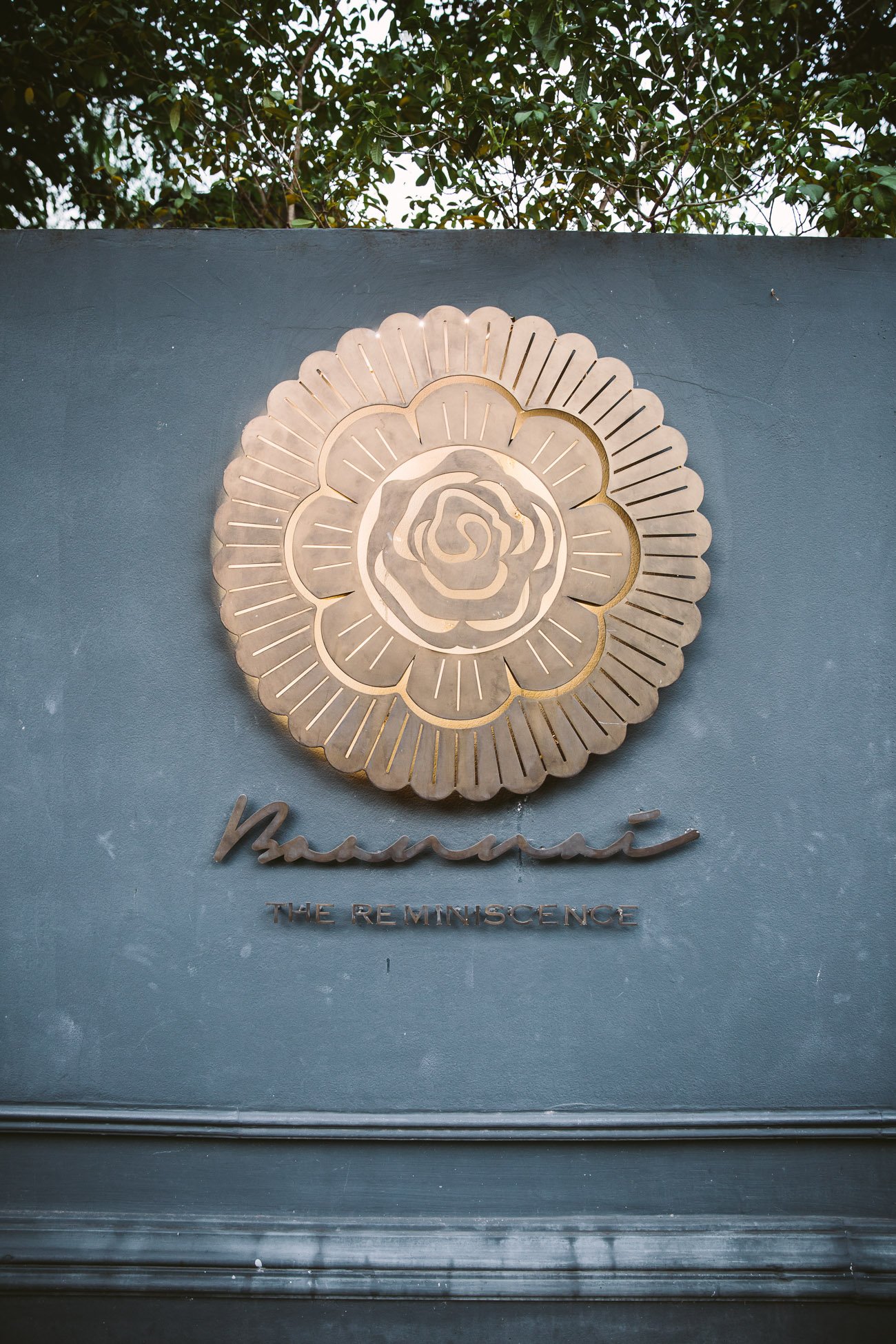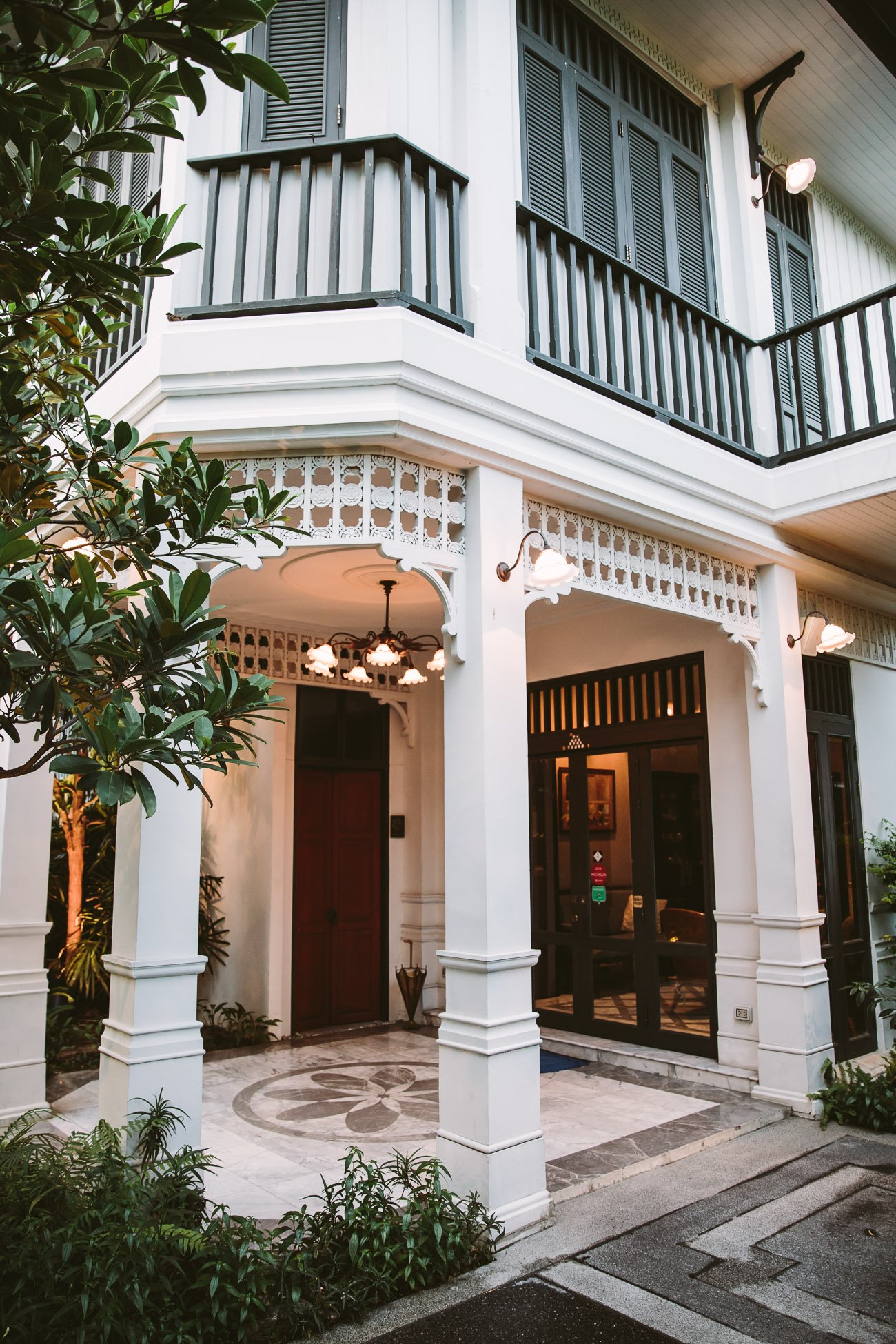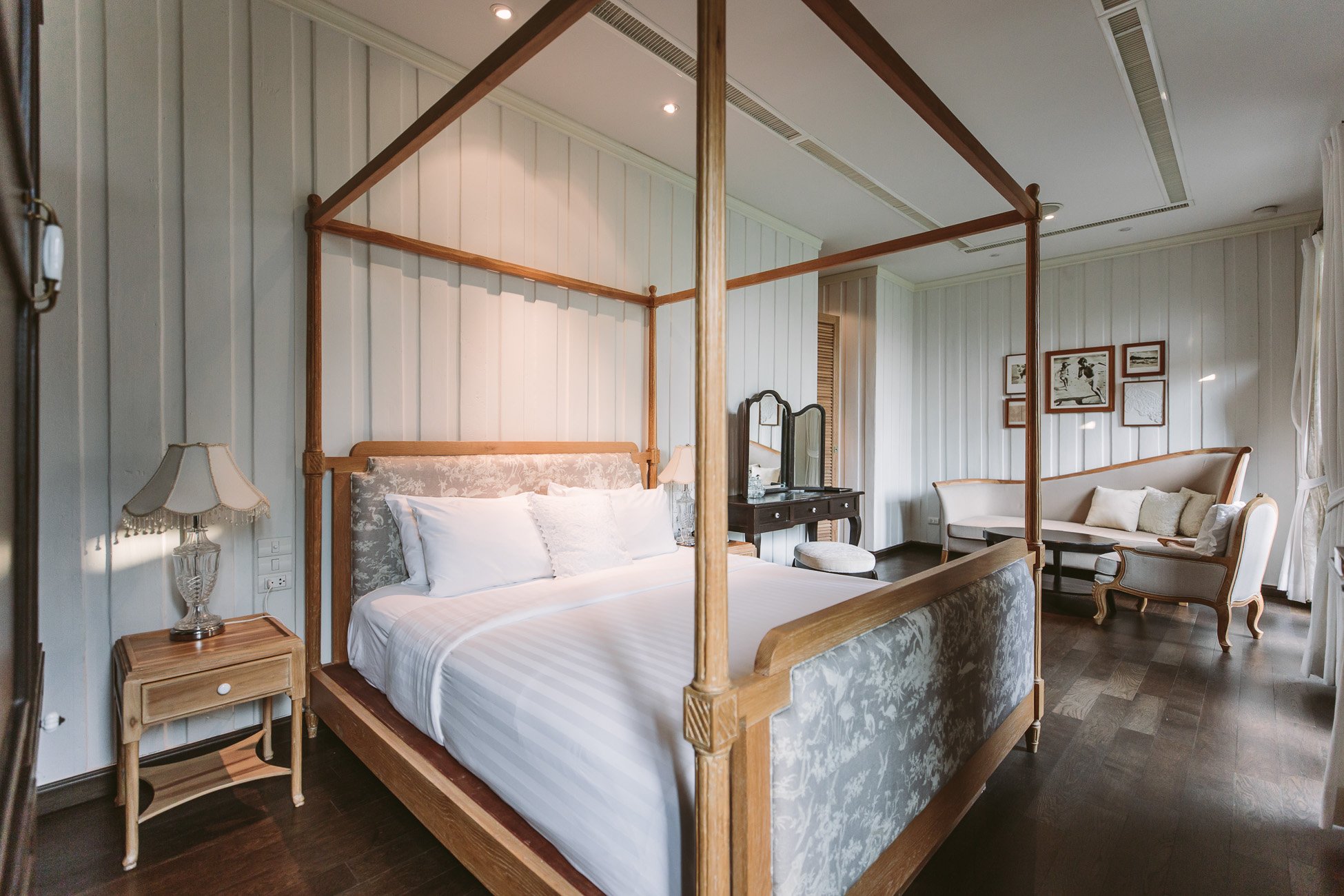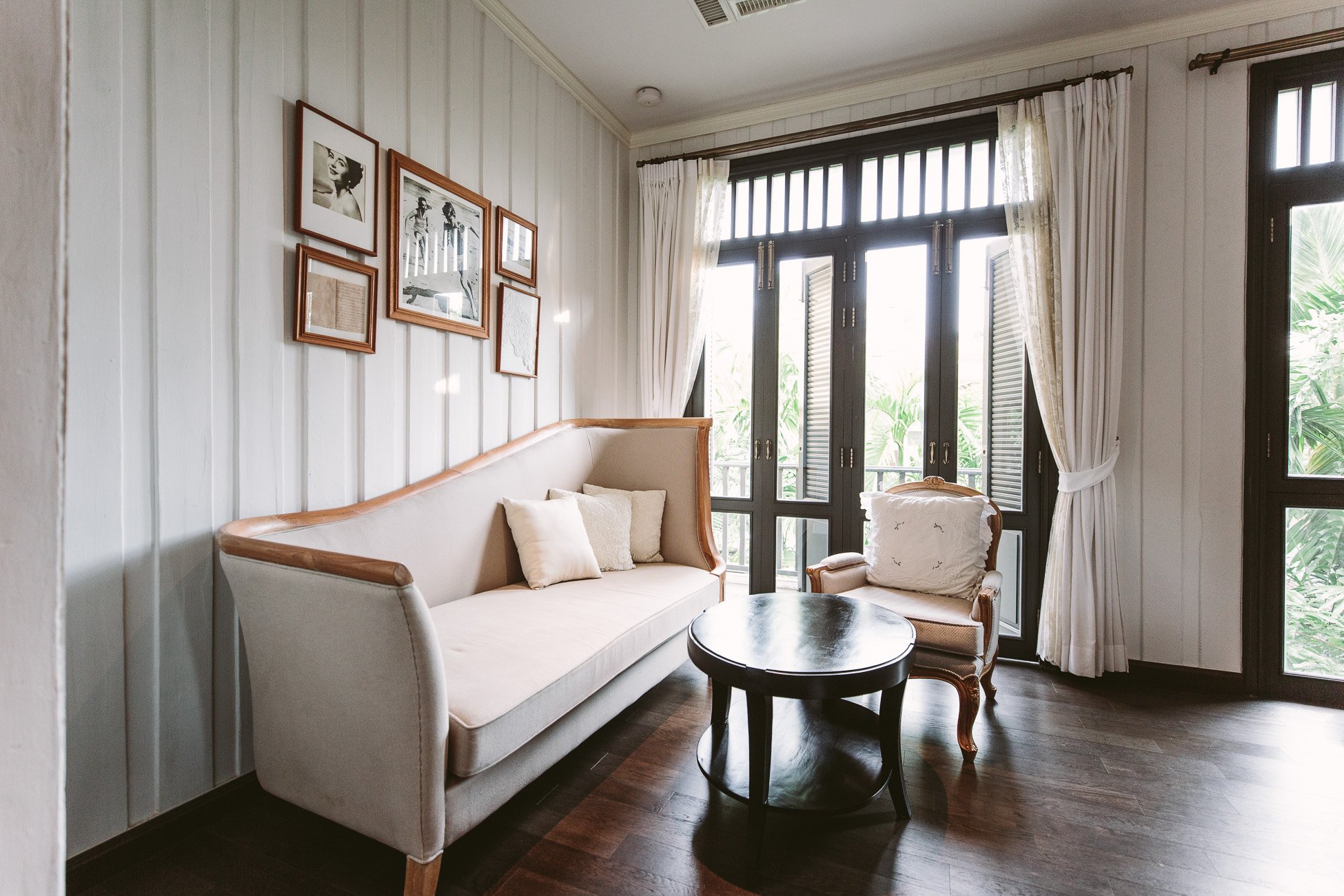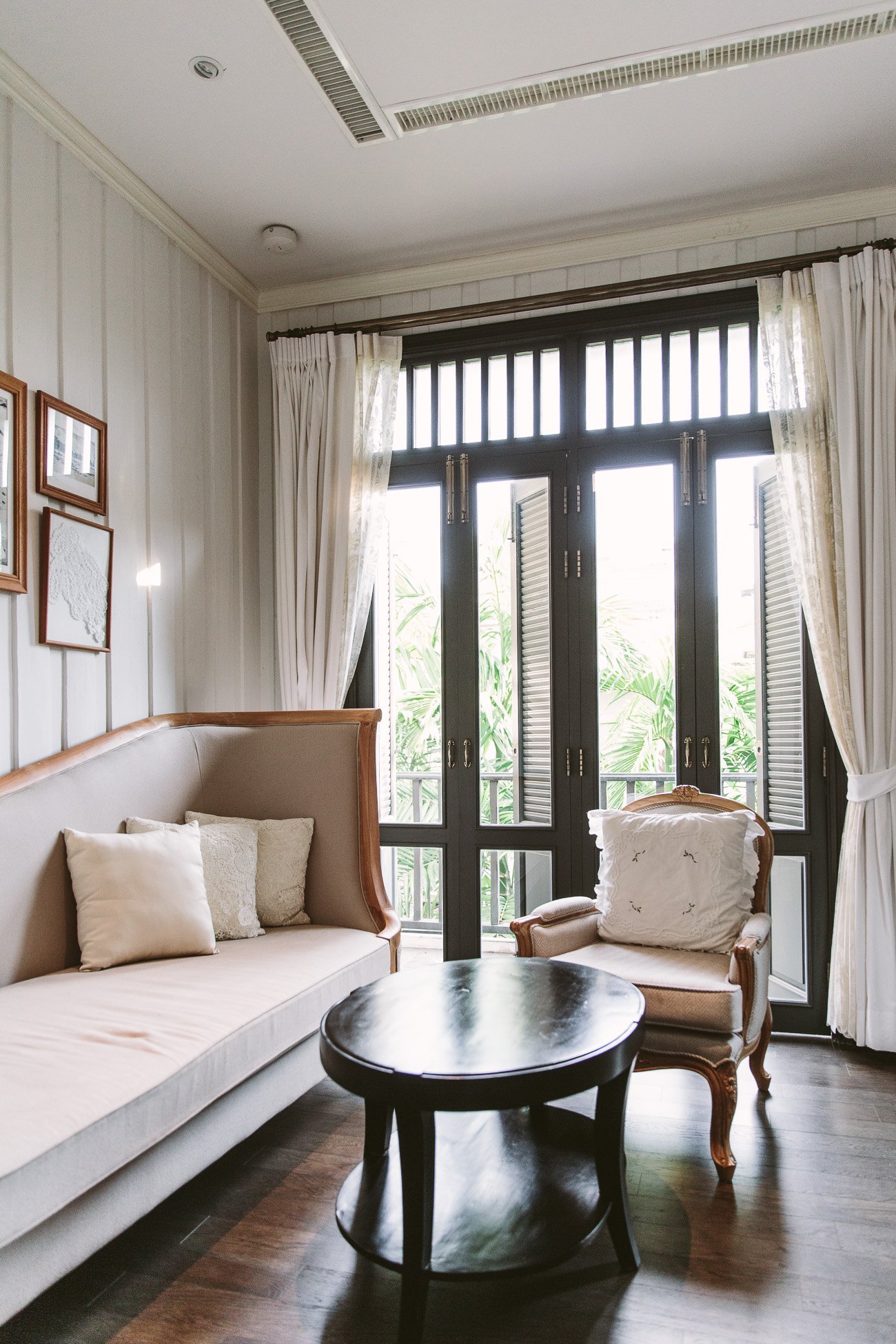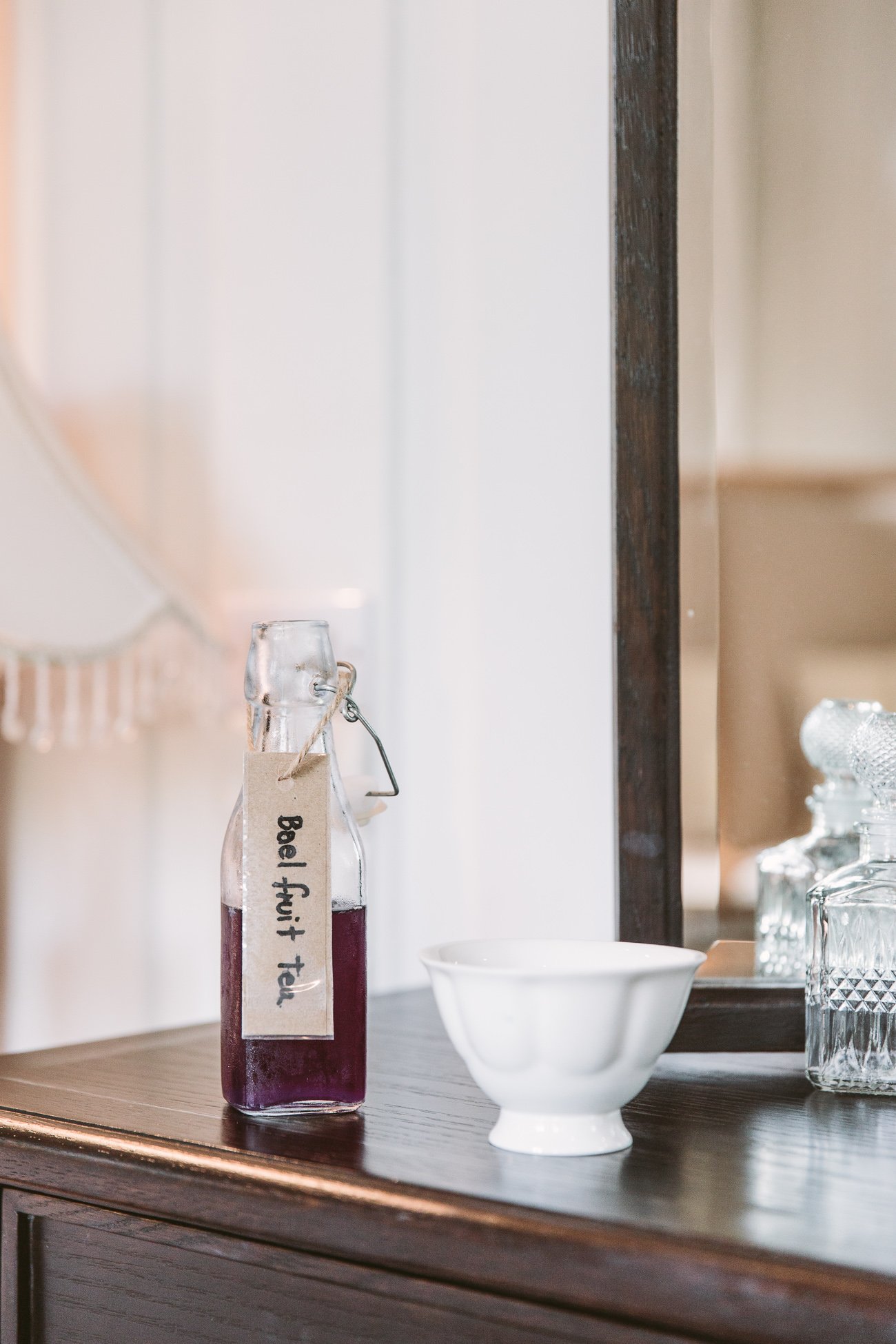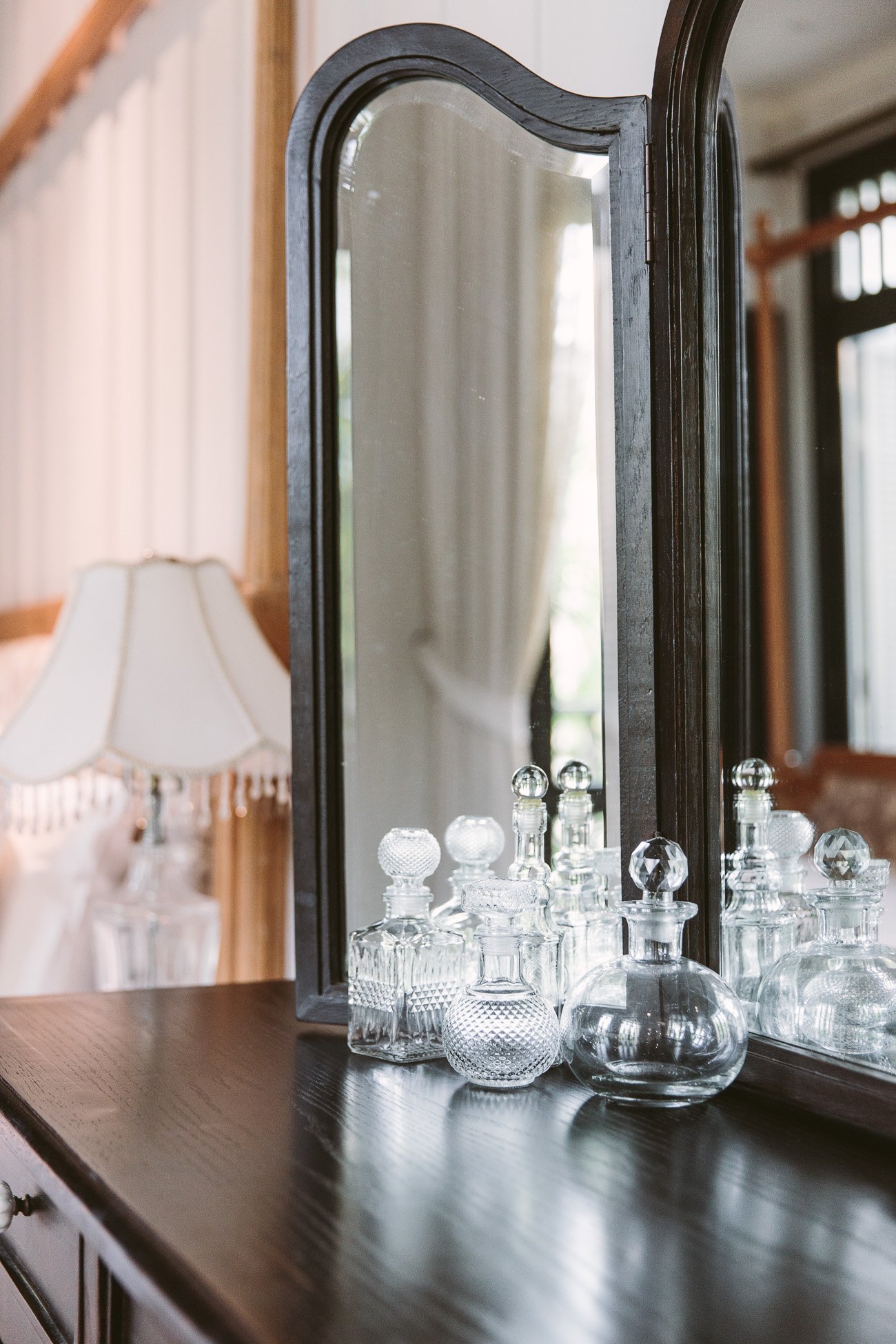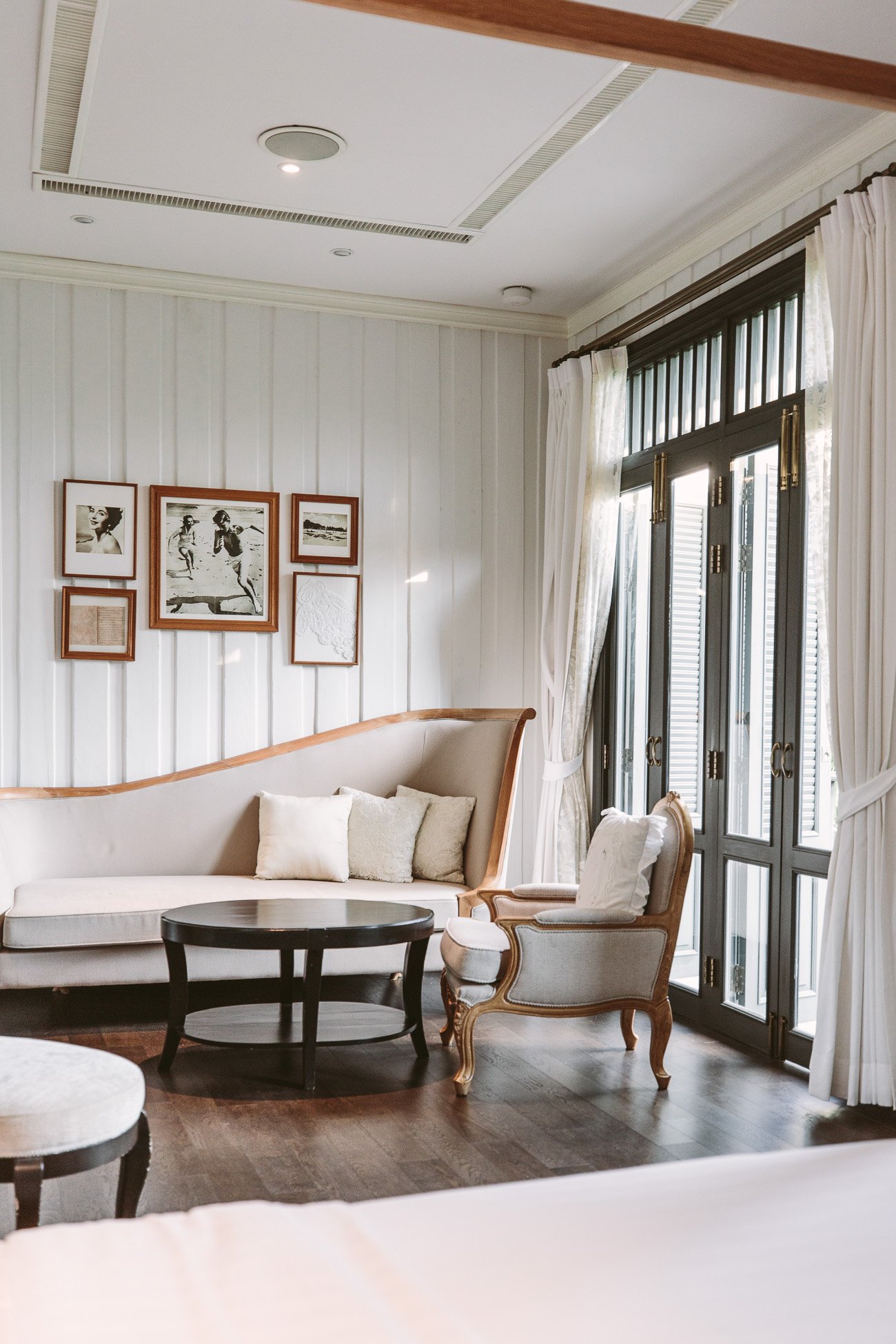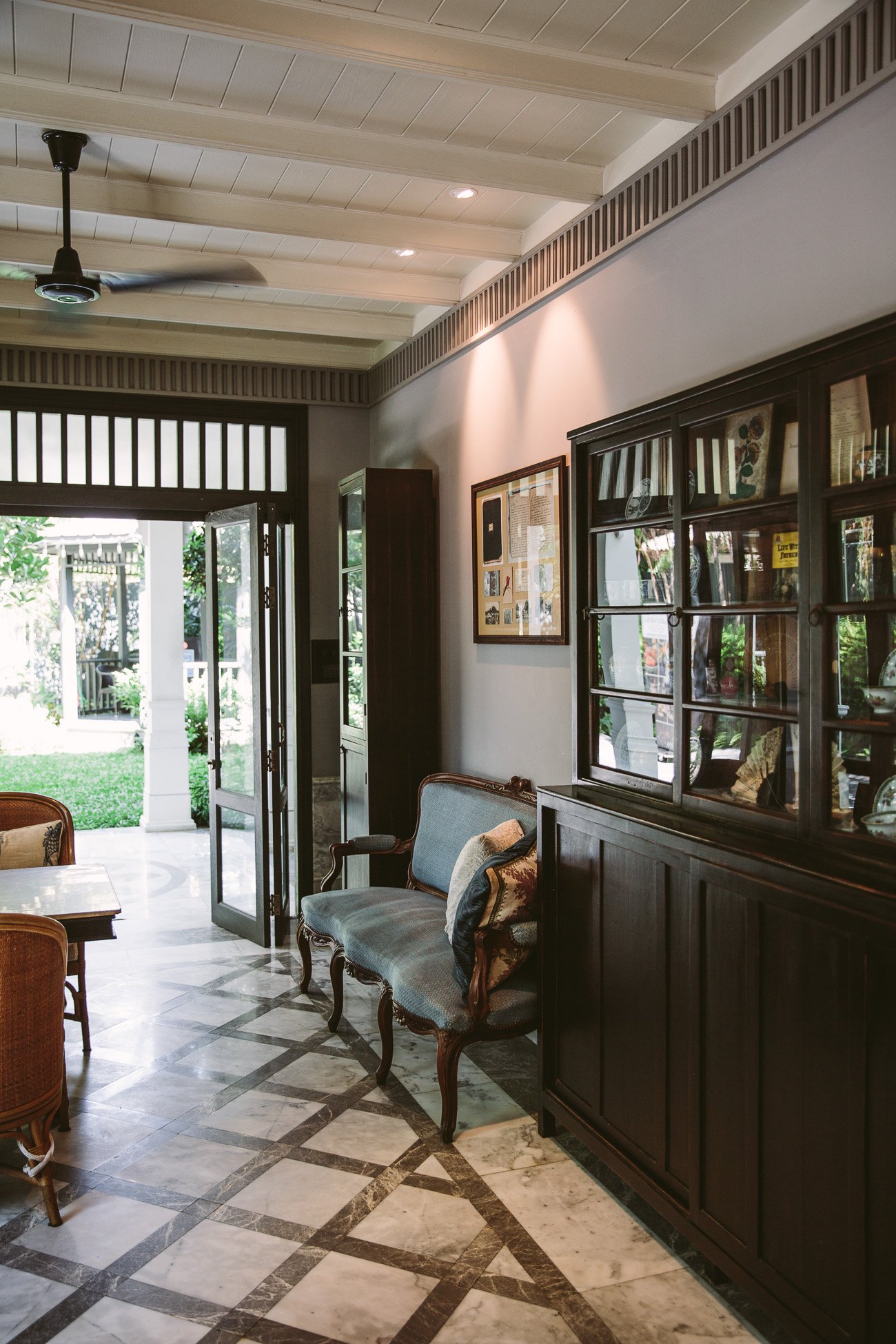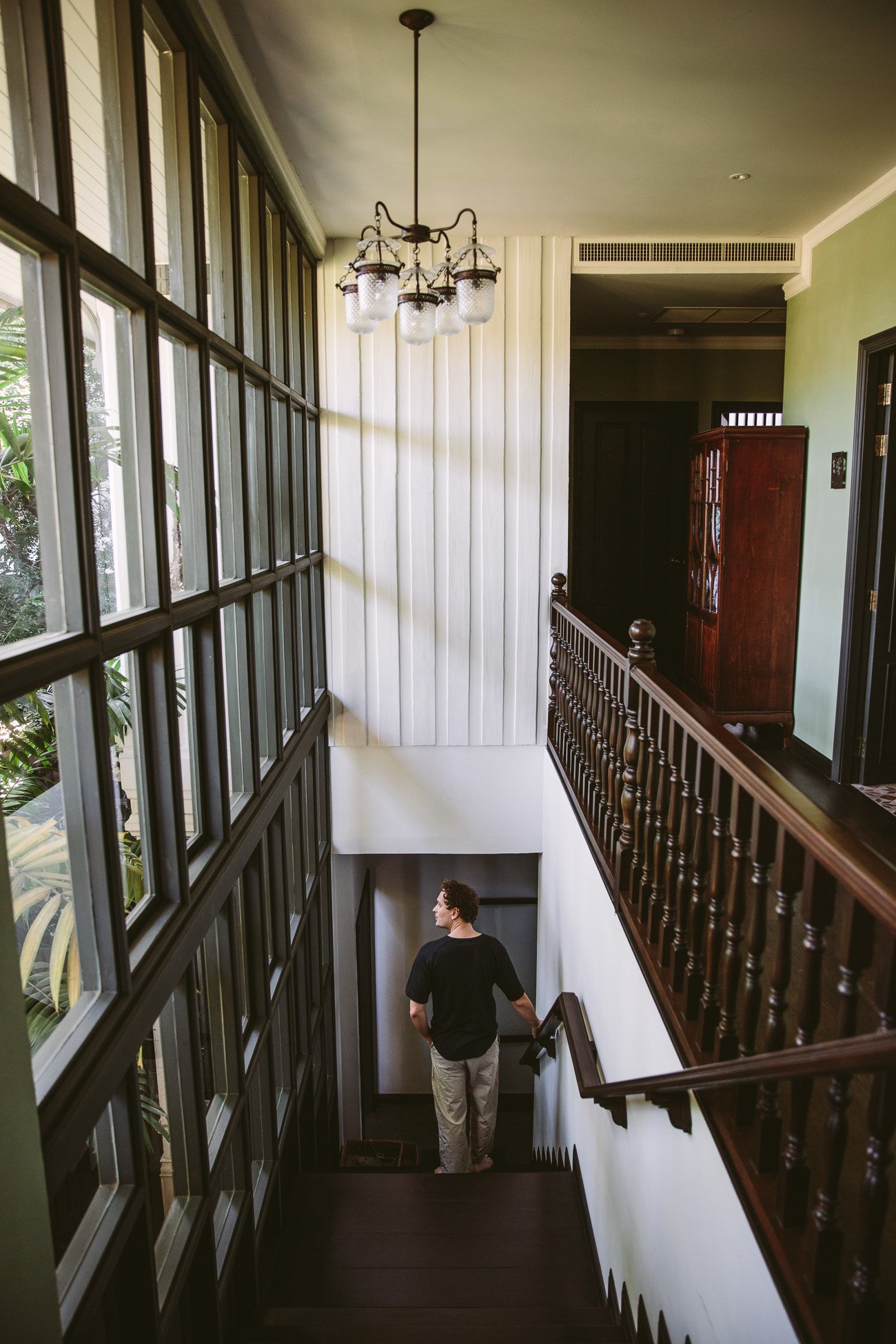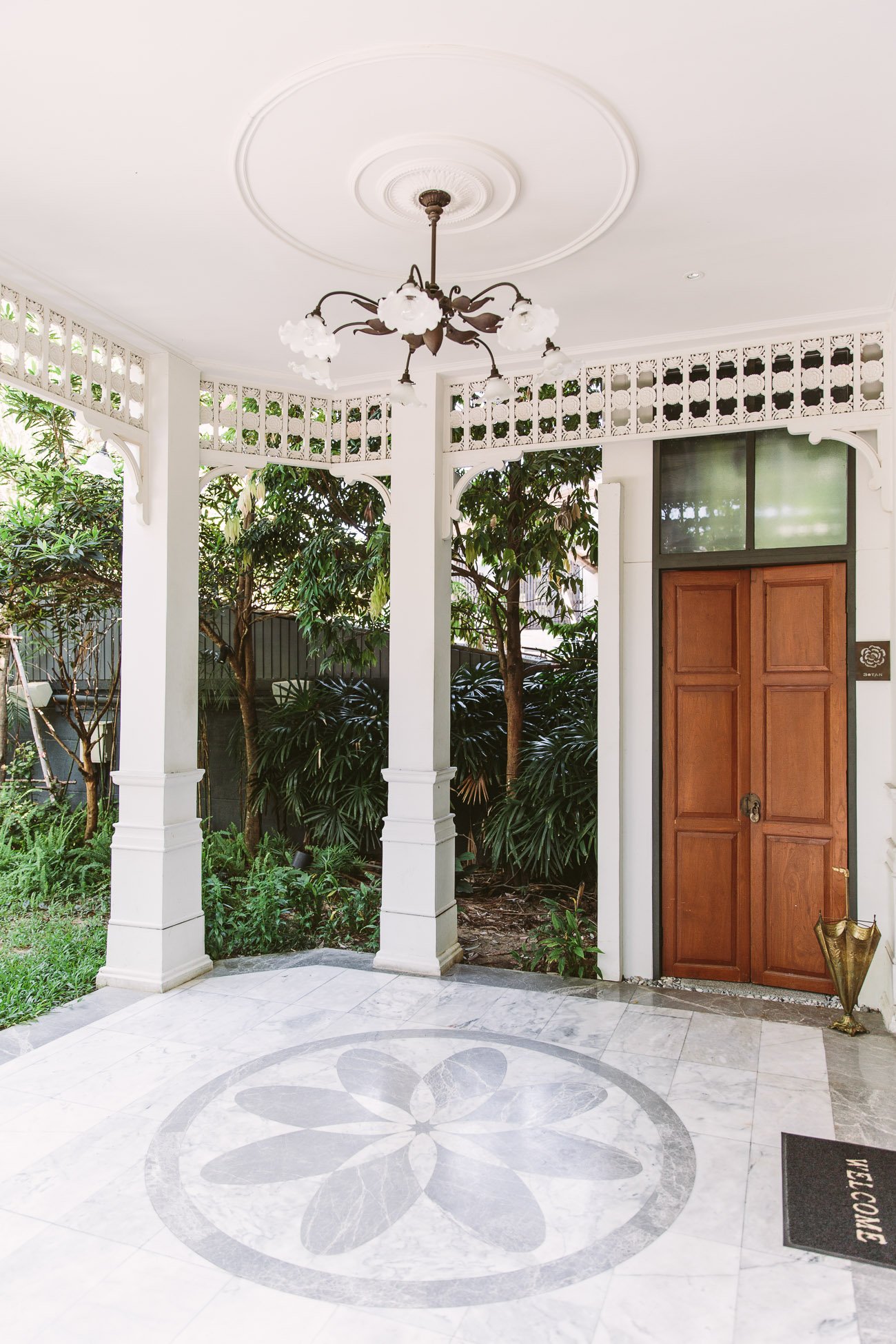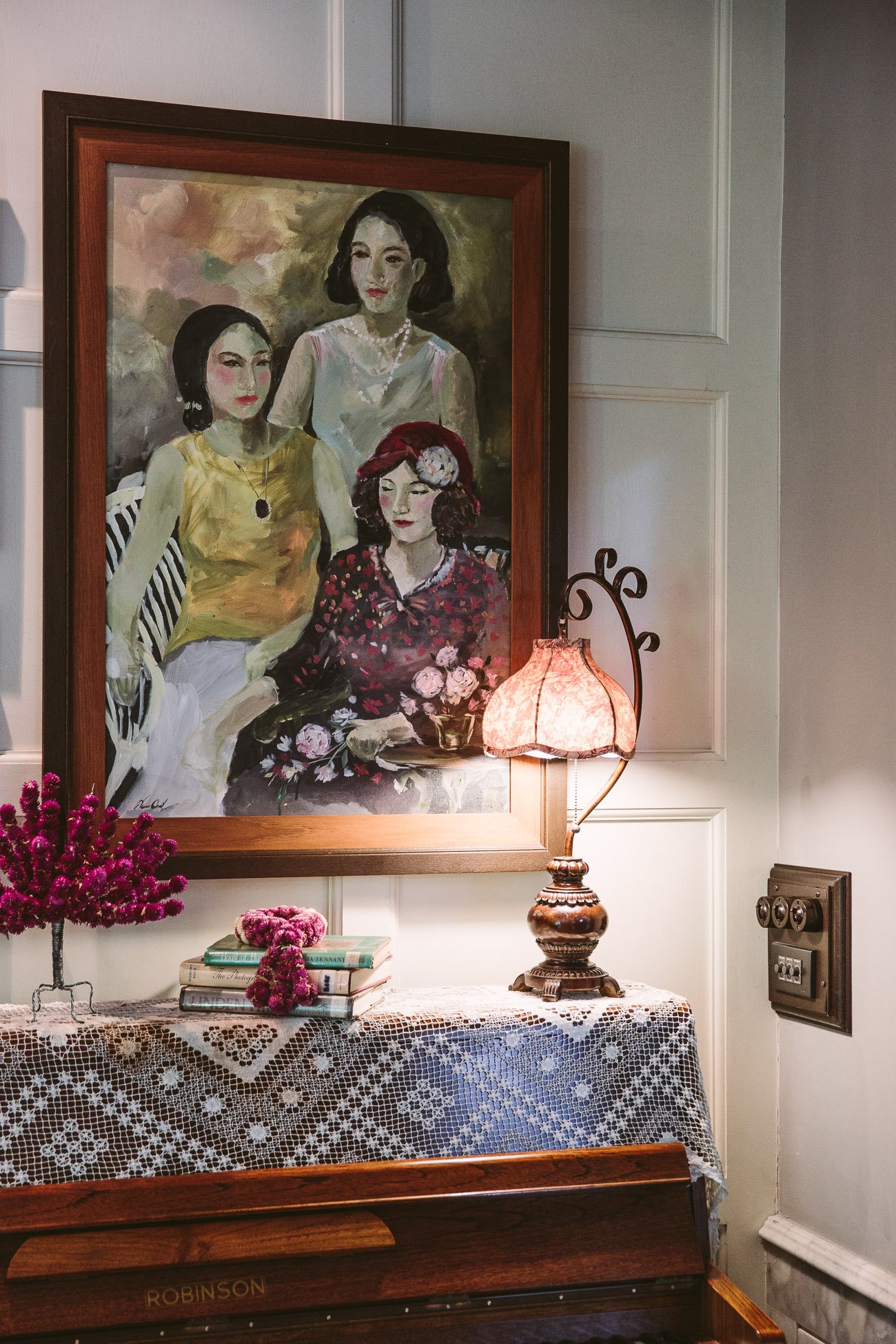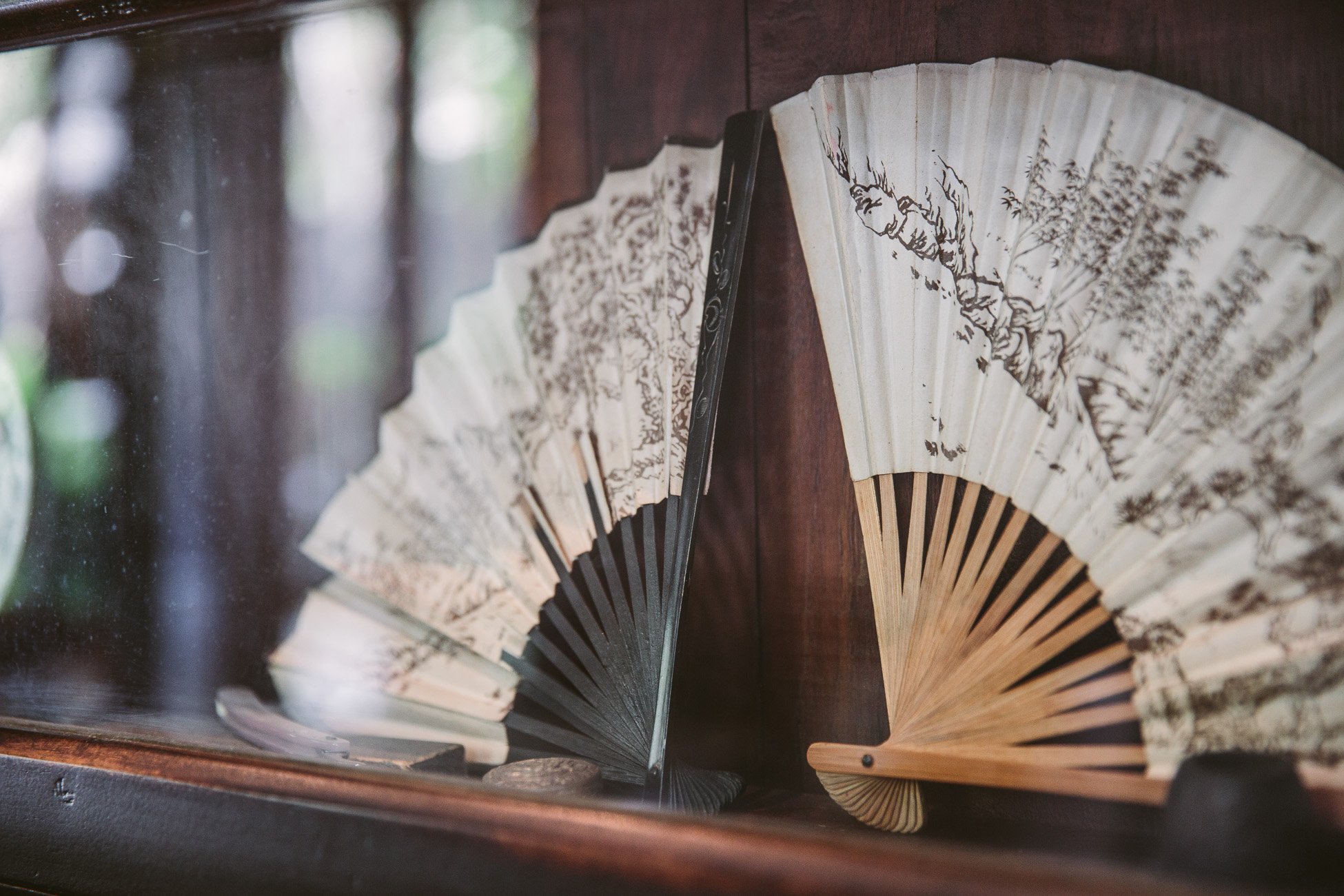If you’ve already been in Bangkok and checked off the classic sights, then you might find it’s time to see a different side of the city. So we decided to go on a quest to discover the old Bangkok and take a journey to see what’s left of the old soul of this massive, overwhelming and ever-growing monster of a city. Let’s see if we find a bit of the heritage of Bangkok!
Modern day Bangkok is ever-growing and expanding, in every direction!
But in-between the modernity there’s pockets of old Bangkok waiting to be discovered.
The starting point
In Bangkok it’s easy to find a modern high-rise hotel with a rooftop pool, but trying to stay at a hotel with history and deeper roots is a bit of a task. When we discovered the small 4-room boutique hotel “Baannai – The Reminiscence” we knew we had taken our first step to uncover a bit of the heritage of Bangkok (more about the hotel further below in this post). Sometimes the places we stay at inspire the journey.
Our colonial retreat in Bangkok: Baannai – the Reminiscence!
A different kind of Bangkok
Upon arrival at the Baannai we felt like we were in a last century version of Bangkok. The colonial building was lit up with a couple of fairy lights and a couple of birds populated the small water fountain in the garden.
Baannai – the Reminiscence, a place with a profound heritage.
The train station across the street was empty with only a single train porter in an old school uniform waiting for the next train to arrive.
A local climbs over the tracks at the train station.
A real street market – not for tourists
After check-in we decided to visit the local street market next to Sam Sen Train station – to see if we could get our hands on some street food. Soon enough we noticed nobody spoke a word of English. We were also the only Farangs (Thai word for white people or Westerners) to be spotted for miles. Turns out we had found suburbia in Bangkok!
The street market at Sam Sen Train station is clearly not set up for tourists.
In this part of the Phaya Thai district you won’t find any skyscrapers or motorways. The small alleys have no streetlights at night and the shops close shortly after it gets dark. The lady at the corner sells her last Mangosteens and coconuts and then covers her sales cart with a canvas and calls it a night. We head back to the hotel and can’t quite comprehend the calm and quiet of this area.
In this neighbourhood Bangkok feels a bit more like rural Thailand.
From here on we are getting ready to explore some sights, that aren’t on the regular Bangkok visitor’s map!
Never a colony – always independent
Although Thailand was never colonised by any European power, there were tight business relations between the Thai kingdom and the imposing colonising superpowers of the West. It’s like Thailand managed to get the best of both worlds – their independence, but the economic benefits from trading with the West. Bangkok was at the center of those trade routes and therefore you can still find colonial and historic architecture all over the city.
When seen from above Bangkok looks like a modern metropolis, but the history isn’t completely lost.
Our heritage discoveries
- Jim Thompson House – Thai-style teak houses by American entrepreneur Jim Thompson.
- House on Sathorn – 128 year old colonial mansion, now an elegant hotel restaurant.
- Museum of Floral Culture – a converted colonial building that houses floral art & designs.
In hidden alleys there are some rare gems to be found when trying to discover the heritage of Bangkok!
1. Jim Thompson House
This is obviously not a colonial building, but a museum consisting of 19th century Thai-styled wooden houses by what used to be the “Thai Silk King” Jim Thompson.
Taking photos inside the building is forbidden, but this staircase gives away a bit of the amazing interior!
Jim Thompson was an American businessmen who first and foremost exported Thai silk to the US, but who was also an avid collector of Southeast Asian art and antiques. He also “collected” the houses for this museum in Thailand’s countryside, dissembled them and transported them to Bangkok via boat where they were reassembled. But only a couple of years after the museum was finished Thompson disappeared in the jungle of Malaysia and was never to be seen again.
Adjacent to the House there’s also a restaurant at a Koi pond and a silk souvenir shop.
The story of Thompson’s disappearance makes for some mystery, but the museum and the surrounding park itself are a wonderful oasis in the middle of Bangkok’s modern centre and give a glimpse into the history of the city and it’s glorious trading days.
Our tip:
Wear sandals, as you’ll be asked to get off your shoes before entering the house.
Silk production on display at Jim Thompson house – not for vegetarians!
2. House on Sathorn
This building is the perfect depiction of the contradictions of old and new in Bangkok. The formerly royal mansion is now surrounded by ultra-modern skyscrapers and feels like it has fallen out of place and time somehow.
A colonial villa amongst glass skyscrapers – this is the epiphany of Bangkok.
When the “W Hotel” bought the building it belonged to the Russian Embassy and today it’s part of the hotel and houses a posh restaurant, bar and conference rooms. Sitting in the courtyard surrounded by lush greens and the colonial structures a short view up let’s you realise how much has changed in Bangkok in the last decade alone.
Our tip:
Have lunch here when you need a break from Thai cuisine (the Gnocchi are to die for!) or just sip one of the amazing cocktails.
We enjoyed our lunch break with some oven-fresh bread, burrata and tomatoes and a beet salad.
3. Museum of Floral Culture
Let’s put it this way: The Museum of Floral Culture is quite an exotic flower in the collection of Bangkok’s museums. It is solely dedicated to the art of floral design and arrangements and gives a glimpse into the different Southeast Asian traditions and ancient customs when it comes to celebrations and decorations with flowers. The museum cannot be visited without a tour, because otherwise one would hardly understand the meaning of most of the flower objects on display.
The museum of Floral Culture is quite an exotic museum, with a wonderful villa & park.
The highlight for us was definitely the building itself and getting access to an old colonial villa in a very original state (no AC in many rooms) plus the lush and wonderful adjacent garden. We must say this is only for enthusiasts though – one could also call this museum rather quirky! (We only discovered it thanks to a tip of the Baannai hotel owner who is really into colonial architecture and history.)
While the museum itself wasn’t that interesting for us (we’re not into floral arrangements),
the architecture and garden were stunning.
The verdict:
Only visit this museum, when you’re either into the art of flower arrangements or really like colonial architecture. Or you come here to sit on the veranda and drink a tea and skip the museum all together! 😉
The Salon du Thé of the museum might be an alternative if you don’t want to get a guided tour of floral arrangement history.
Our Tip:
If you want to discover more buildings you might find the app “European heritage map of Thailand” helpful – there are heaps more interesting finds in there.
Our hotel: Baannai – The Reminiscence
There’s a wonderful story behind this hotel. The house used to belong to 3 sisters, all strong and independent women – different, but united in one thing: They were never married. Together they shared the household and explored the world from Bangkok. Today the house belongs to the grandniece of the 3 sisters. She’s called “Doungsawart” and quit her job as interior designer to open the “Baannai – The Reminiscence” hotel. You can sense her unique taste and feeling for the heritage of the city and her grandaunts.
The Baannai hotel exudes old world charm and the history of it’s owners.
We stayed at one of the only 4 rooms called “Kularb”, which has a huge balcony overlooking the courtyard, a bedroom and an adjacent dining room. The minibar is filled with fresh homebrewed ice tea (complimentary) and the wooden floor creaks under your soles. Because, yes, you have to get out of your shoes before entering the upper floor of Baannai. It truly feels like a homestay – with the added benefit of having a star-decorated restaurant in the ground floor.
The history of the 3 sisters who lived at Baannai has been translated into a wonderful boutique hotel.
The verdict:
This is the perfect place for people who appreciate personal service and getting a sense for a place’s history and heritage. You won’t be happy here if you’re looking for anonymity and modern architecture.
Disclaimer: We were invited to stay at Baannai – The Reminiscence, but our views of the hotel stay independent from that invitation.

